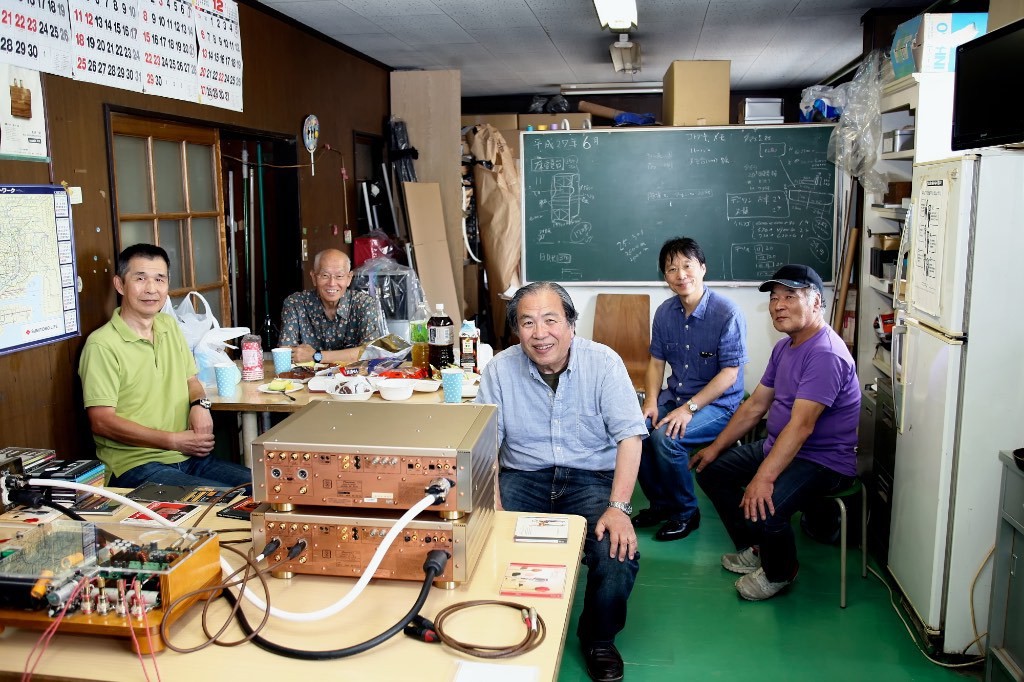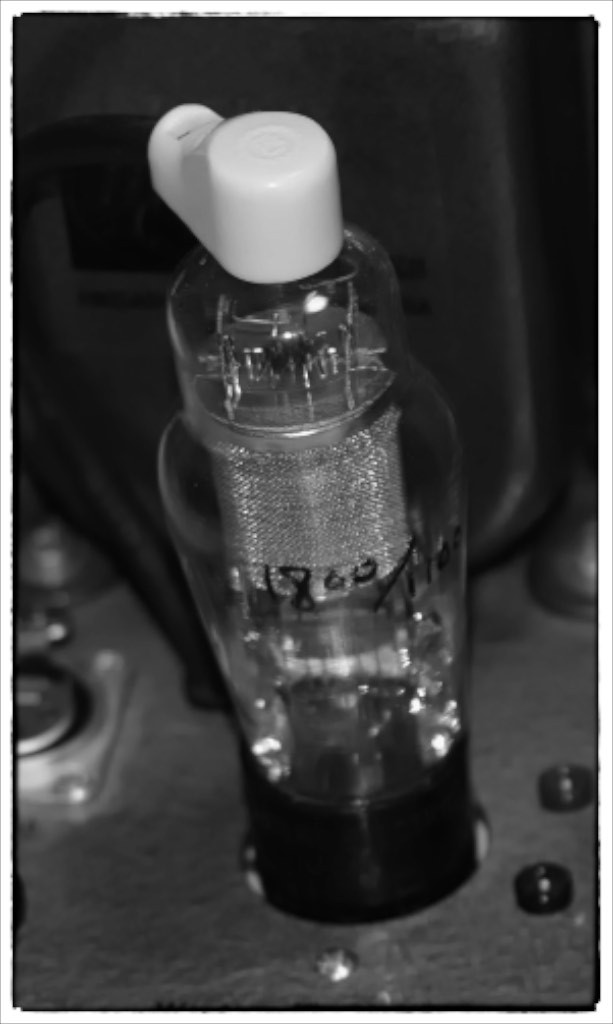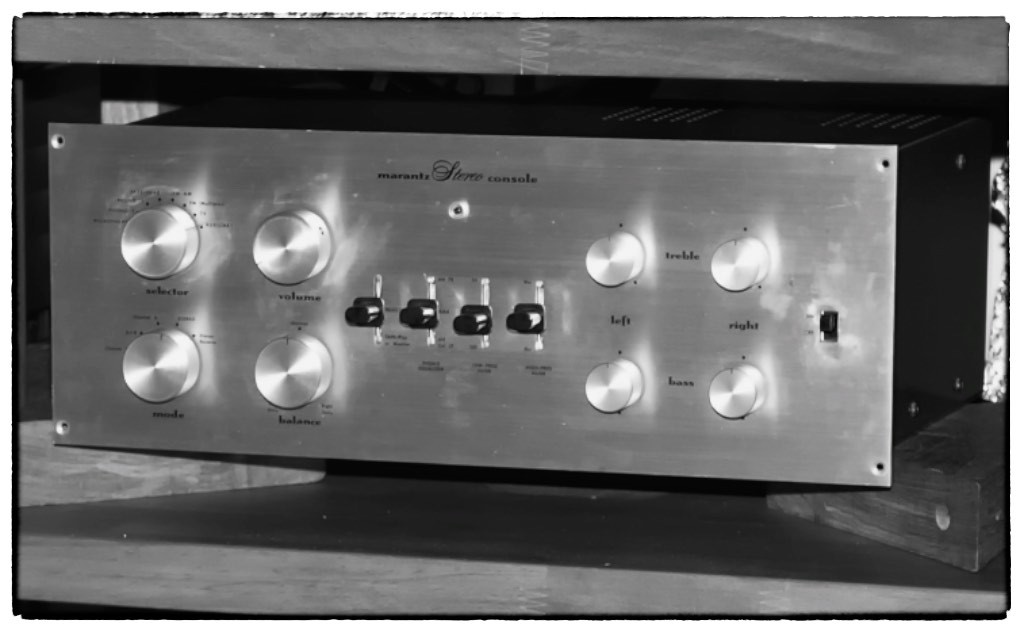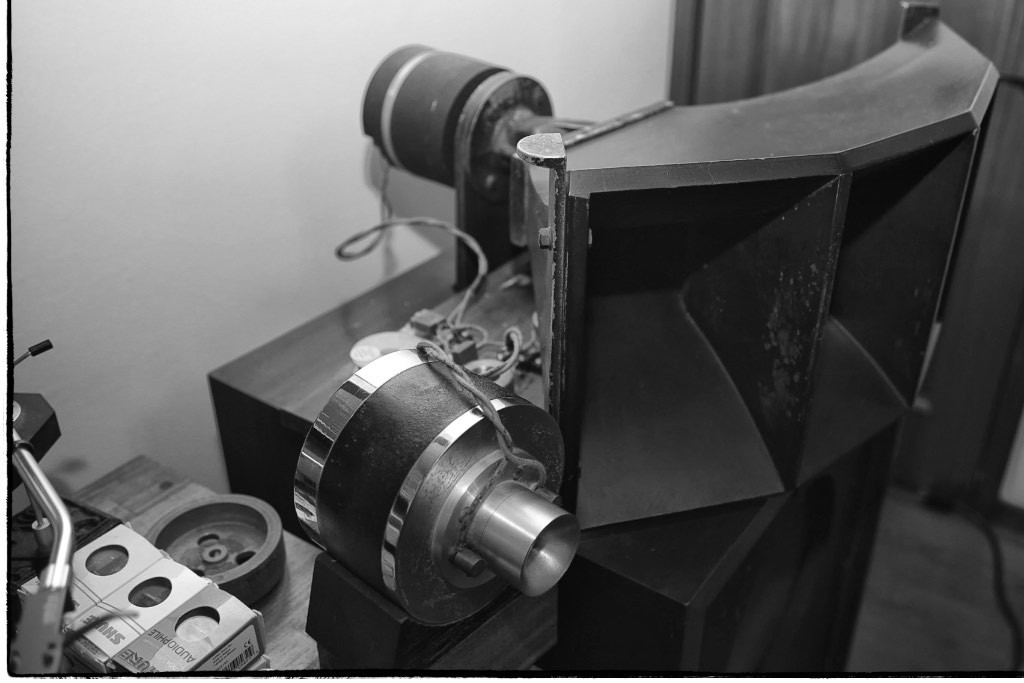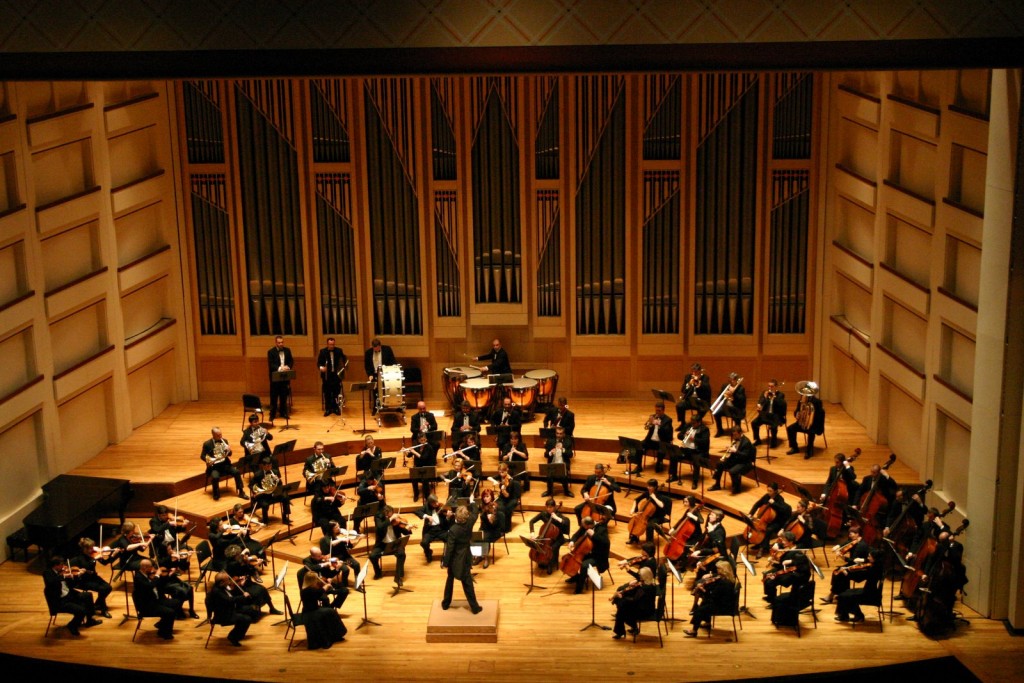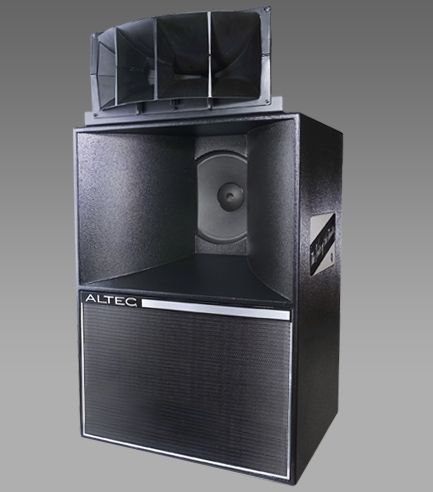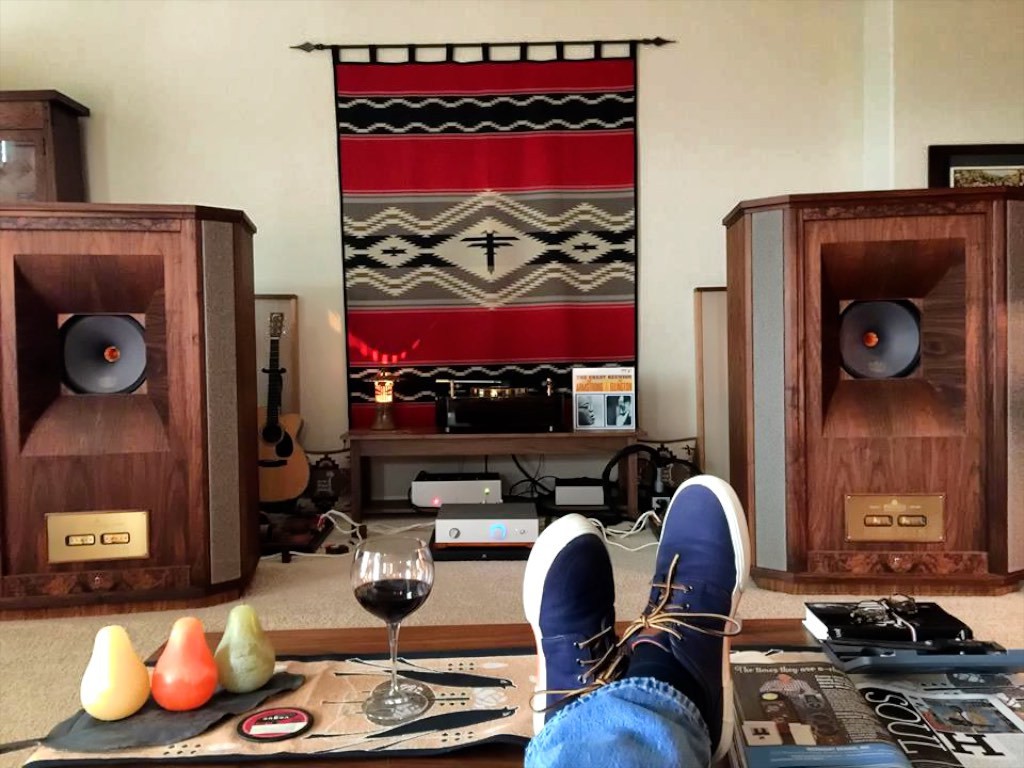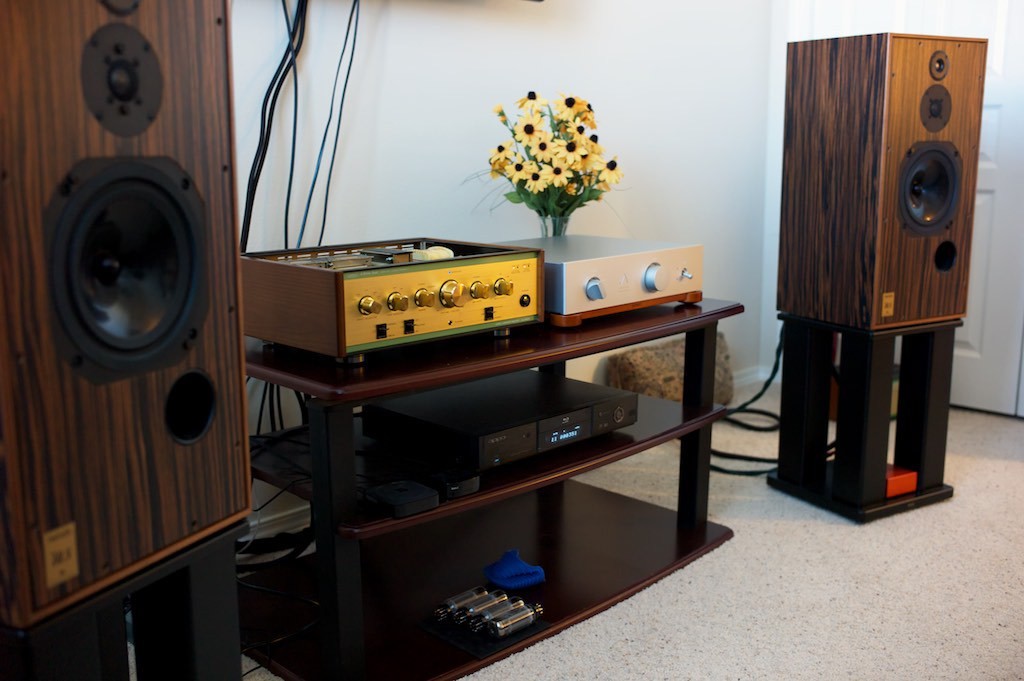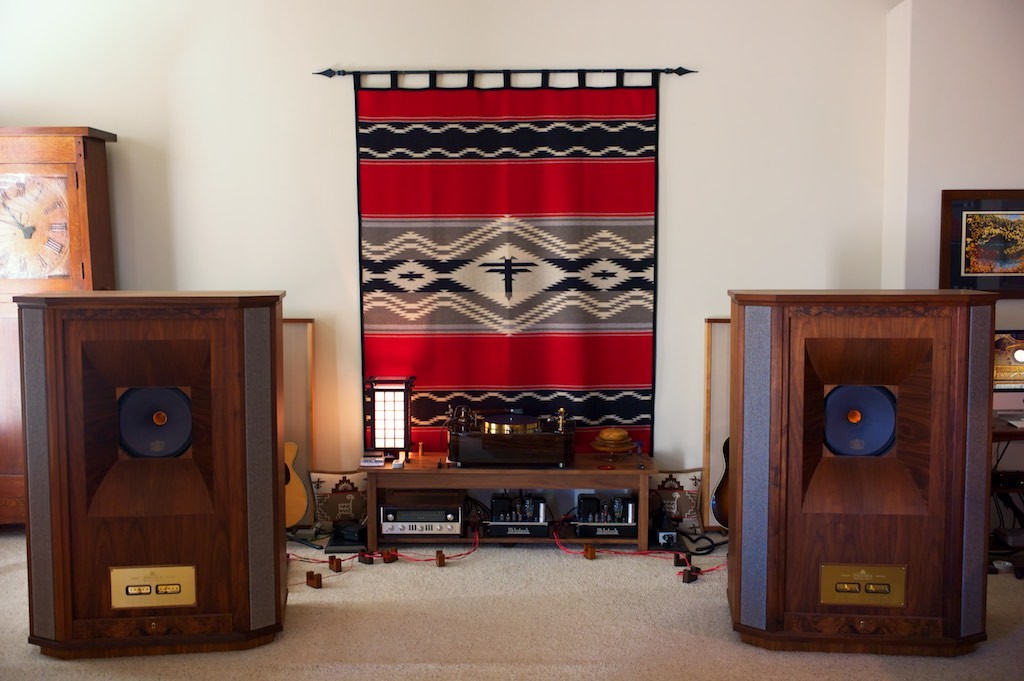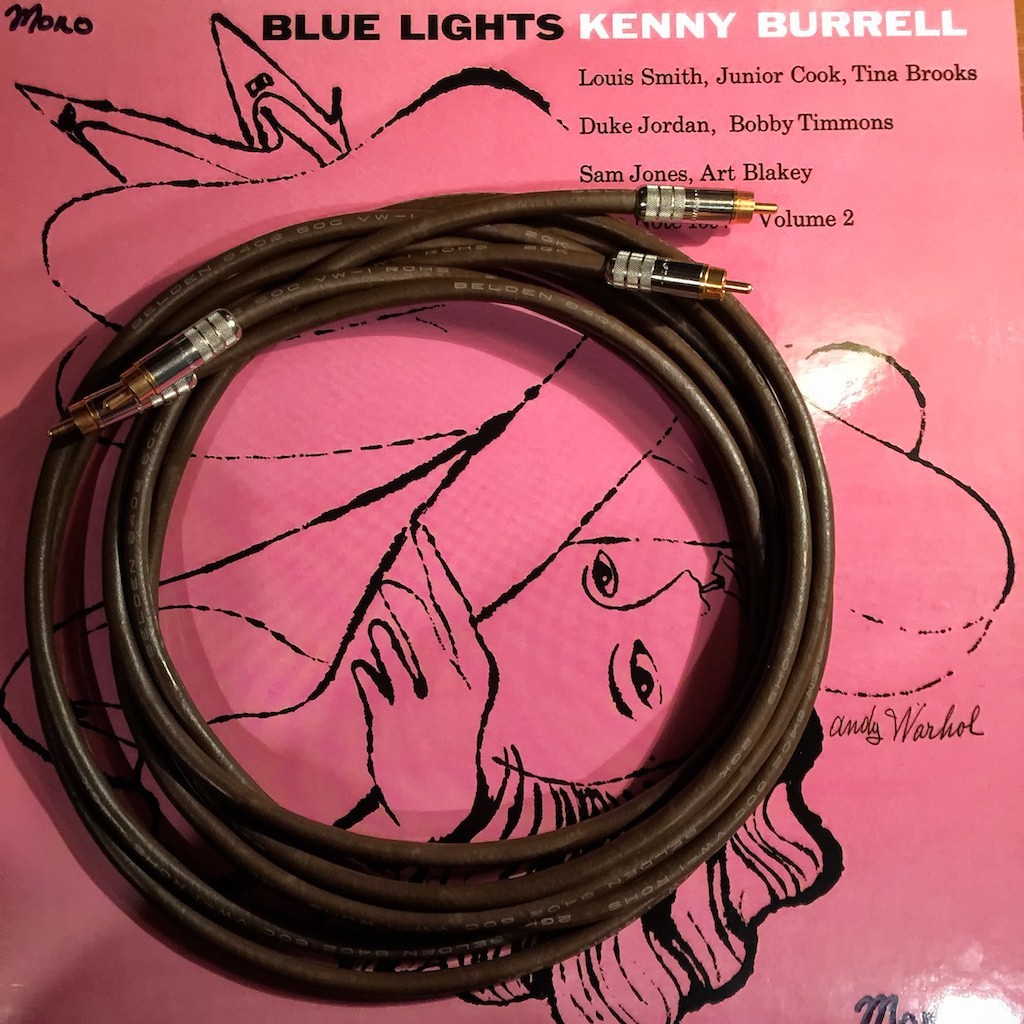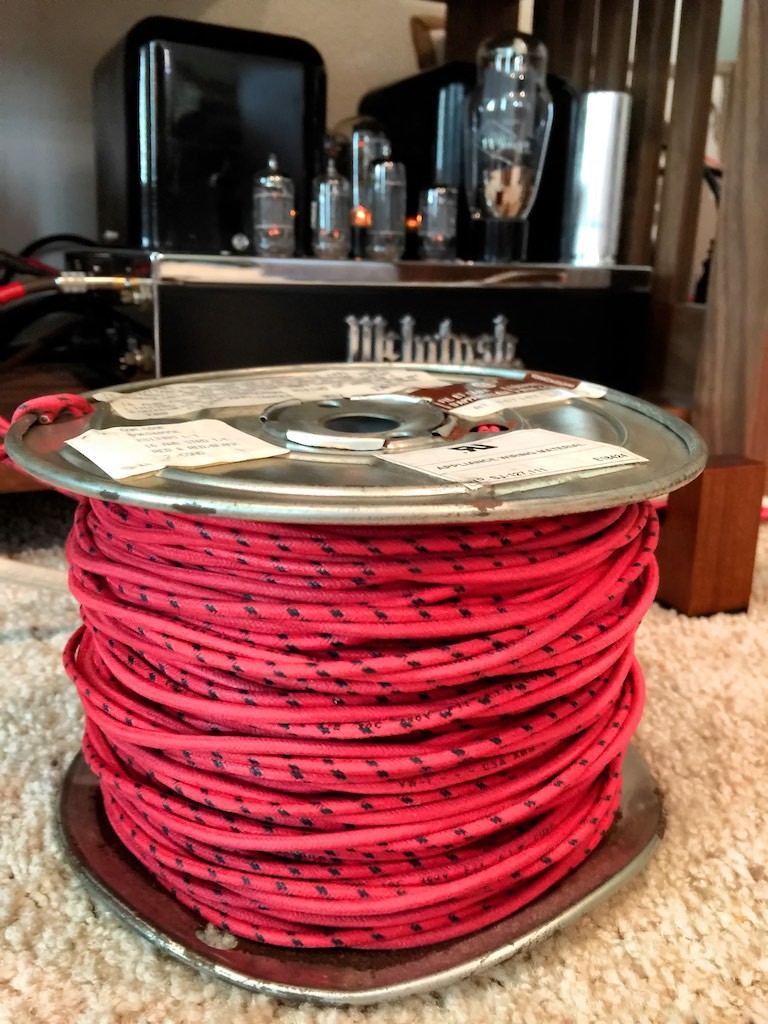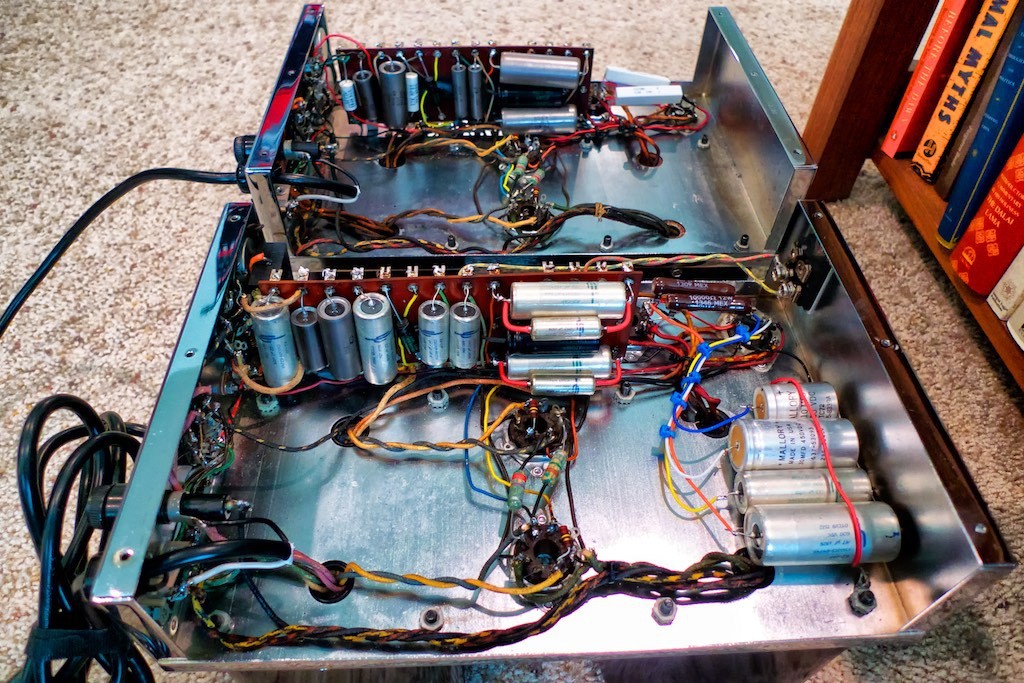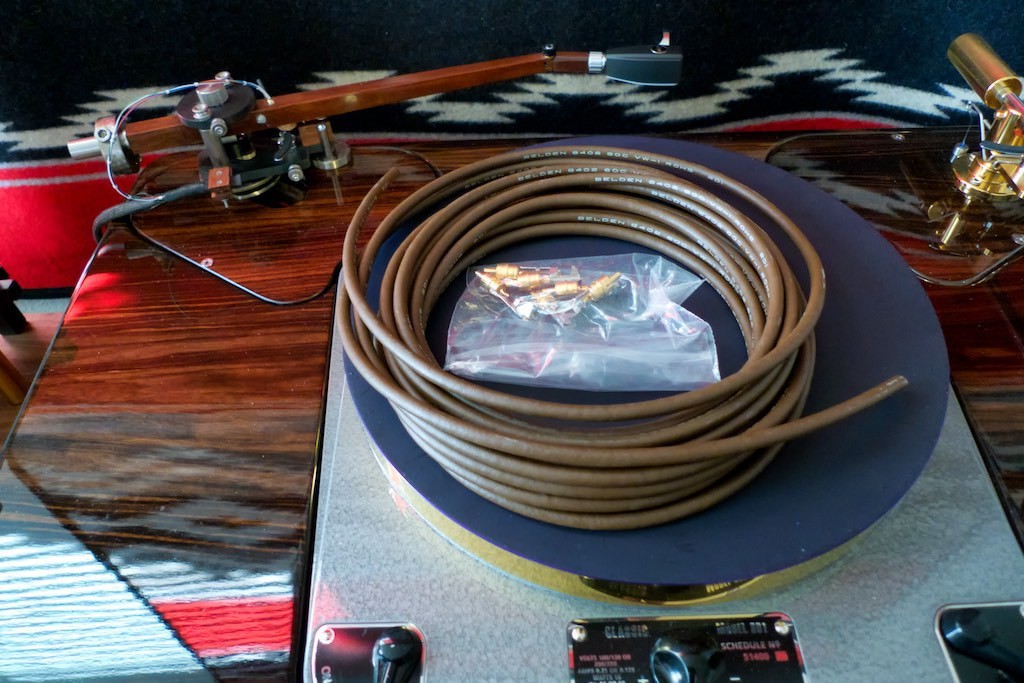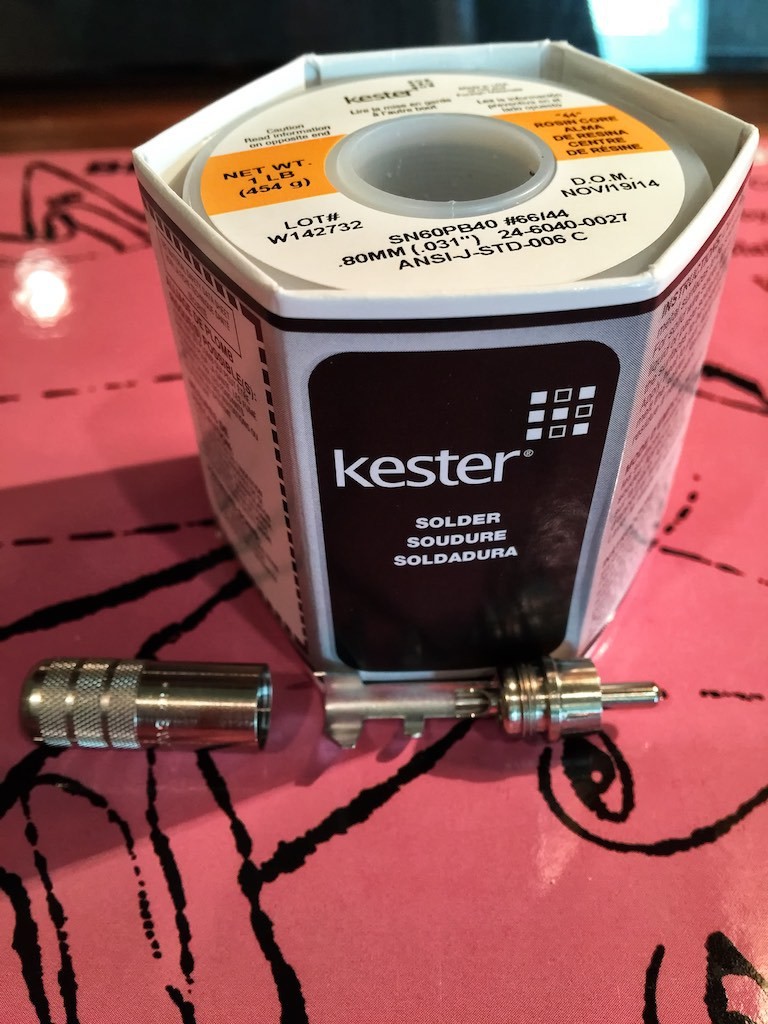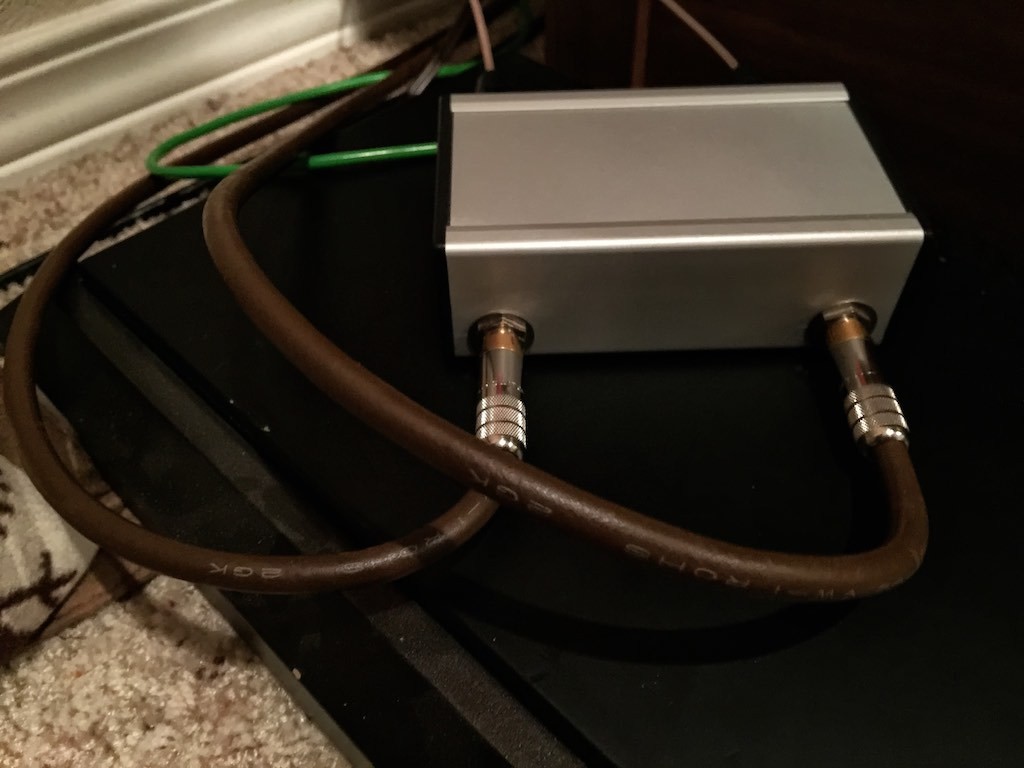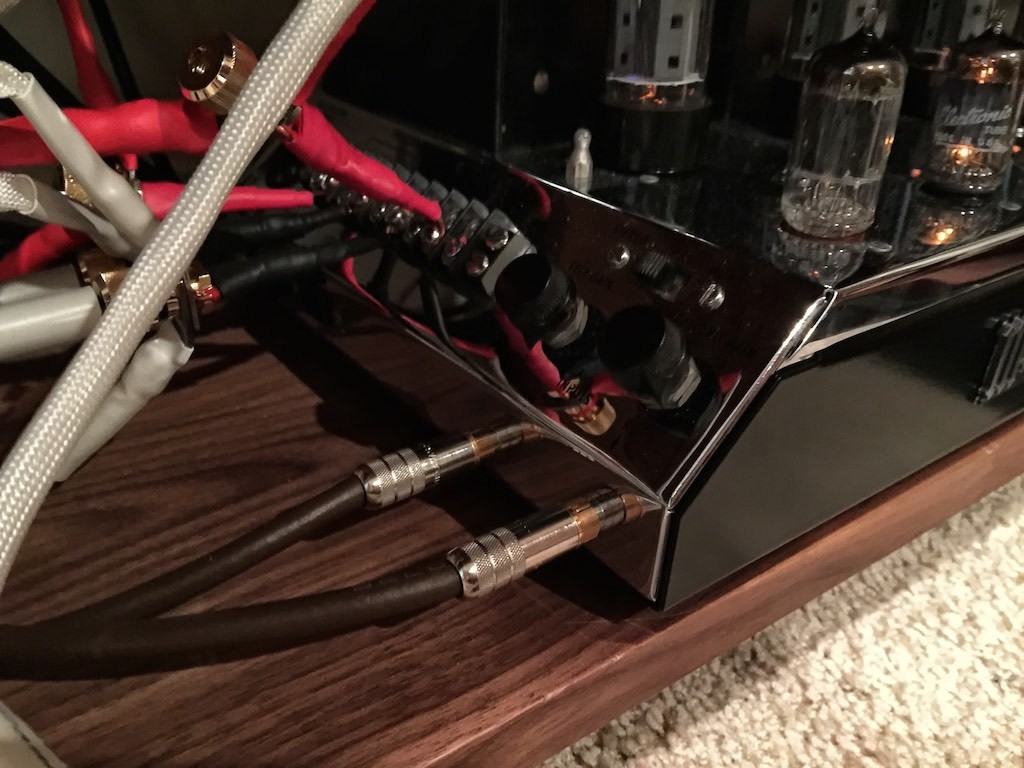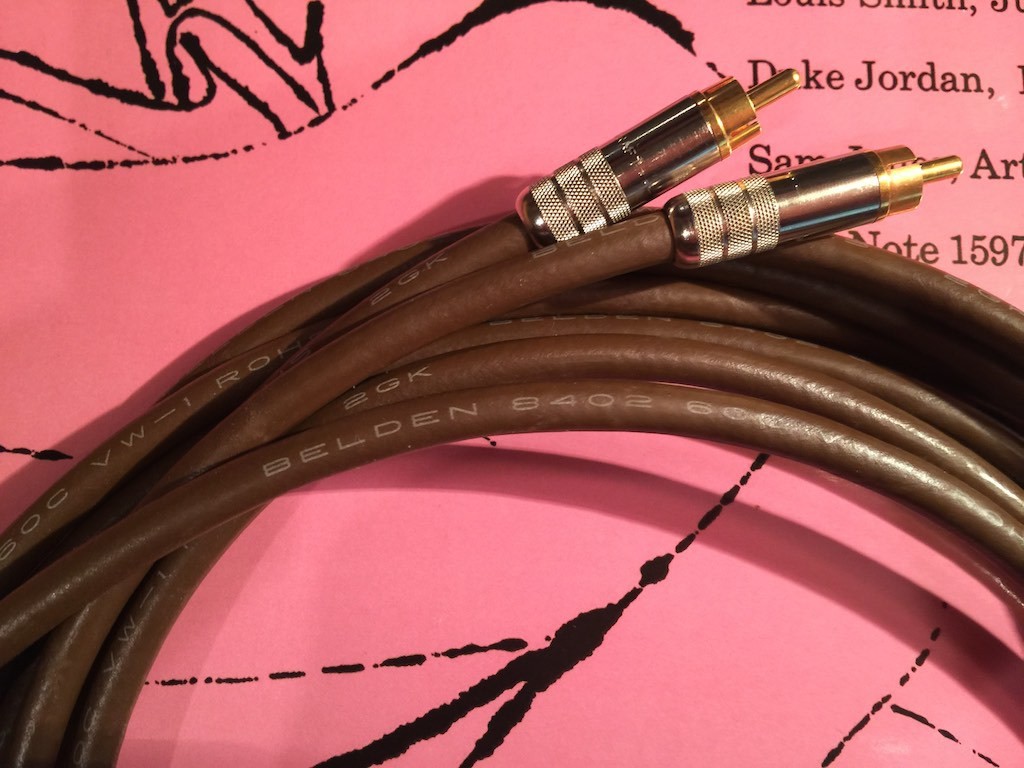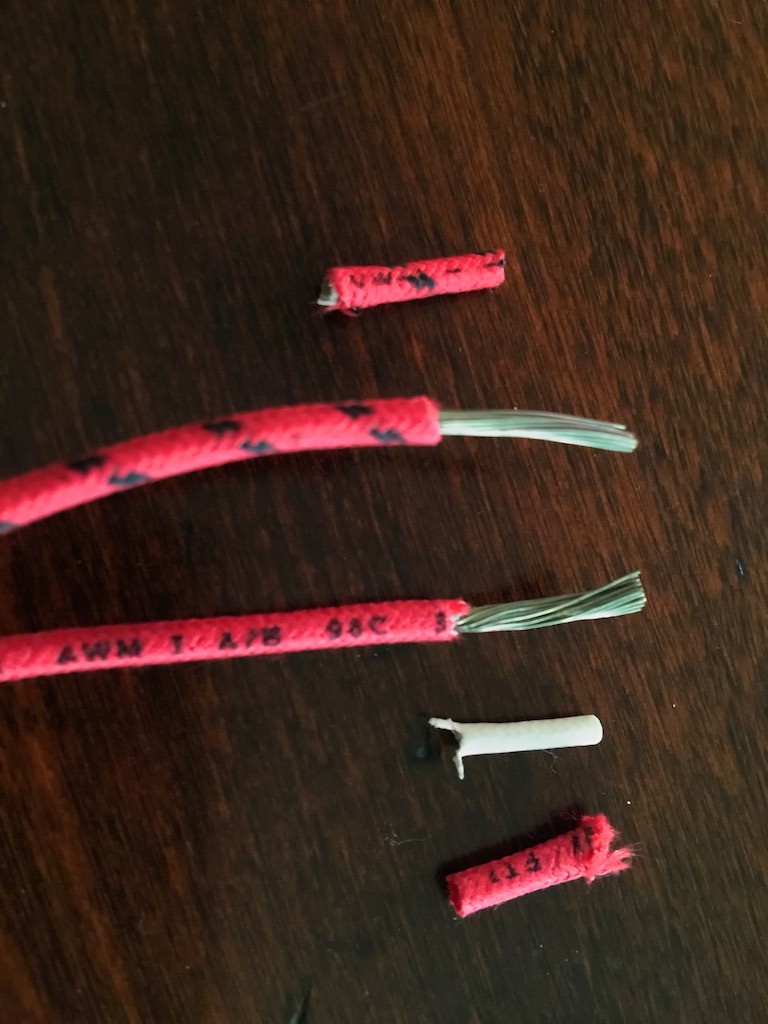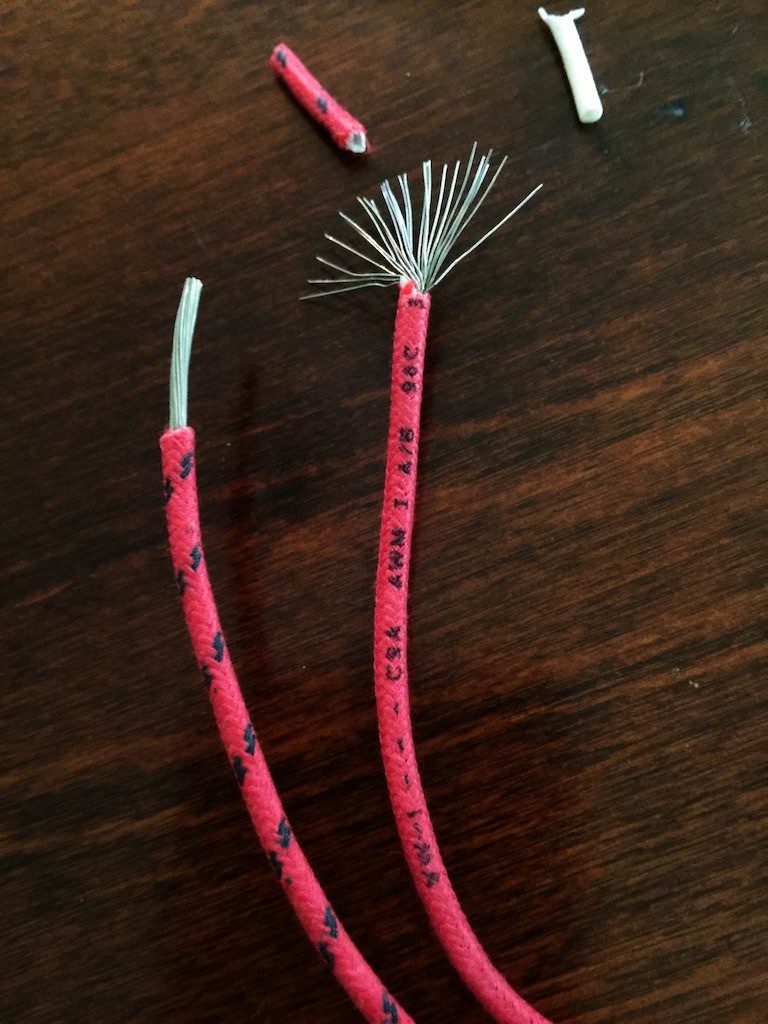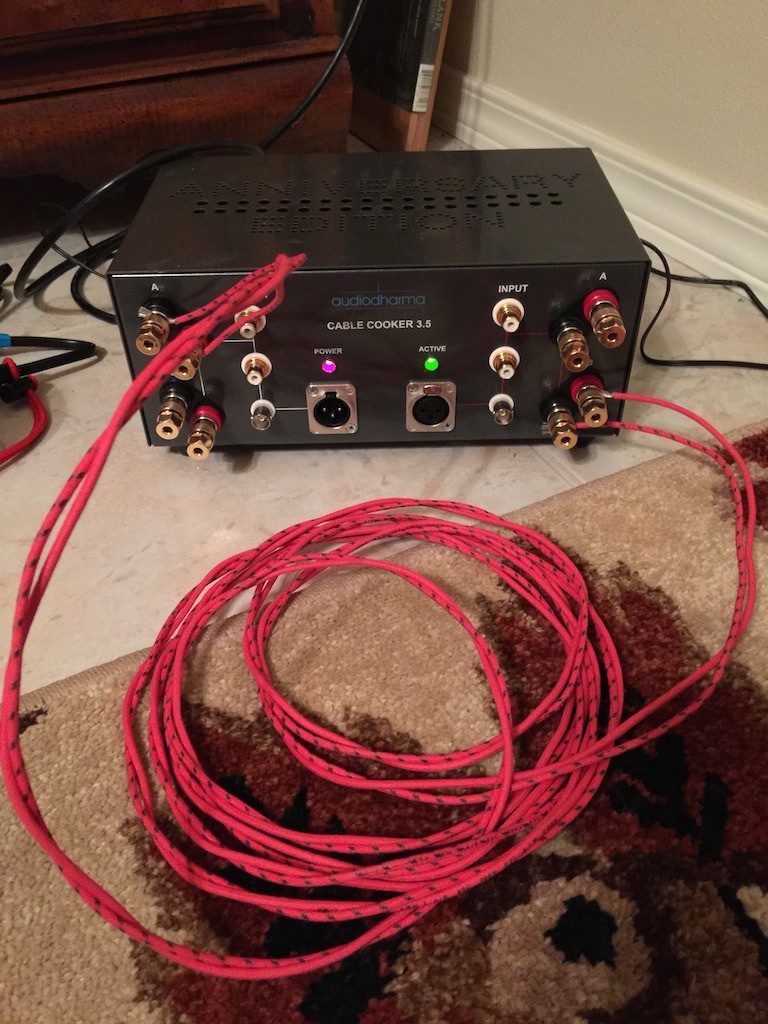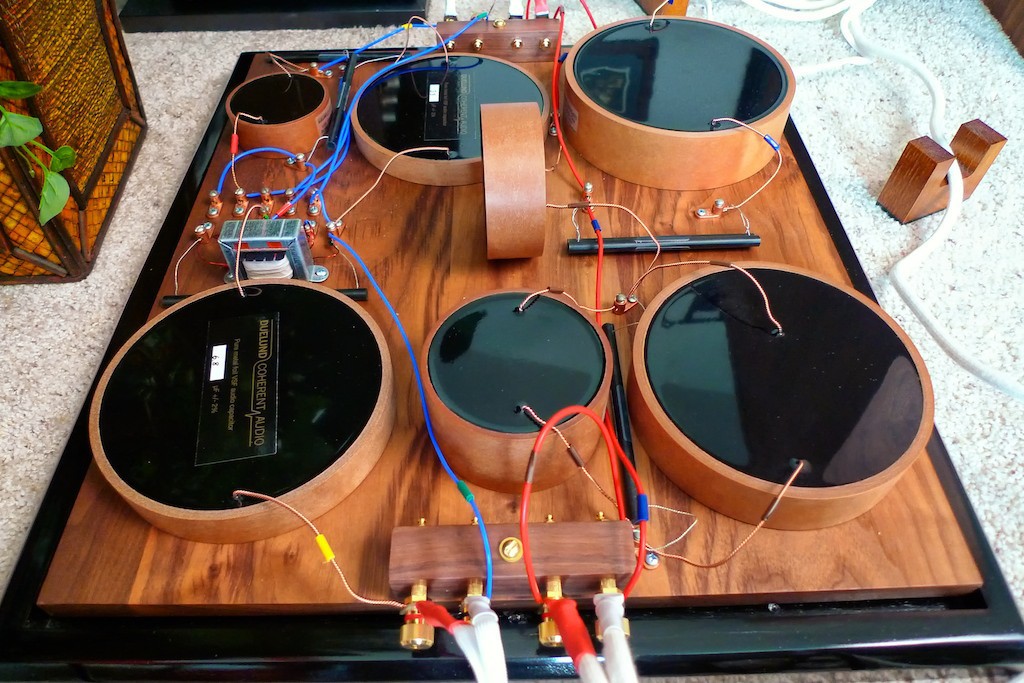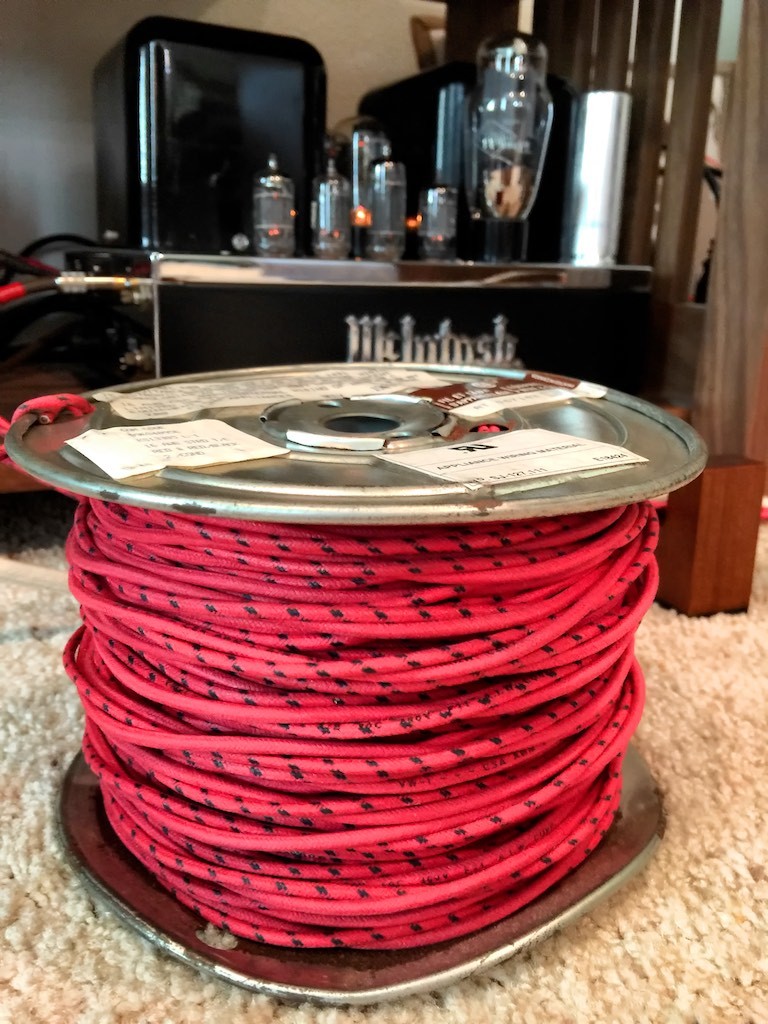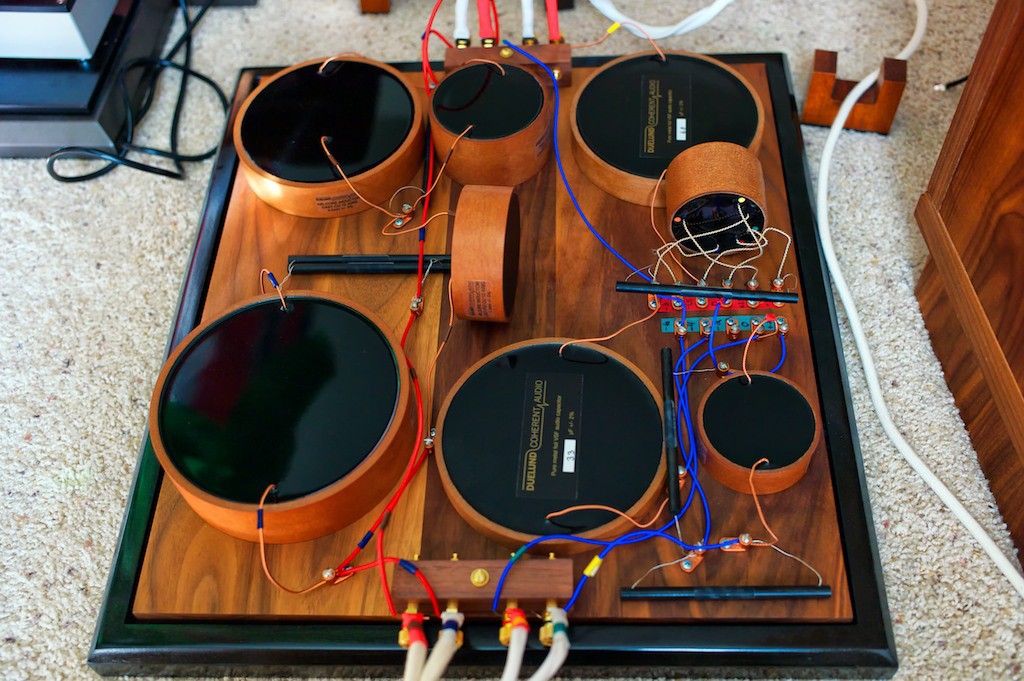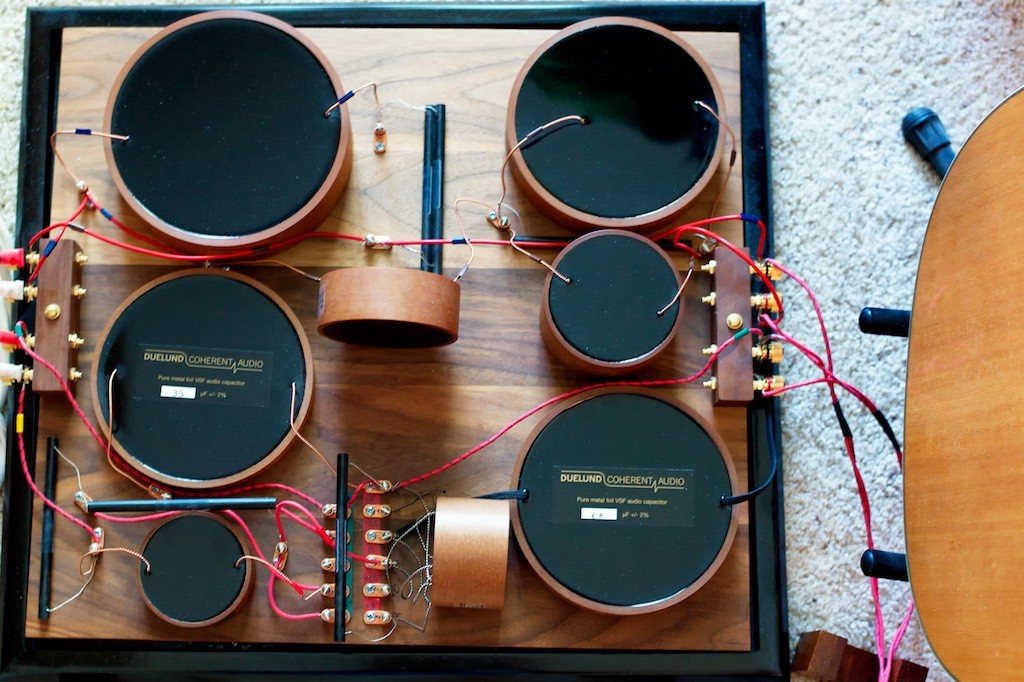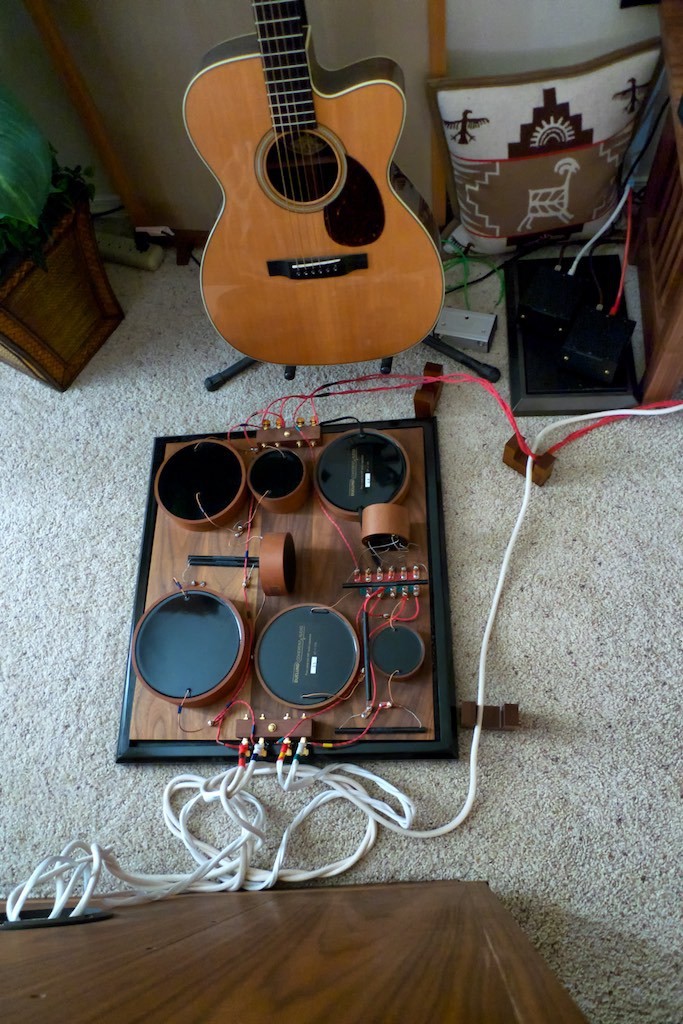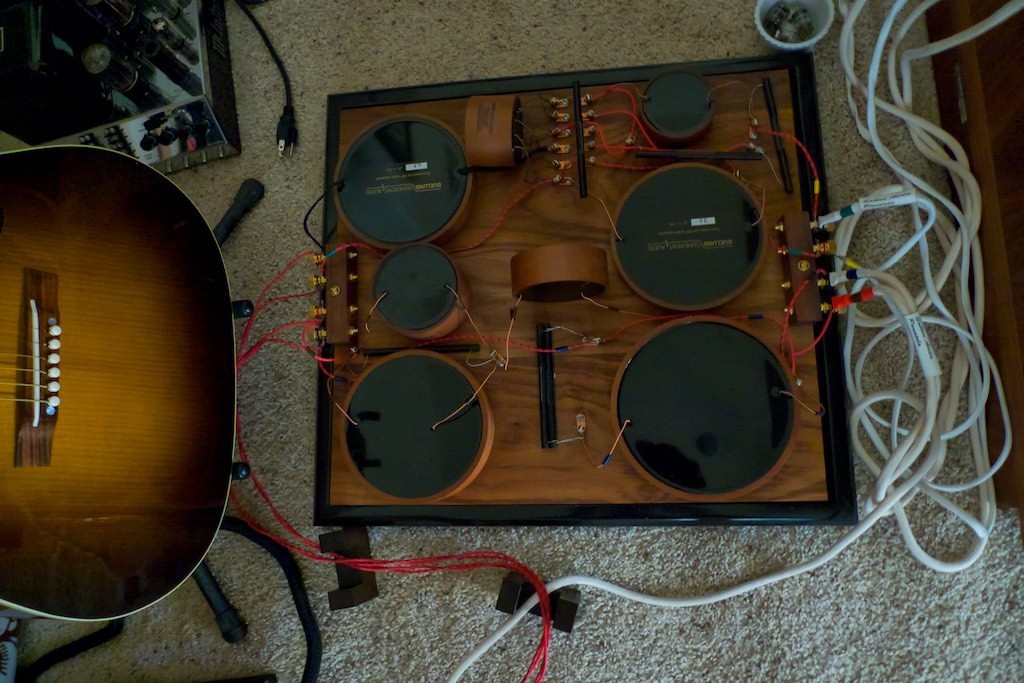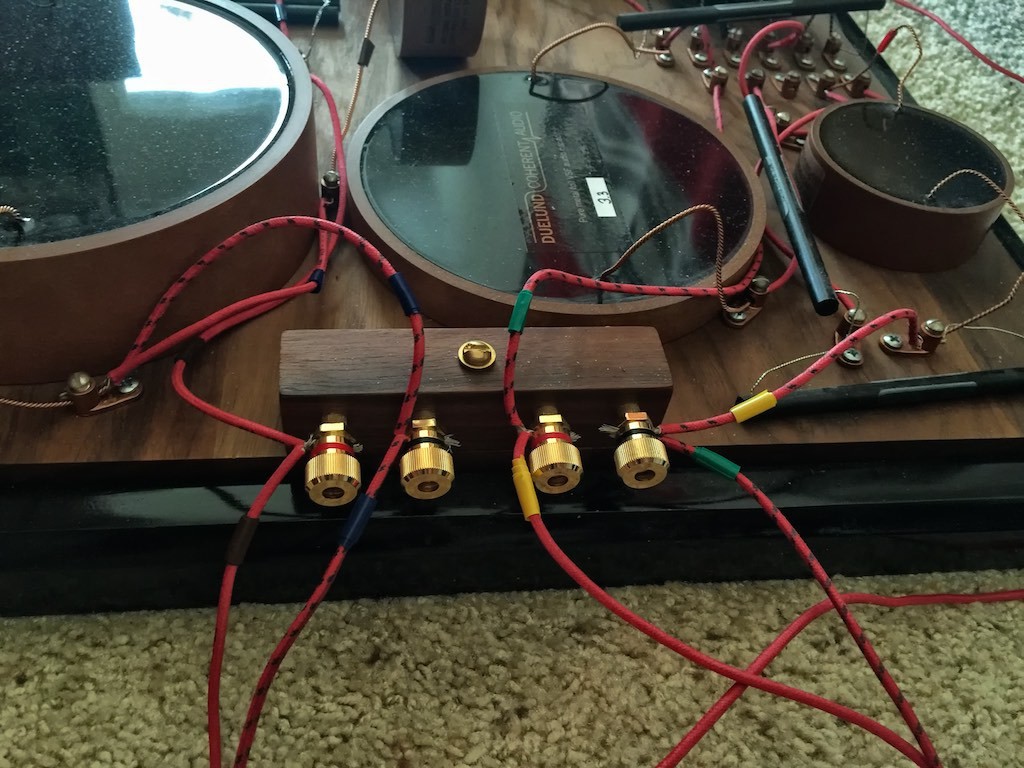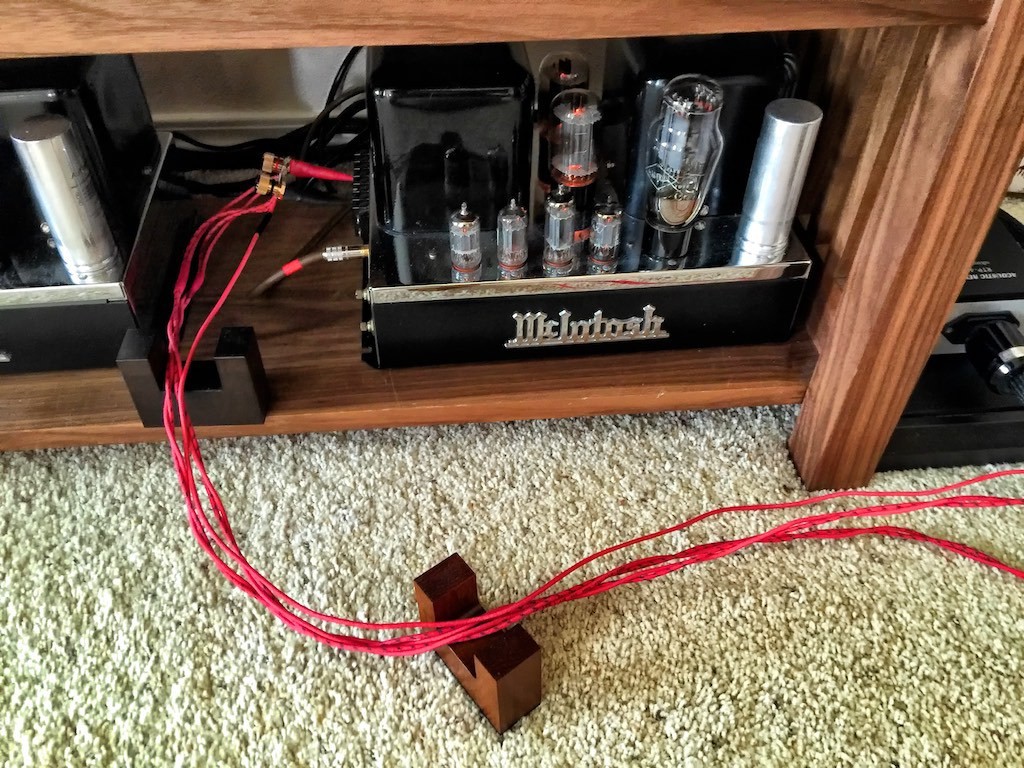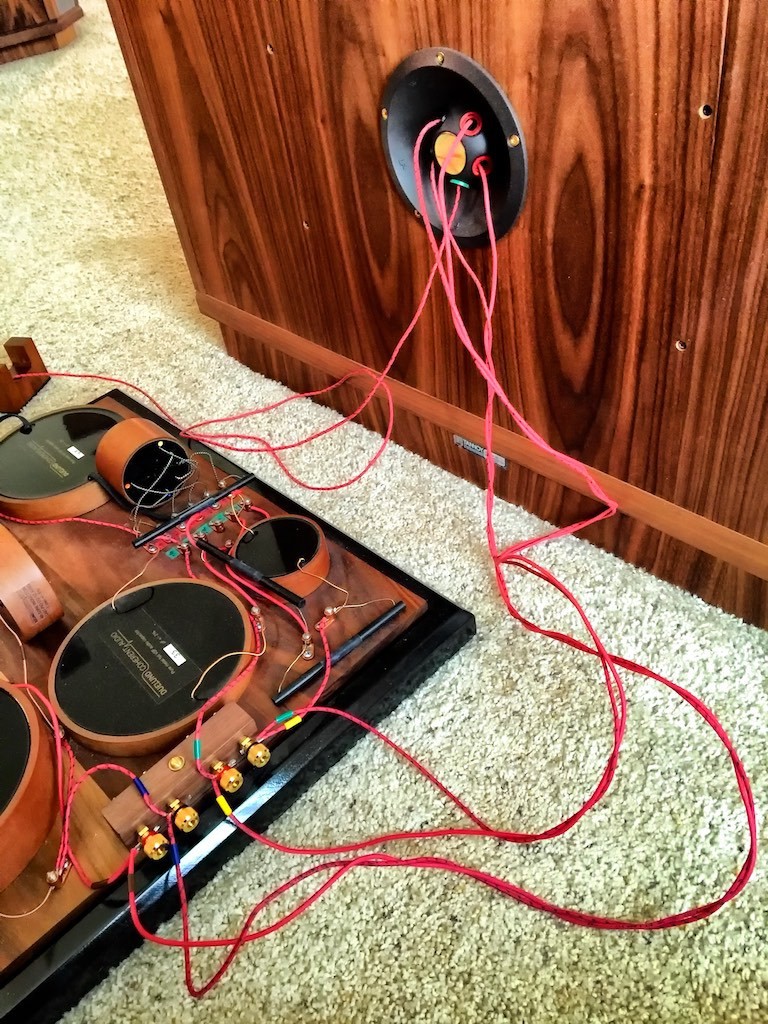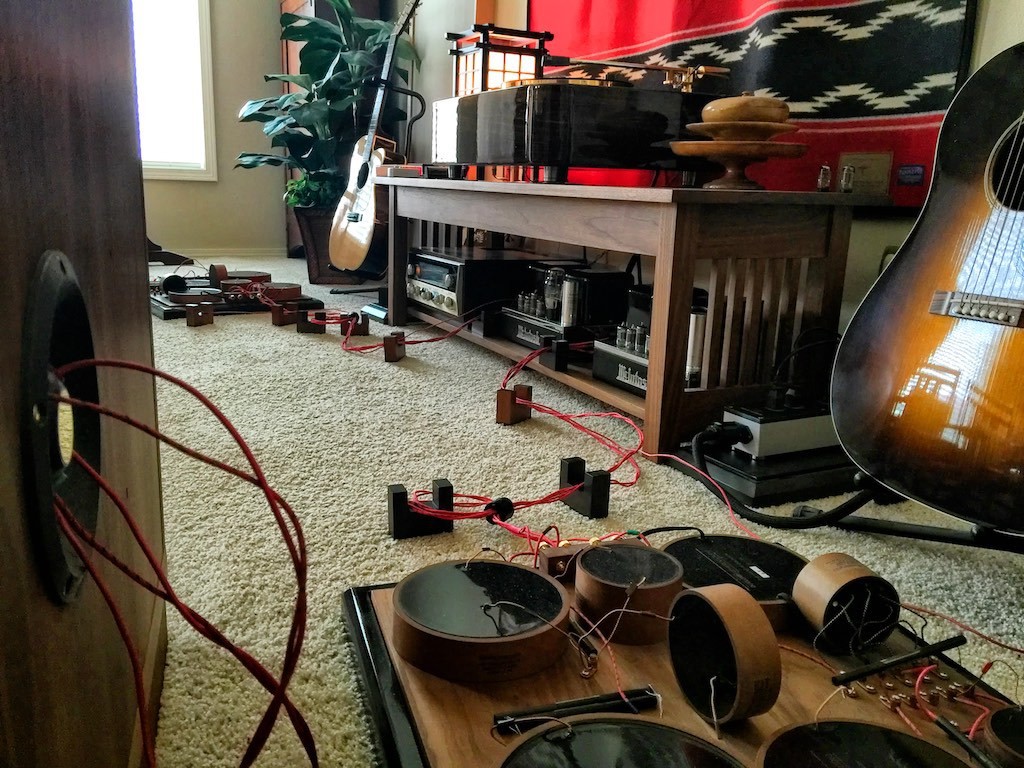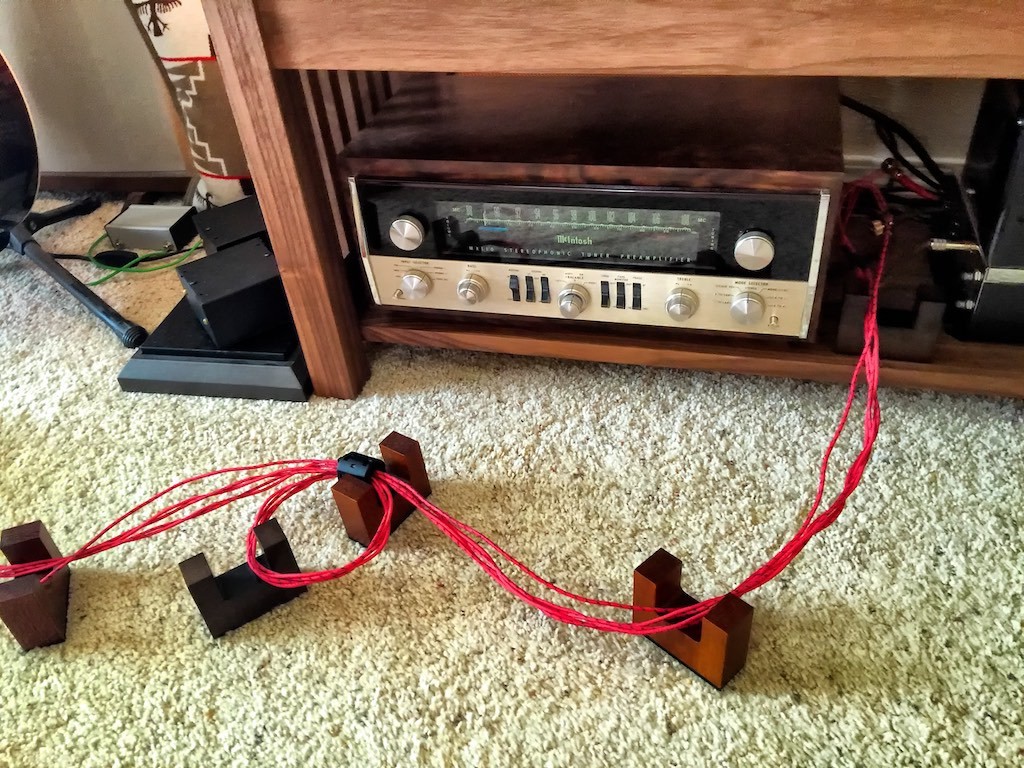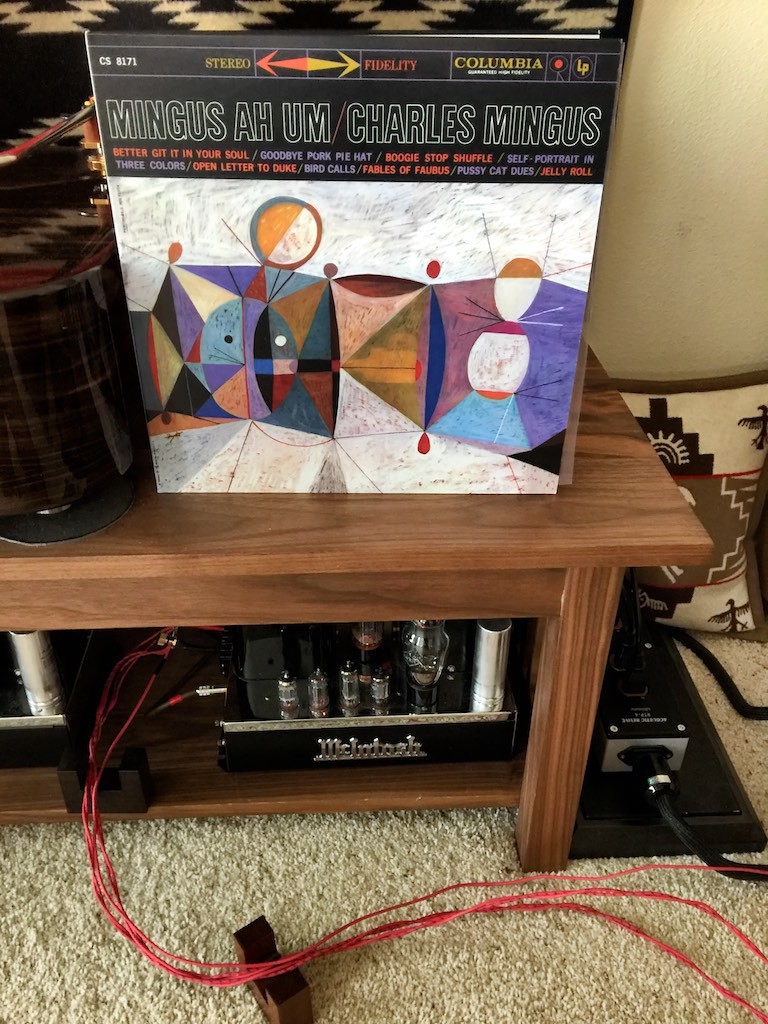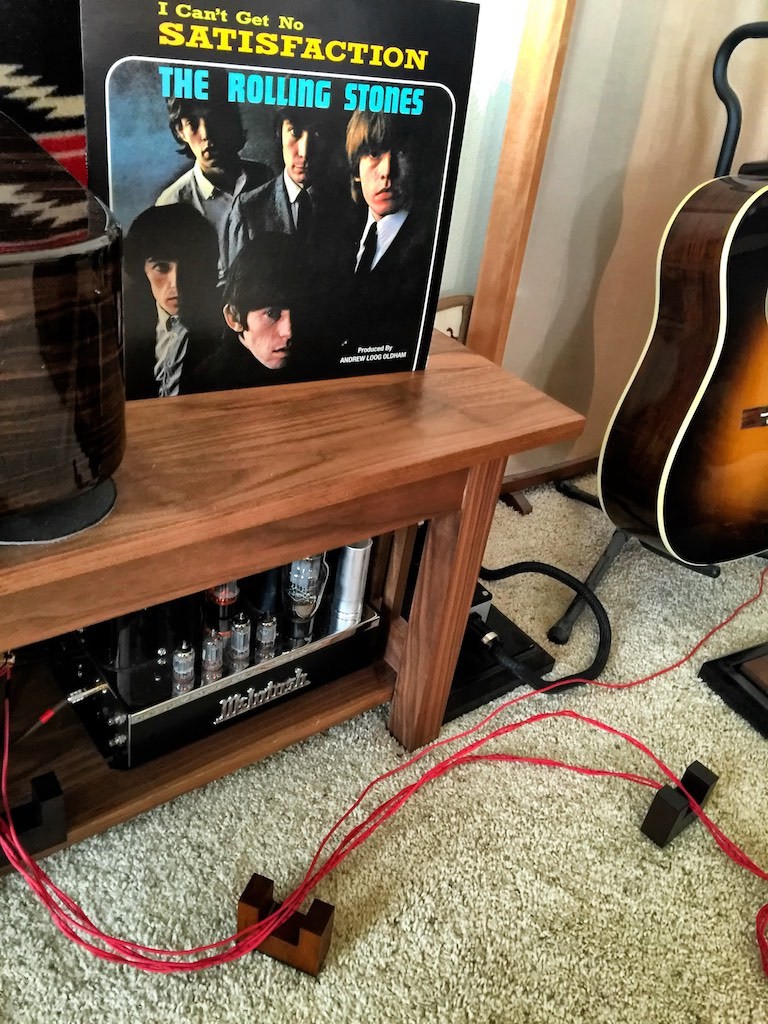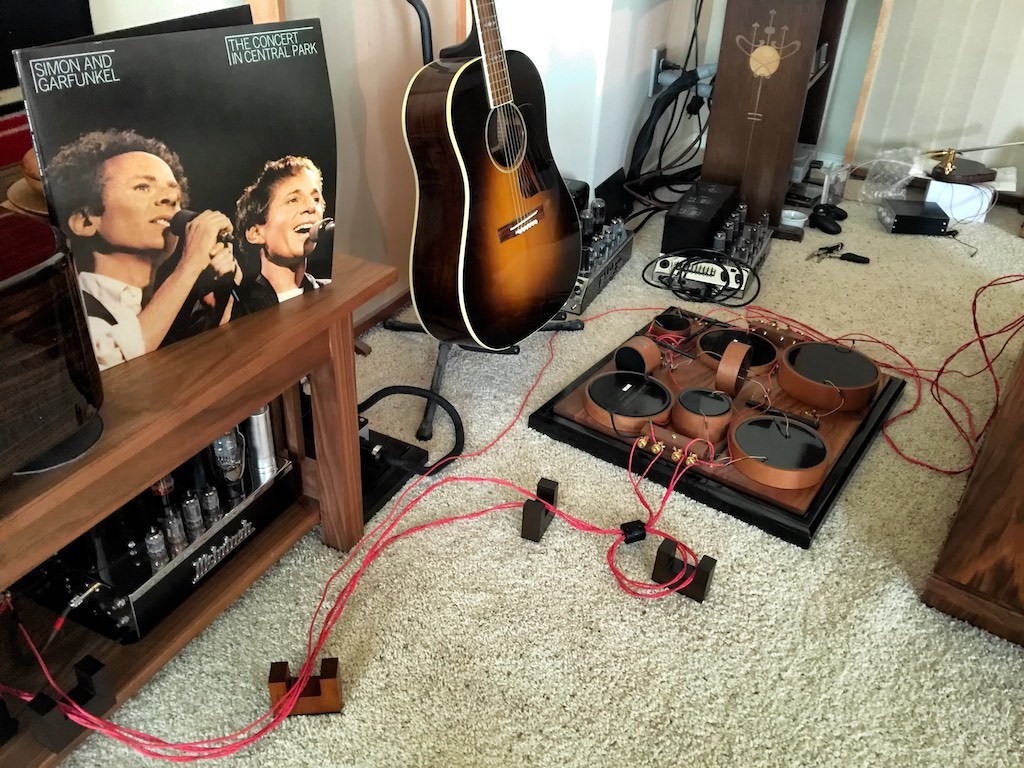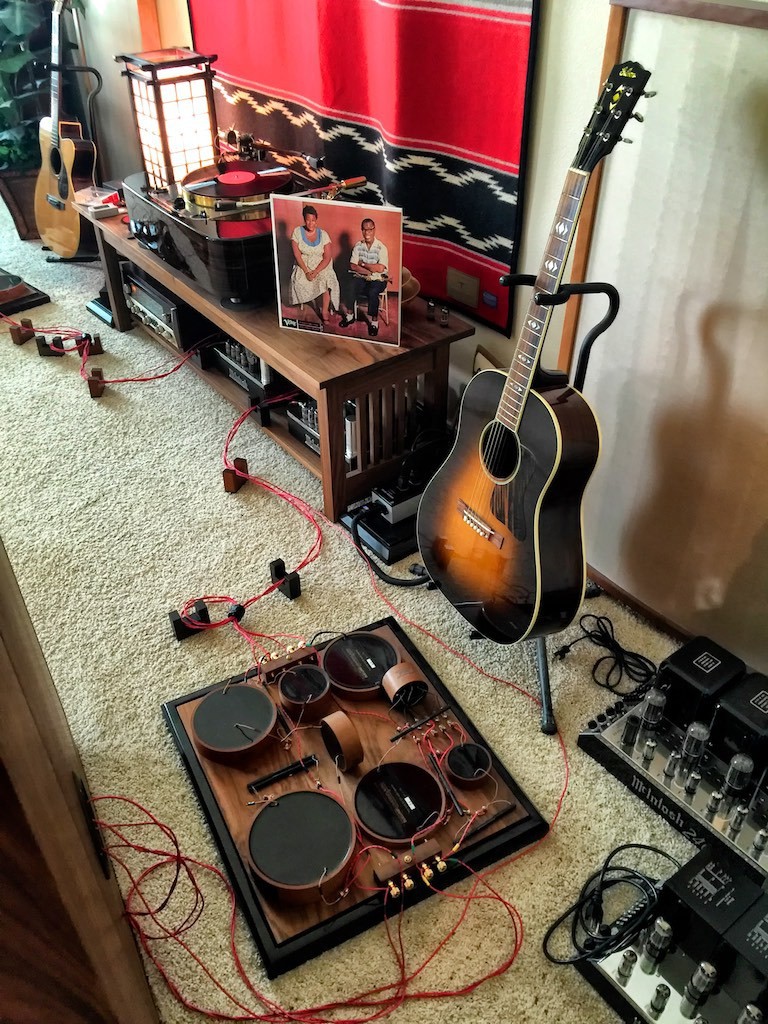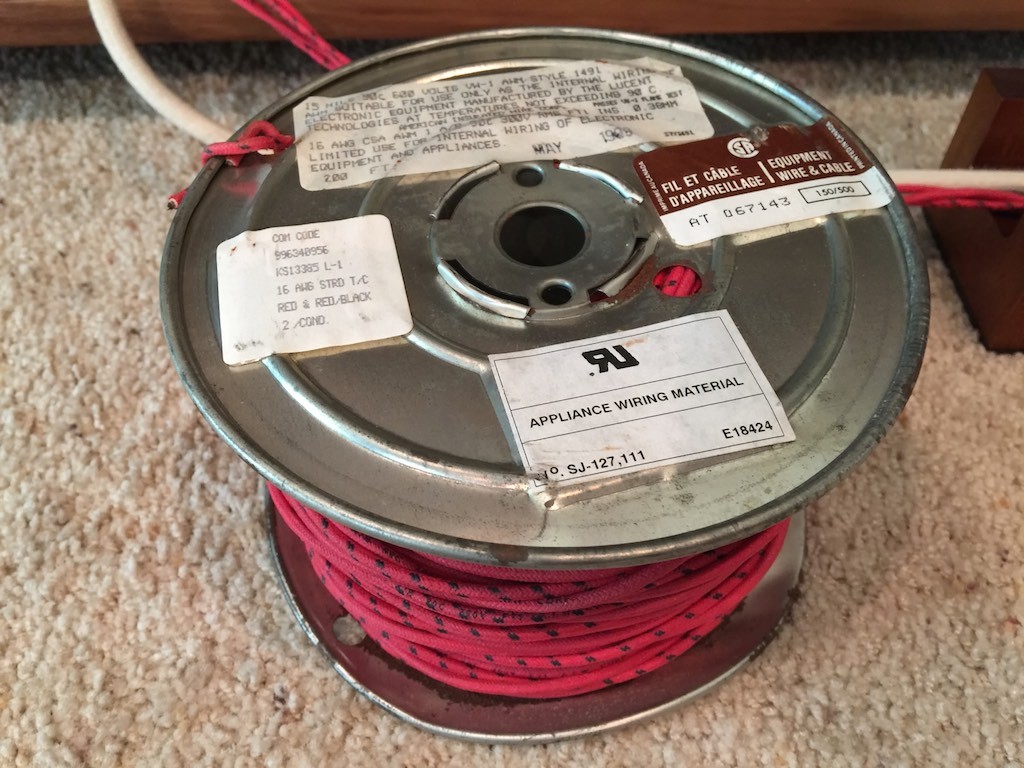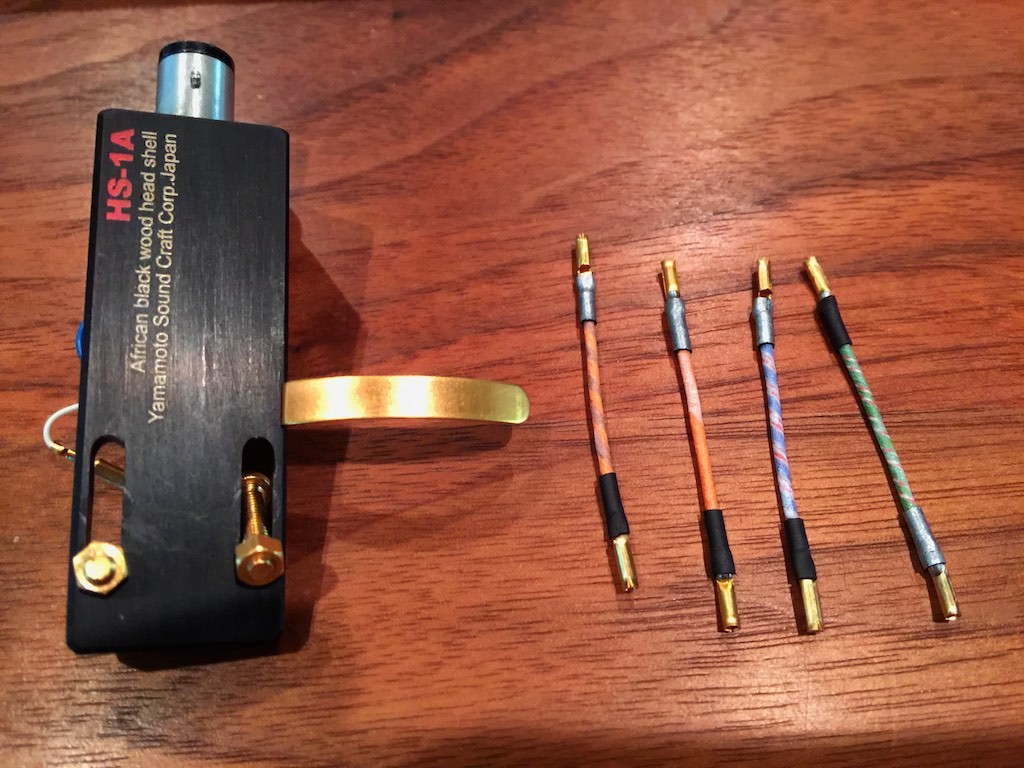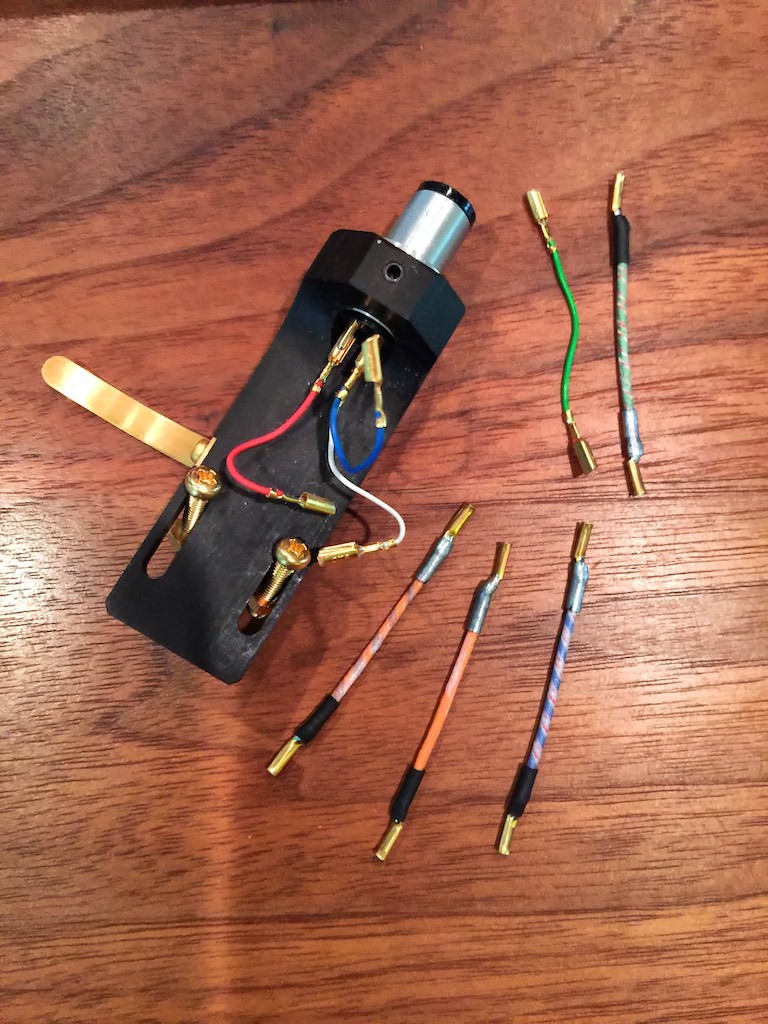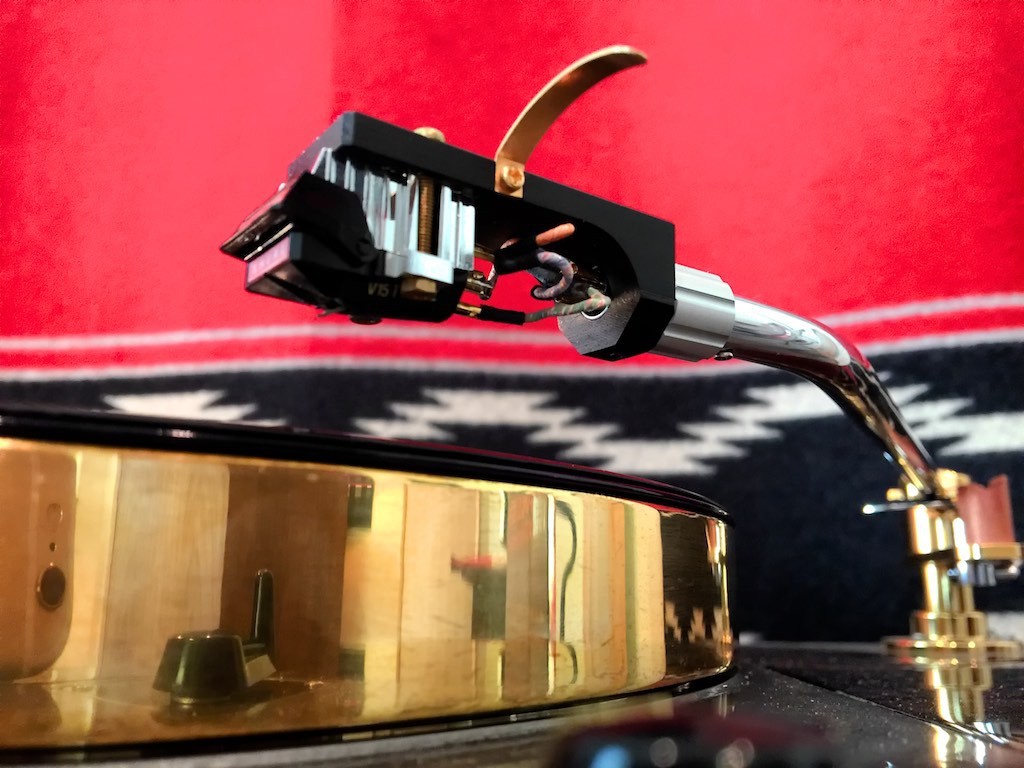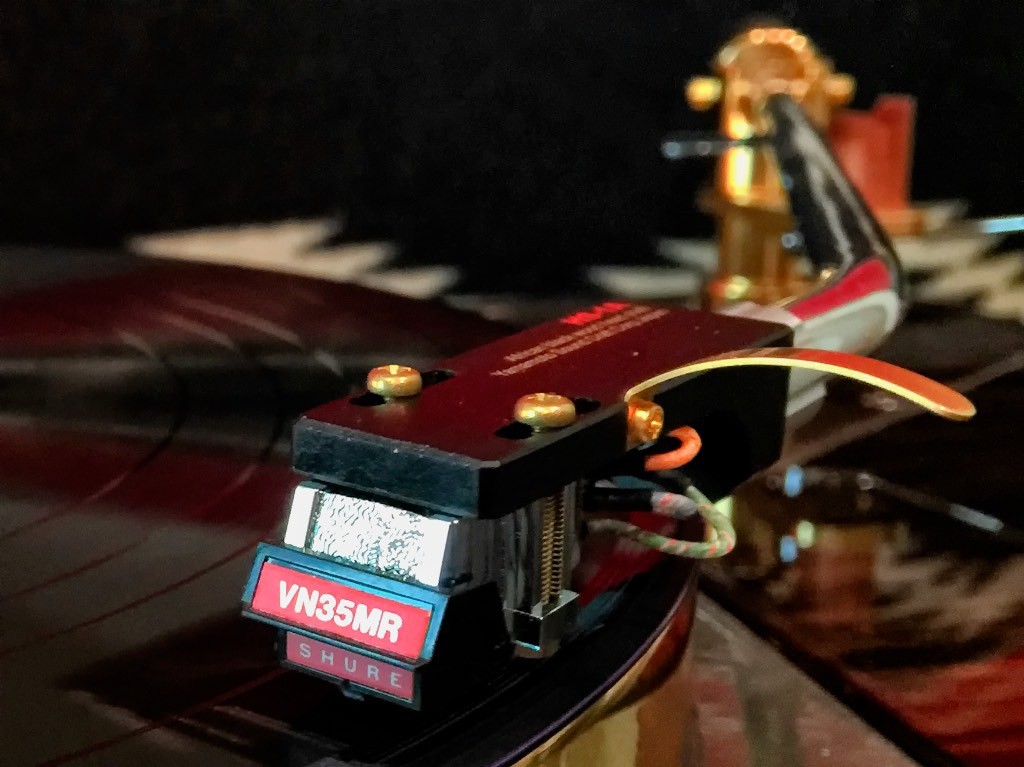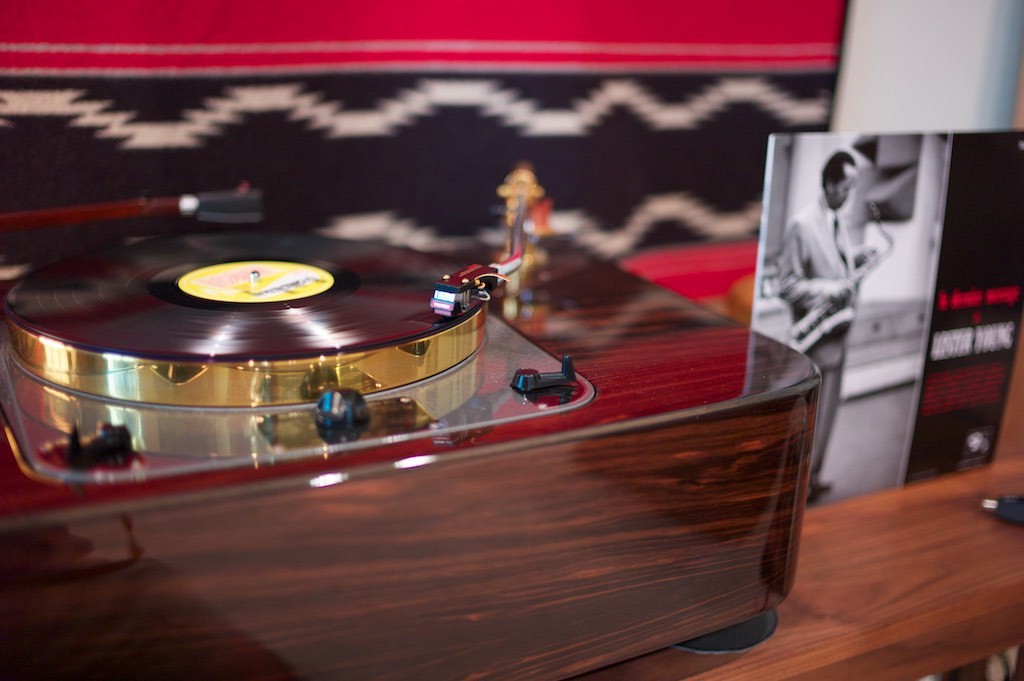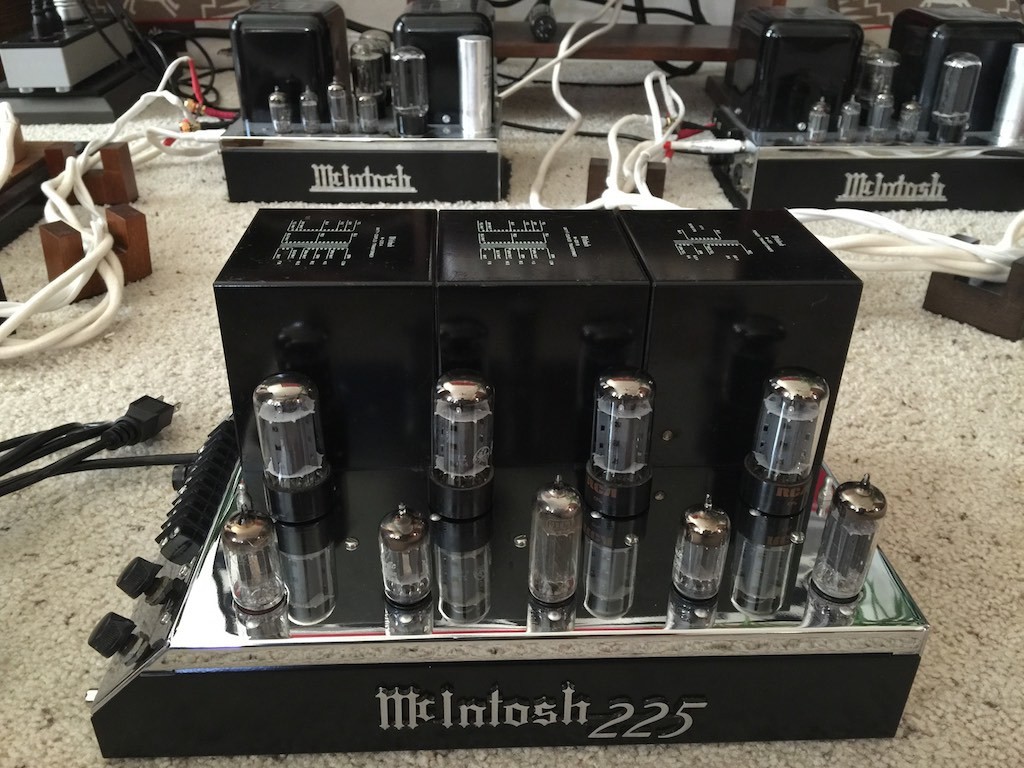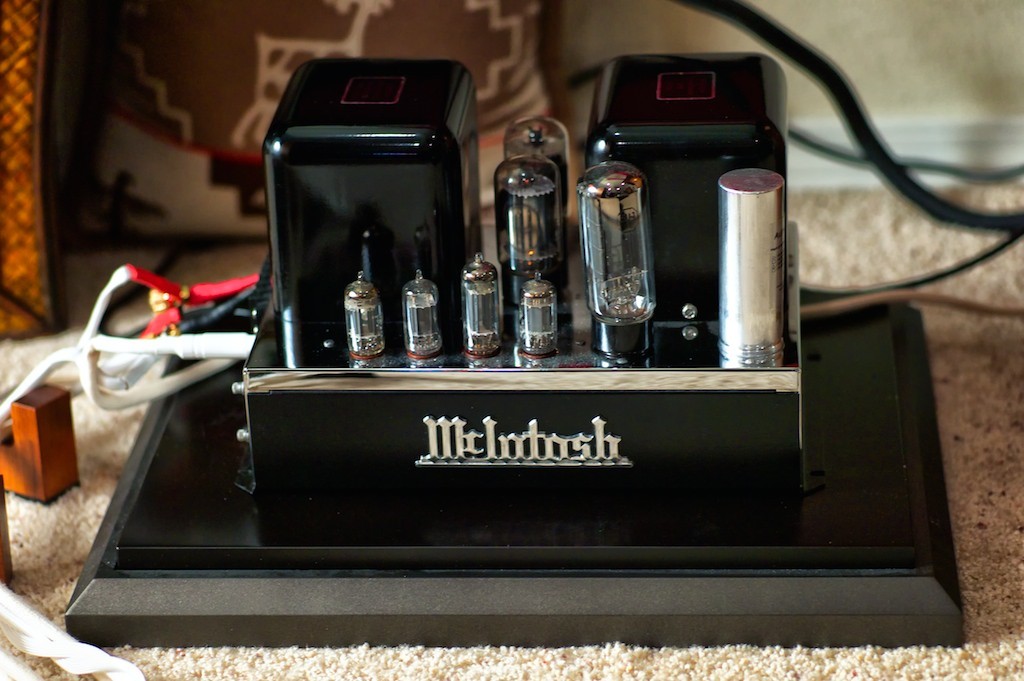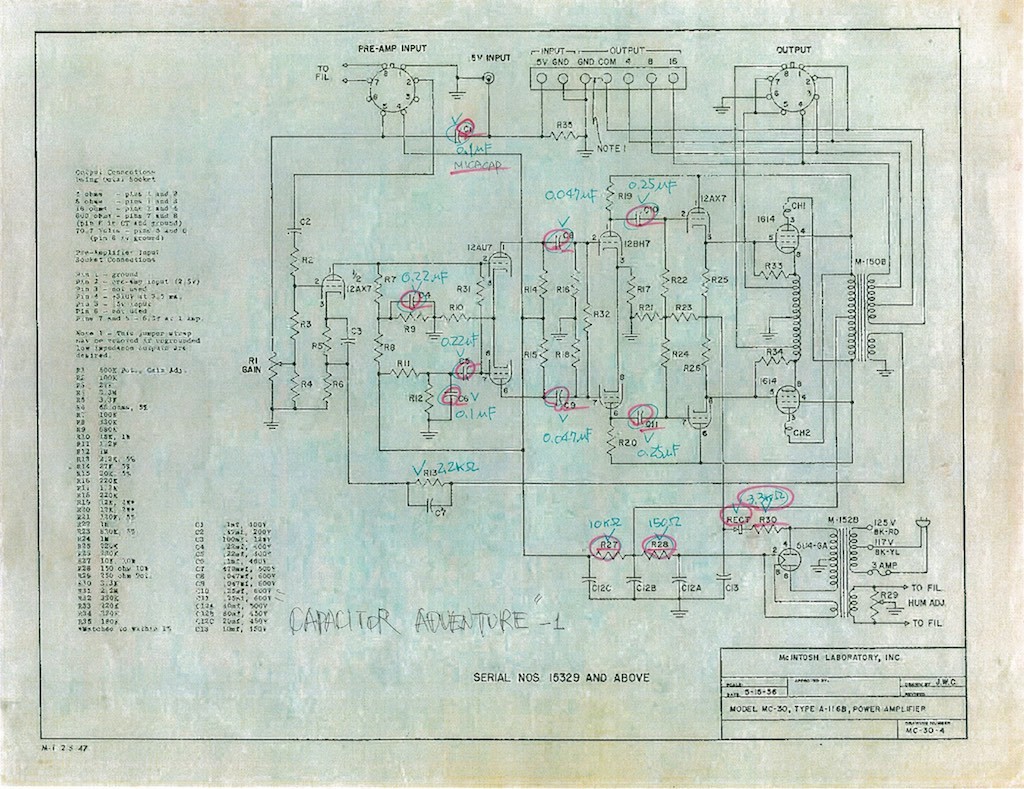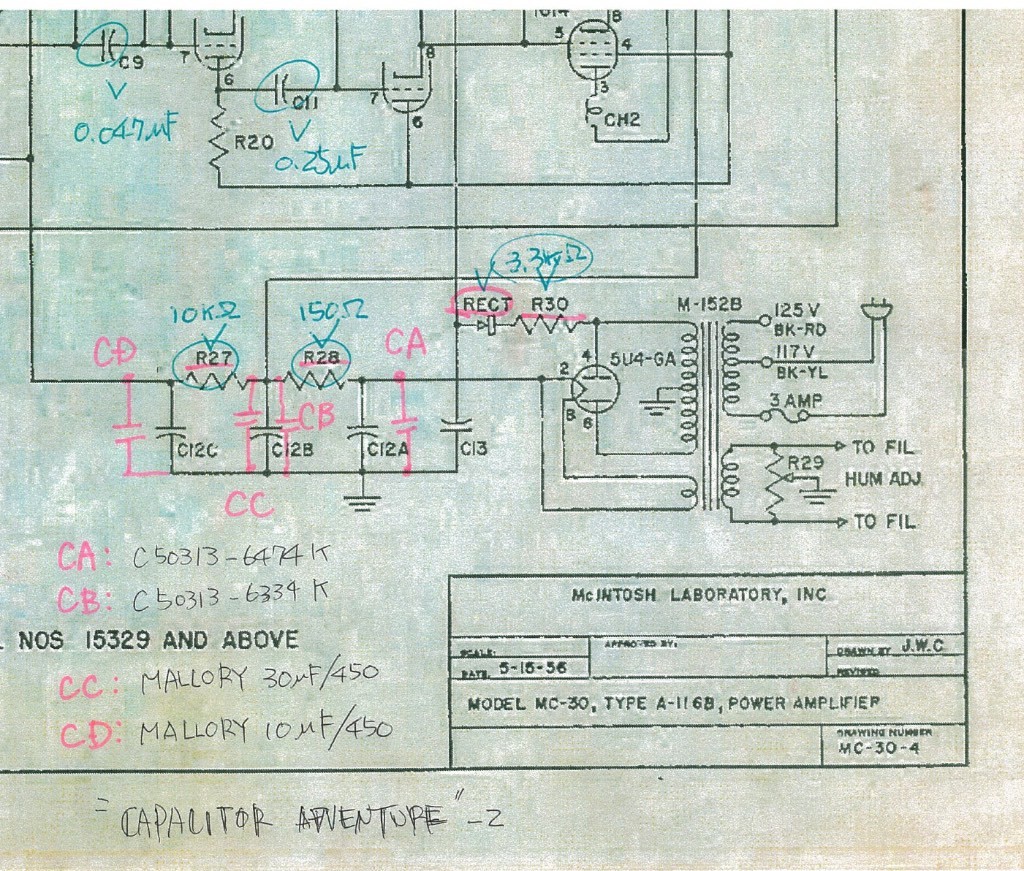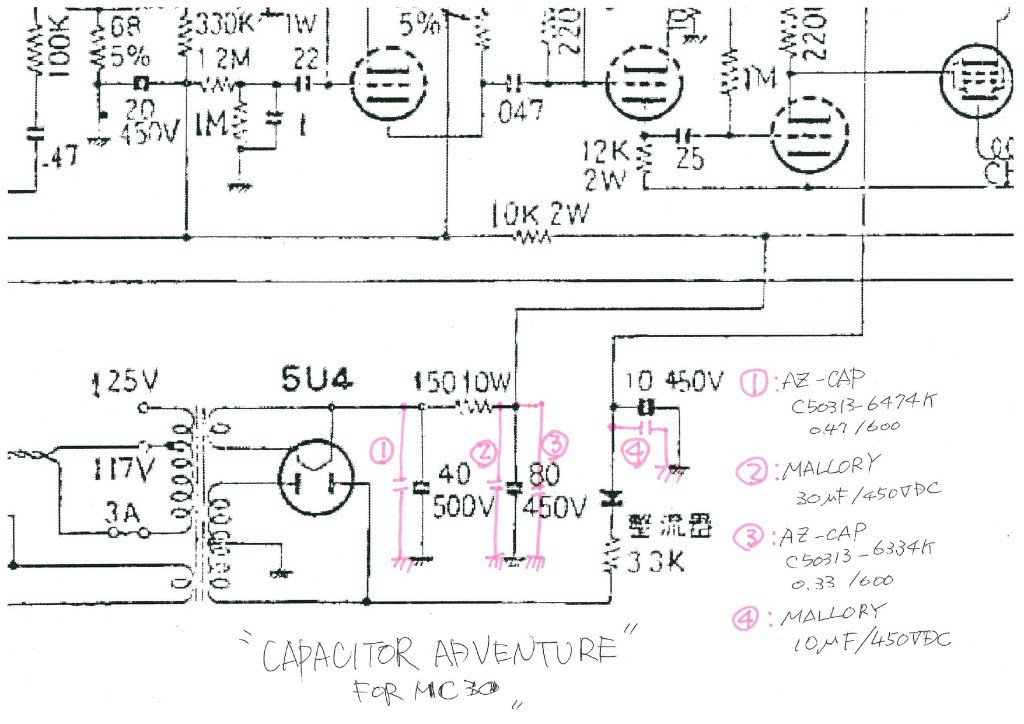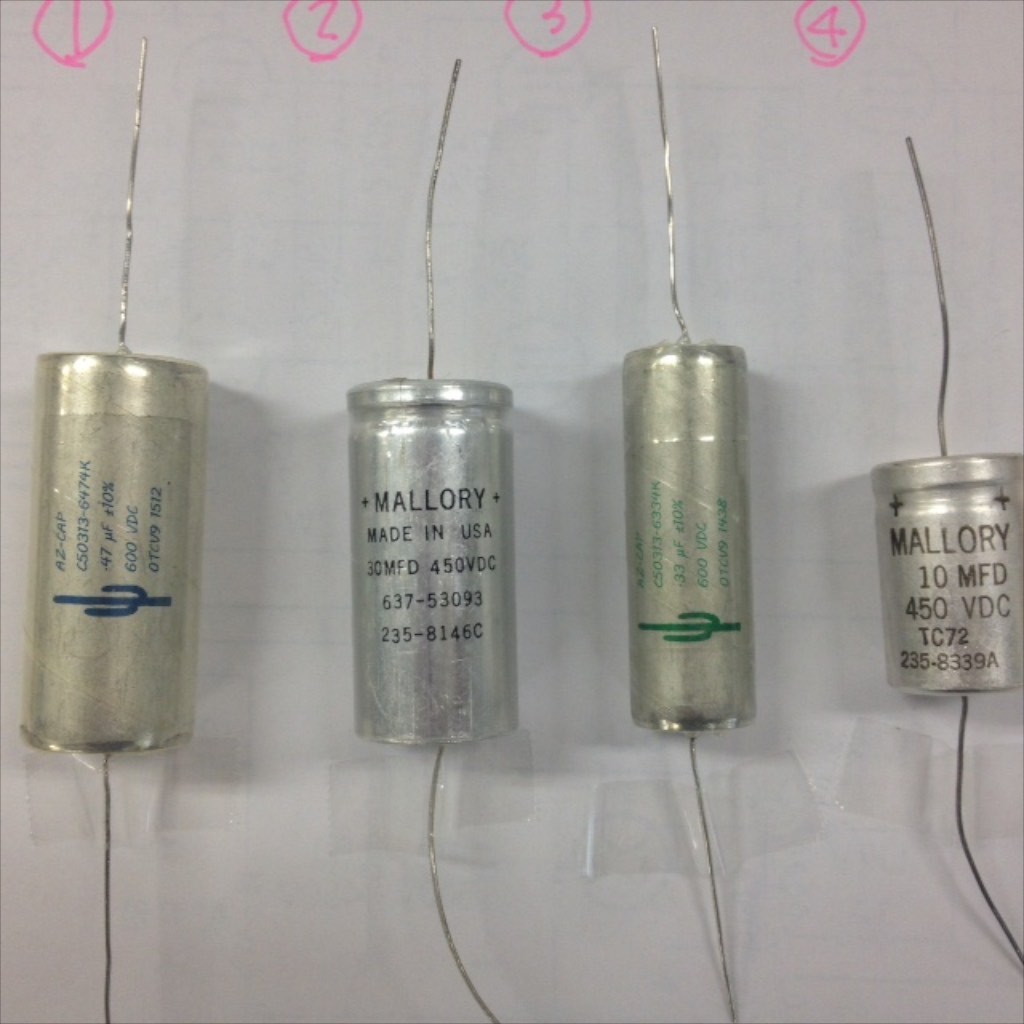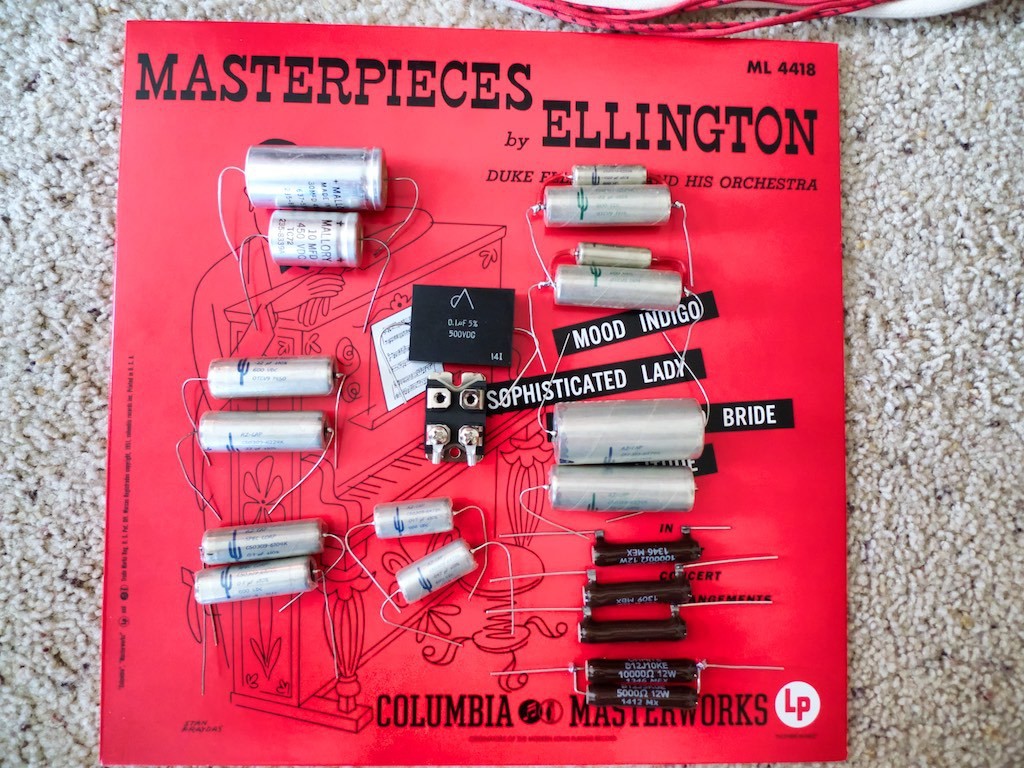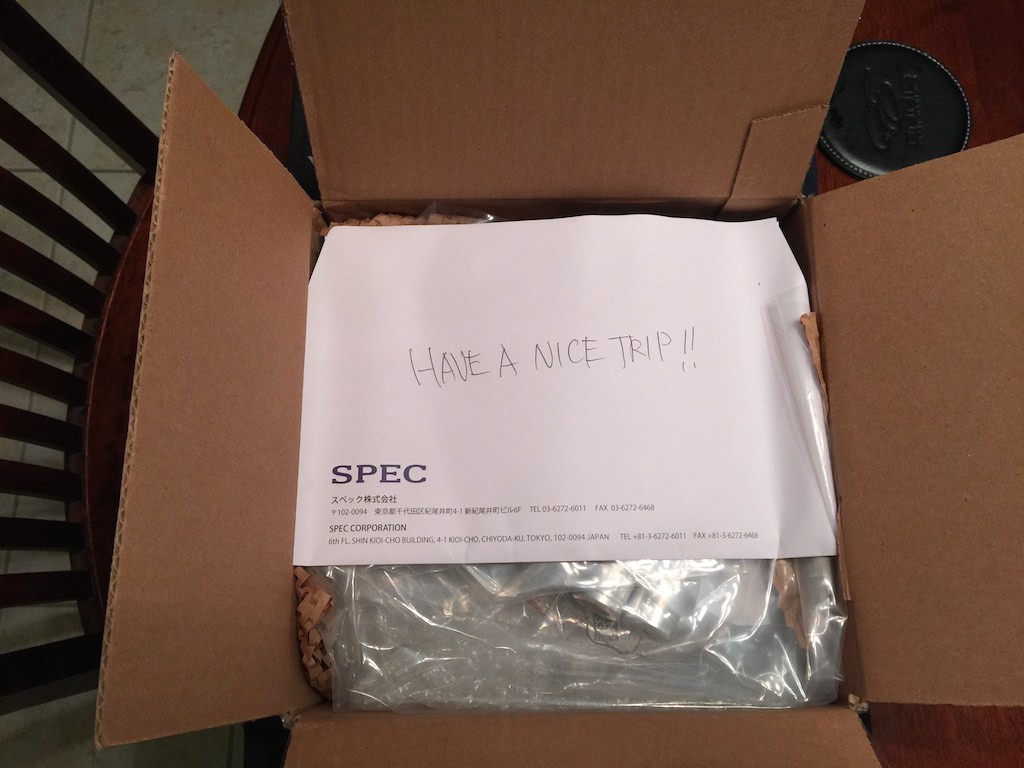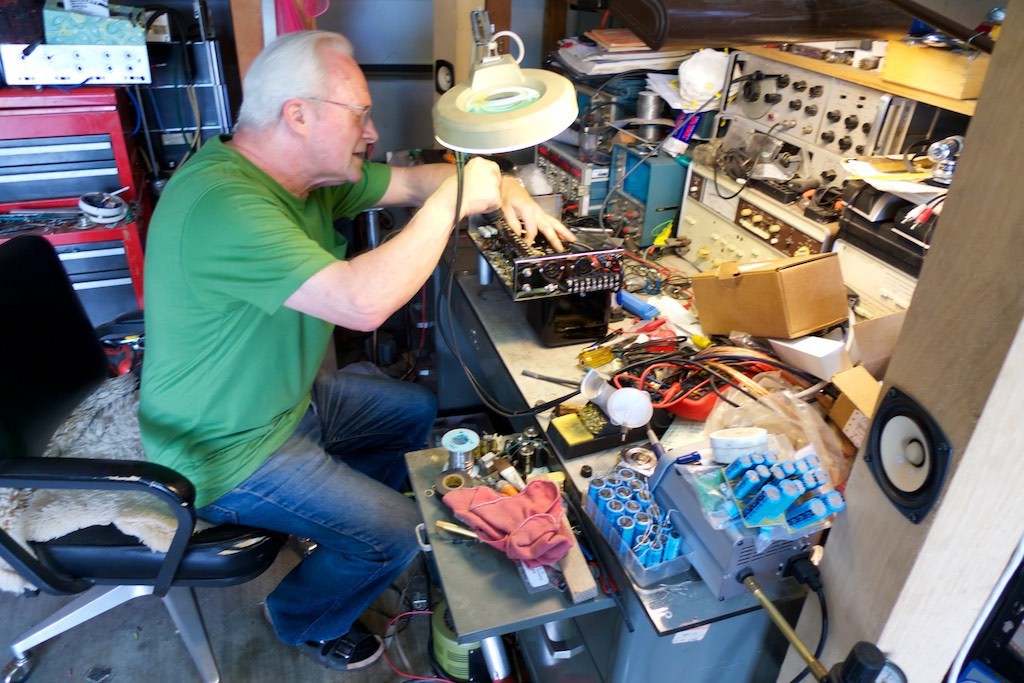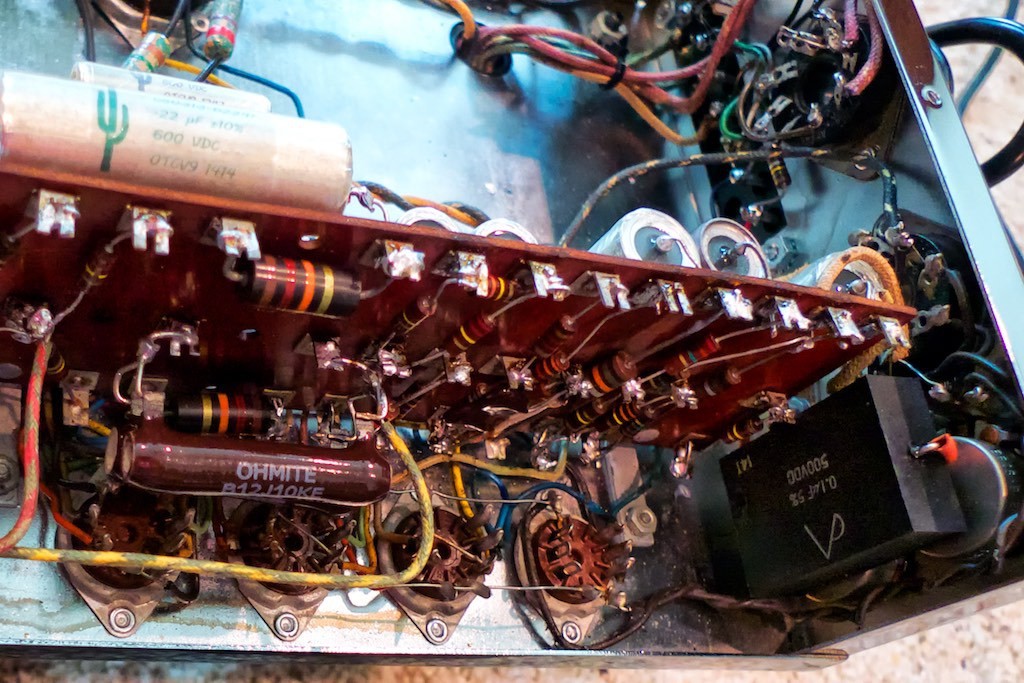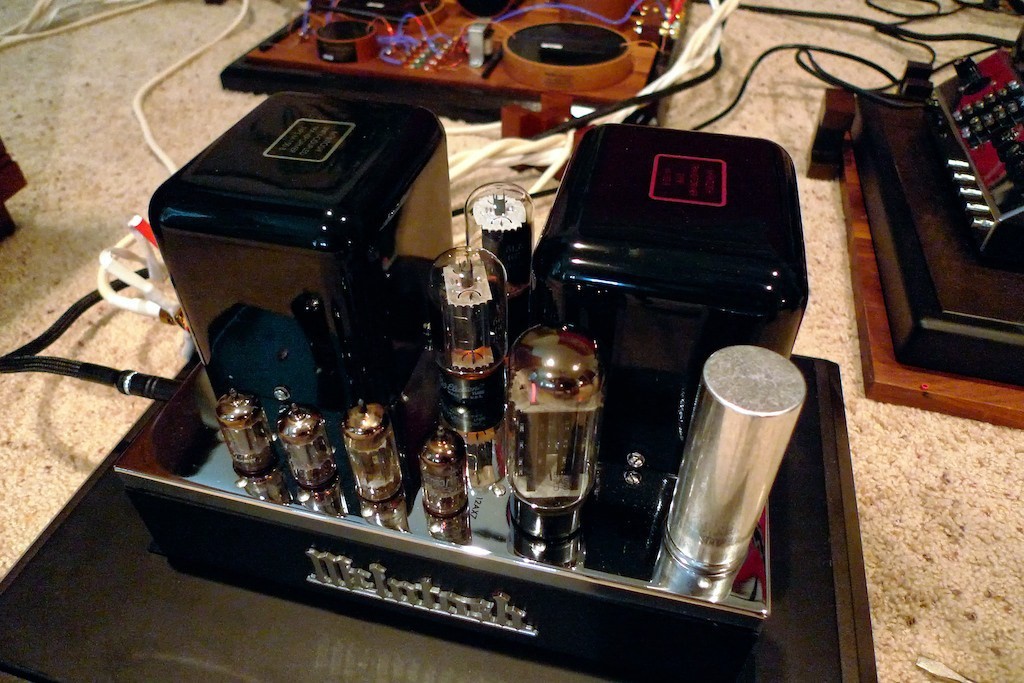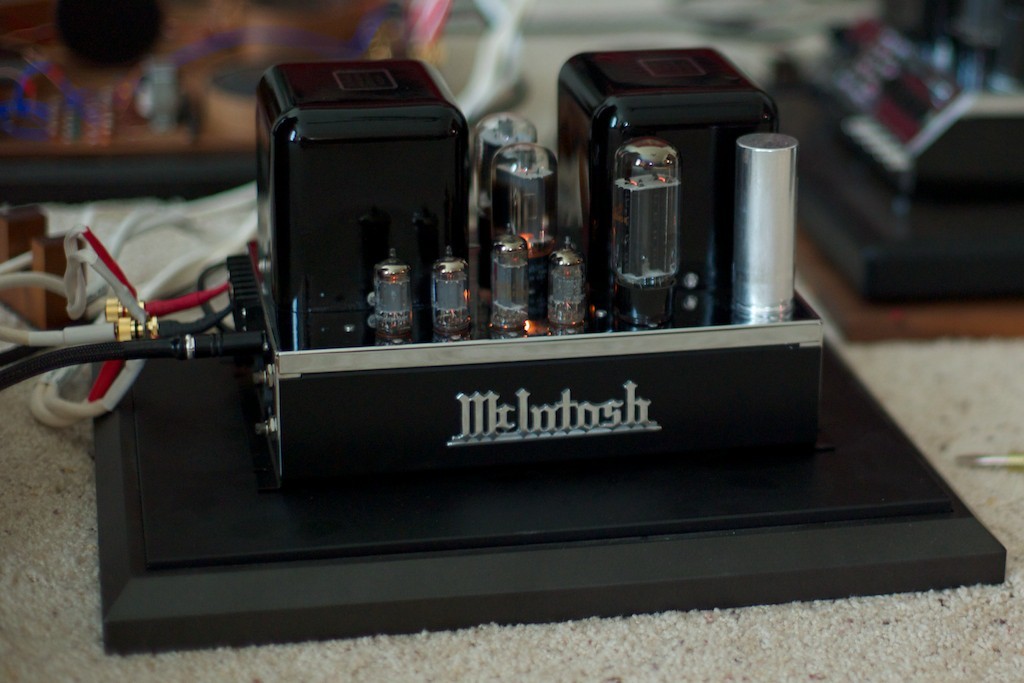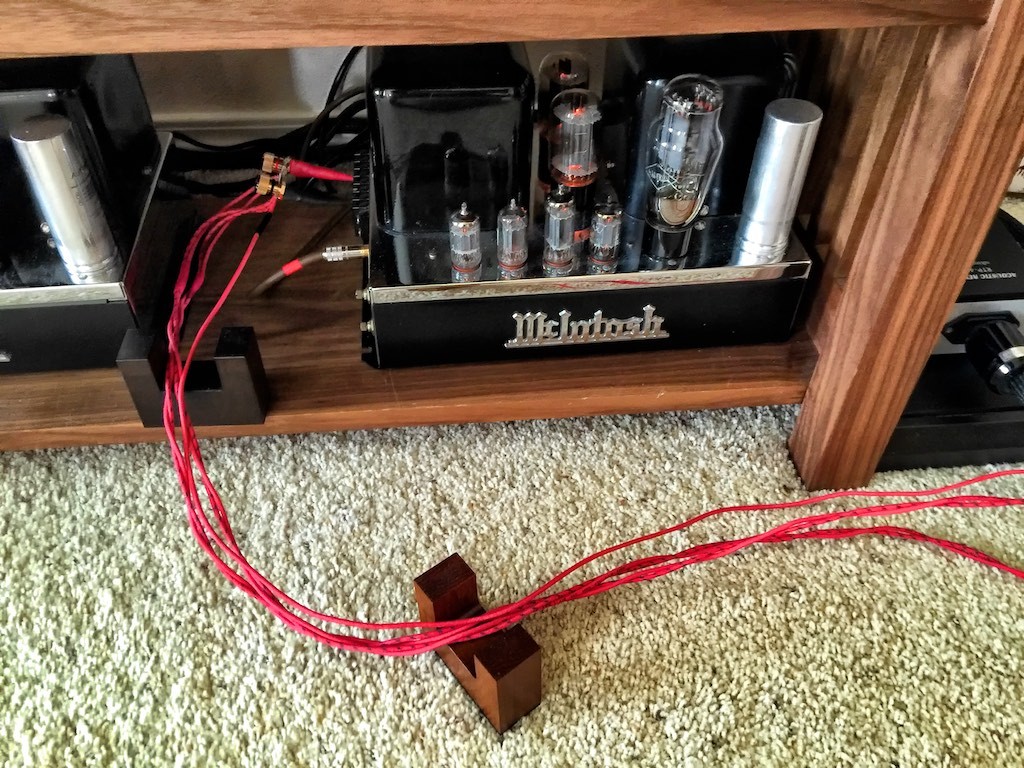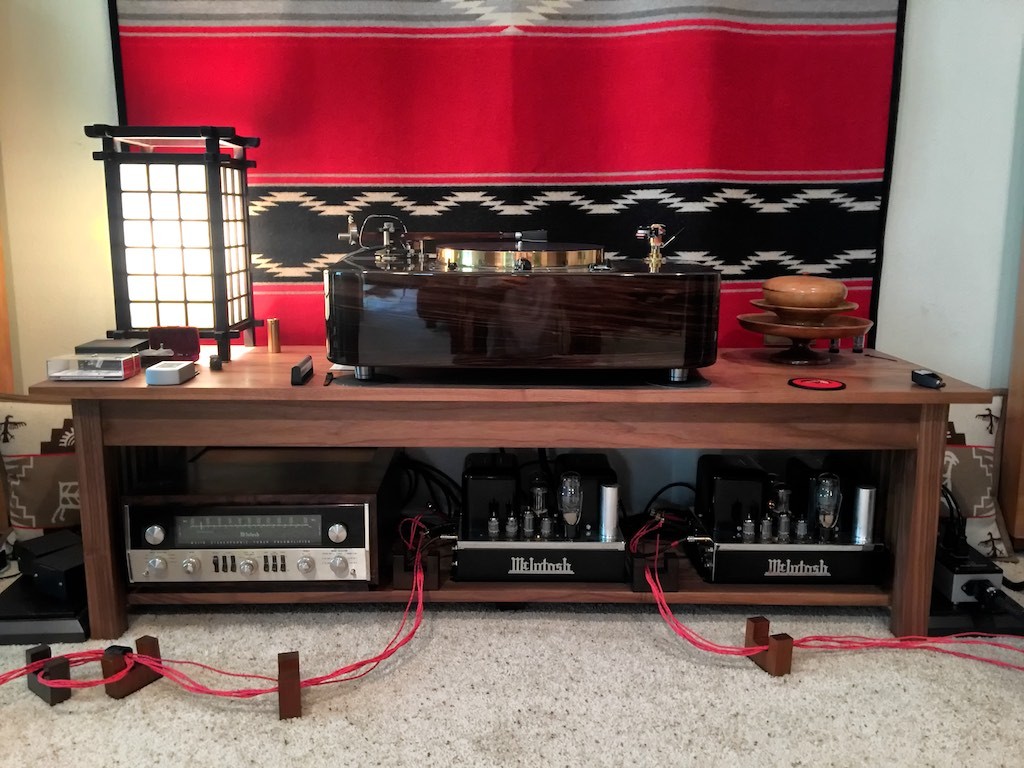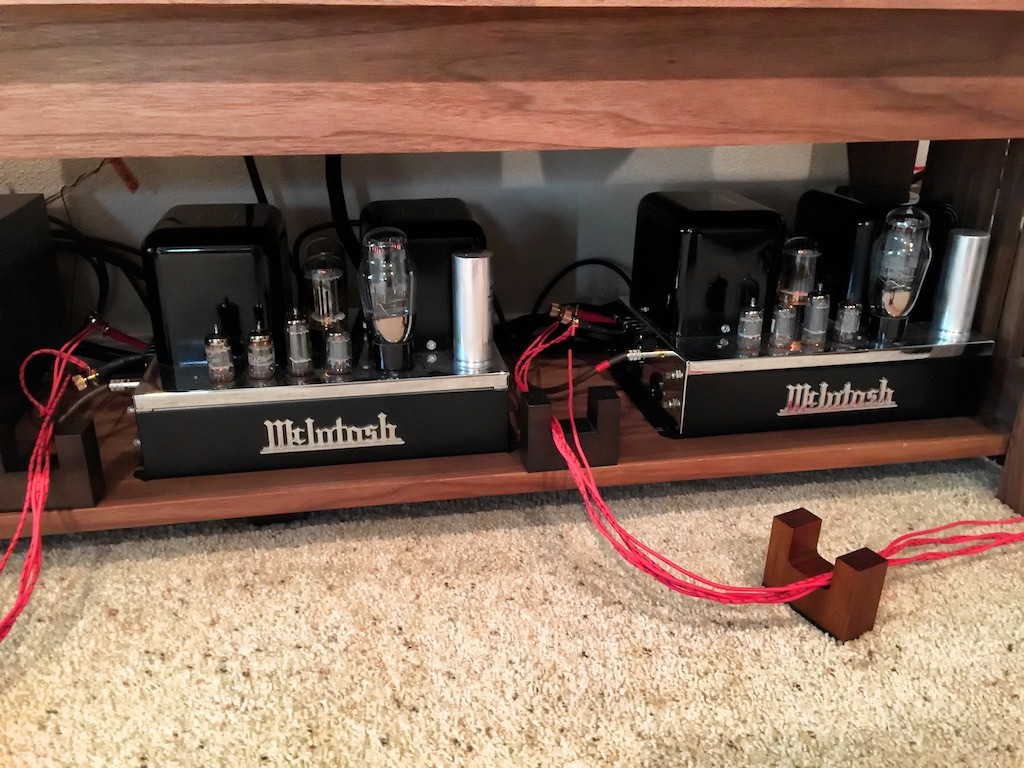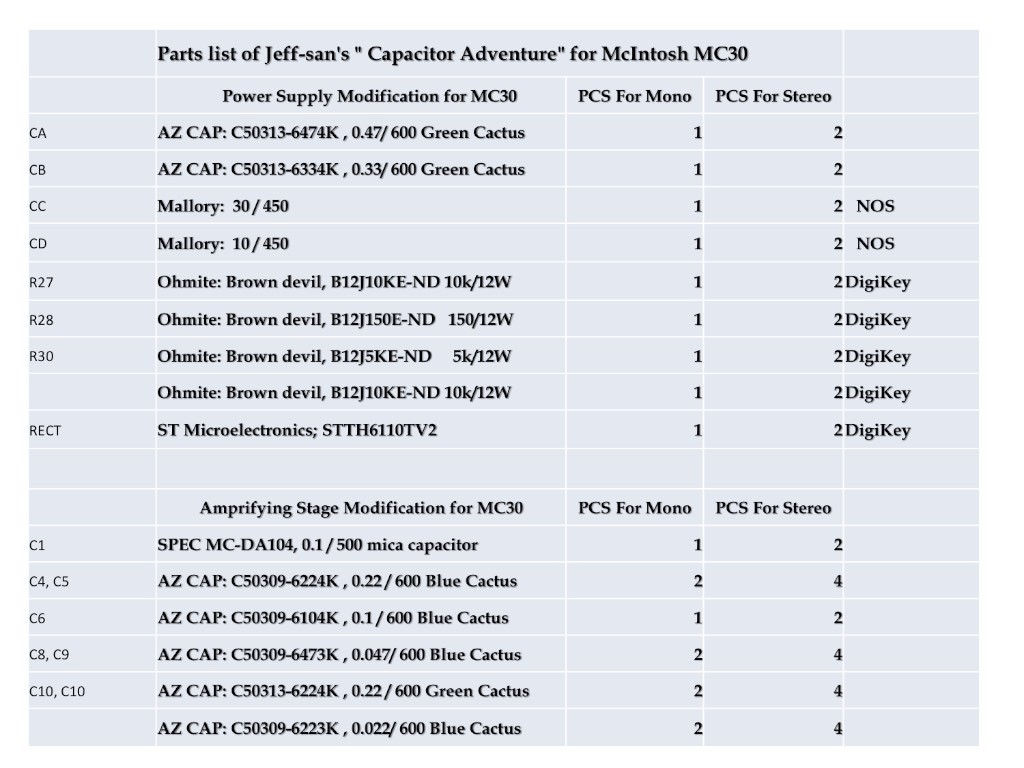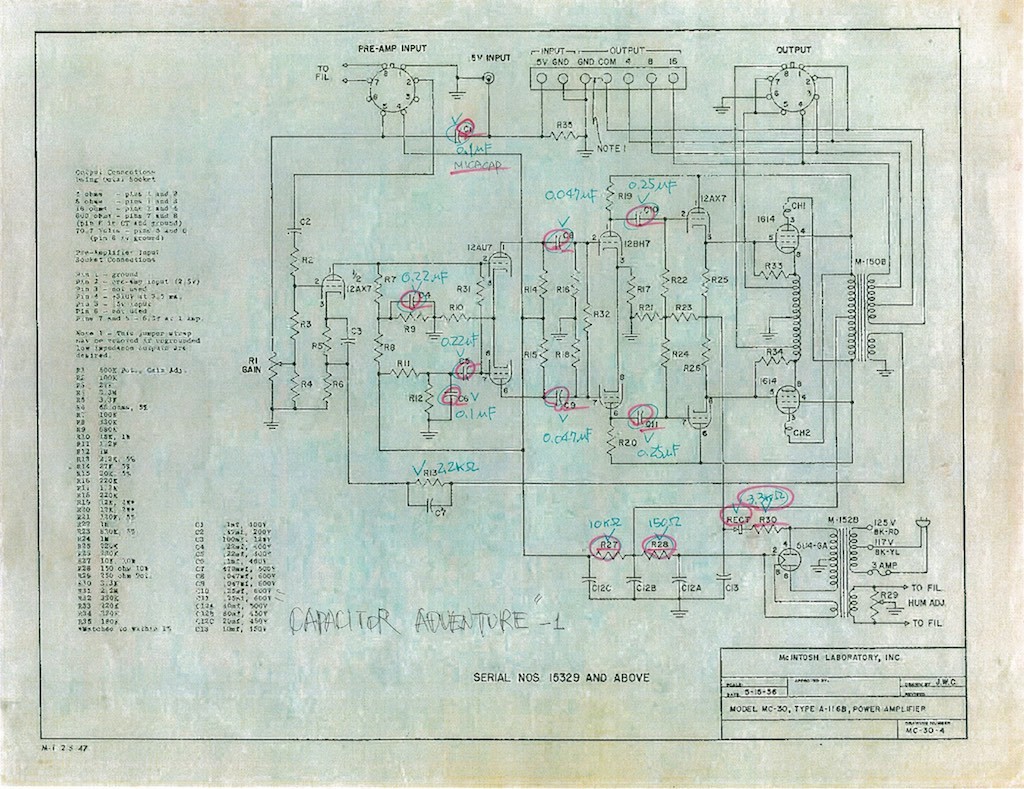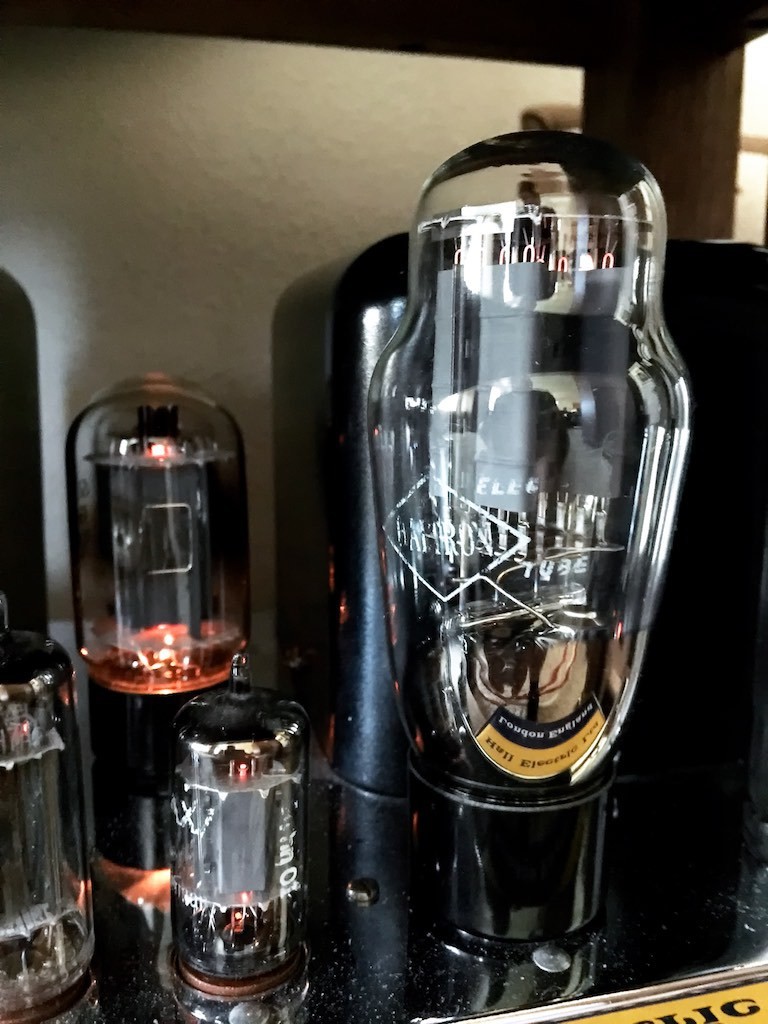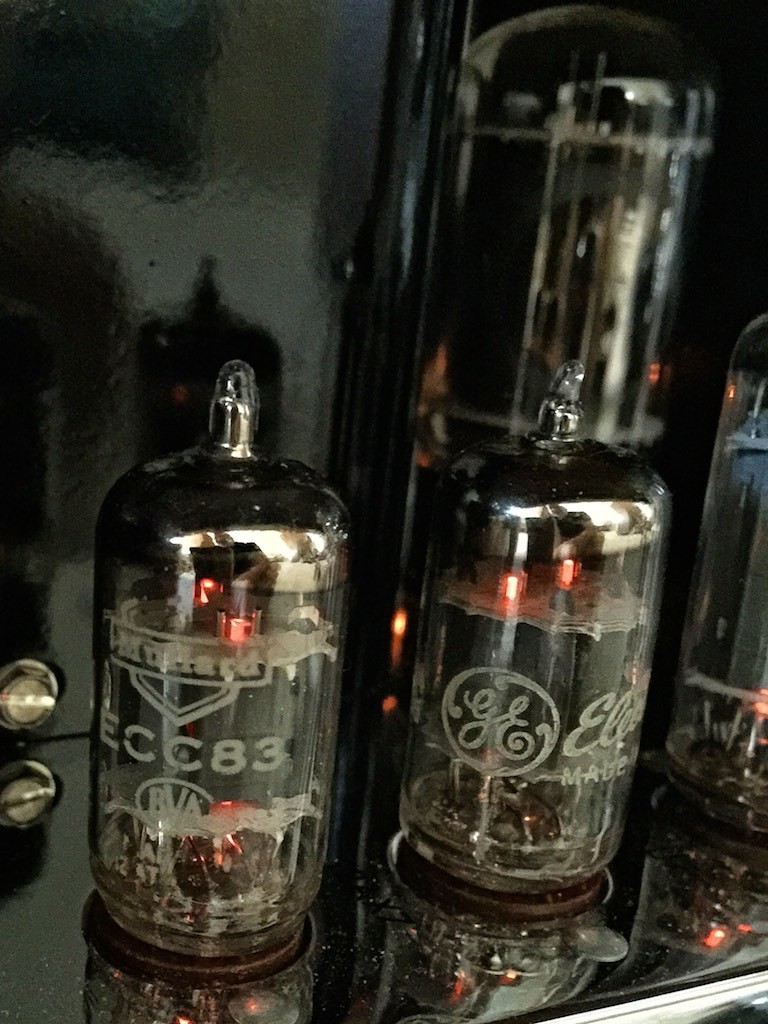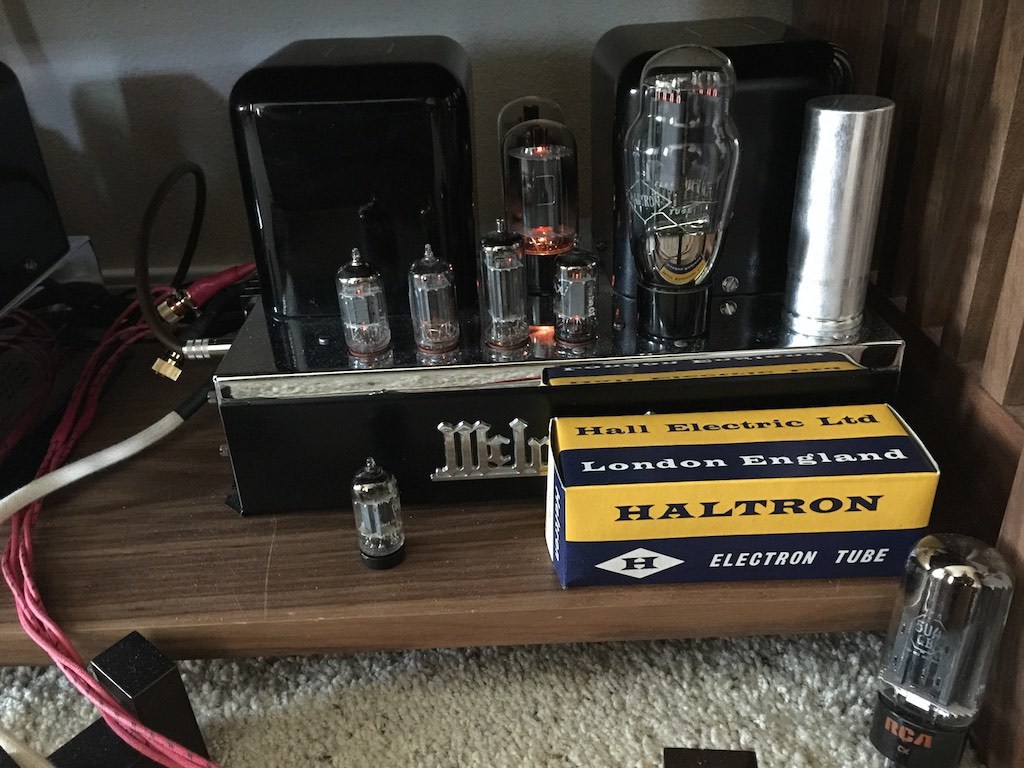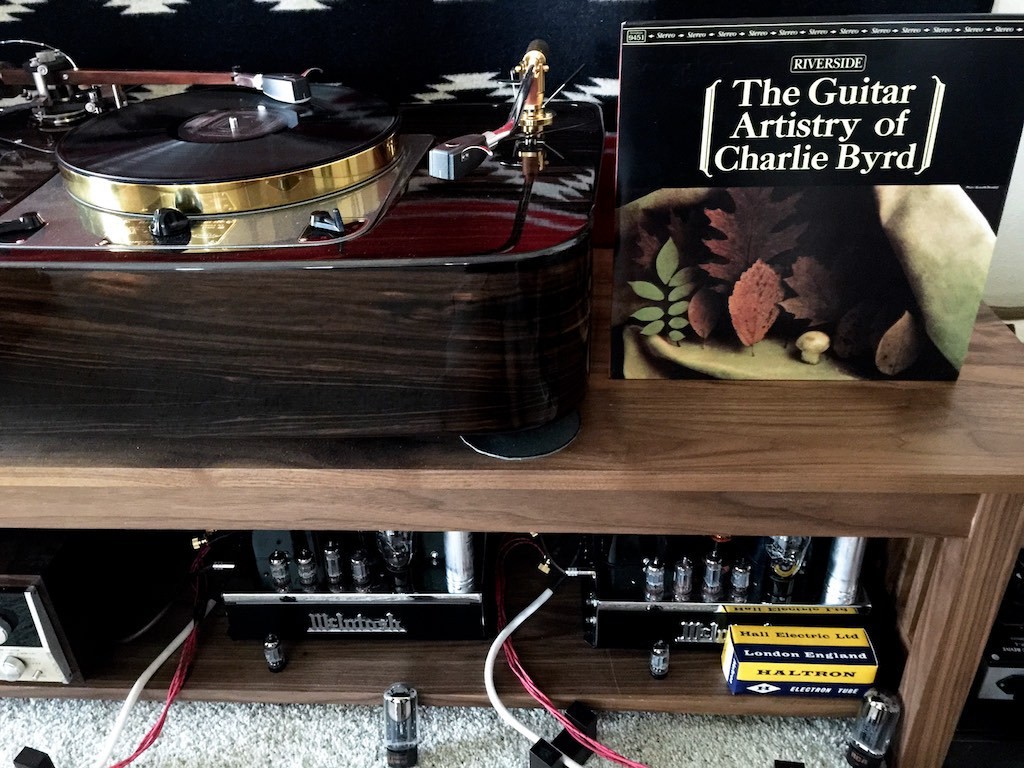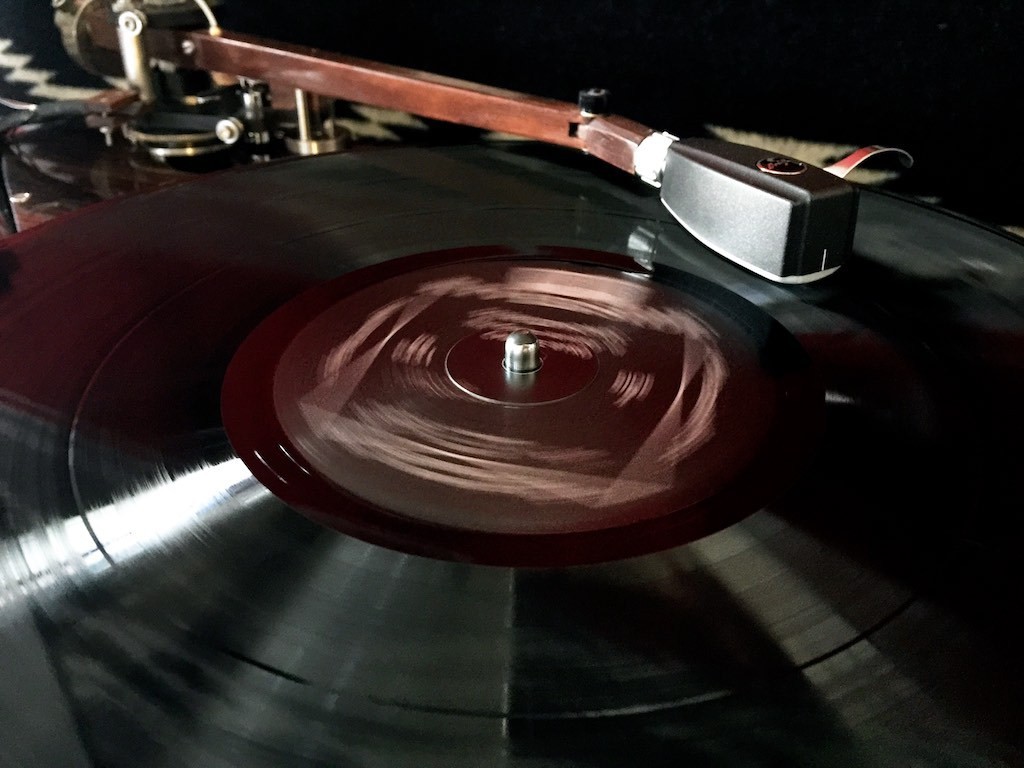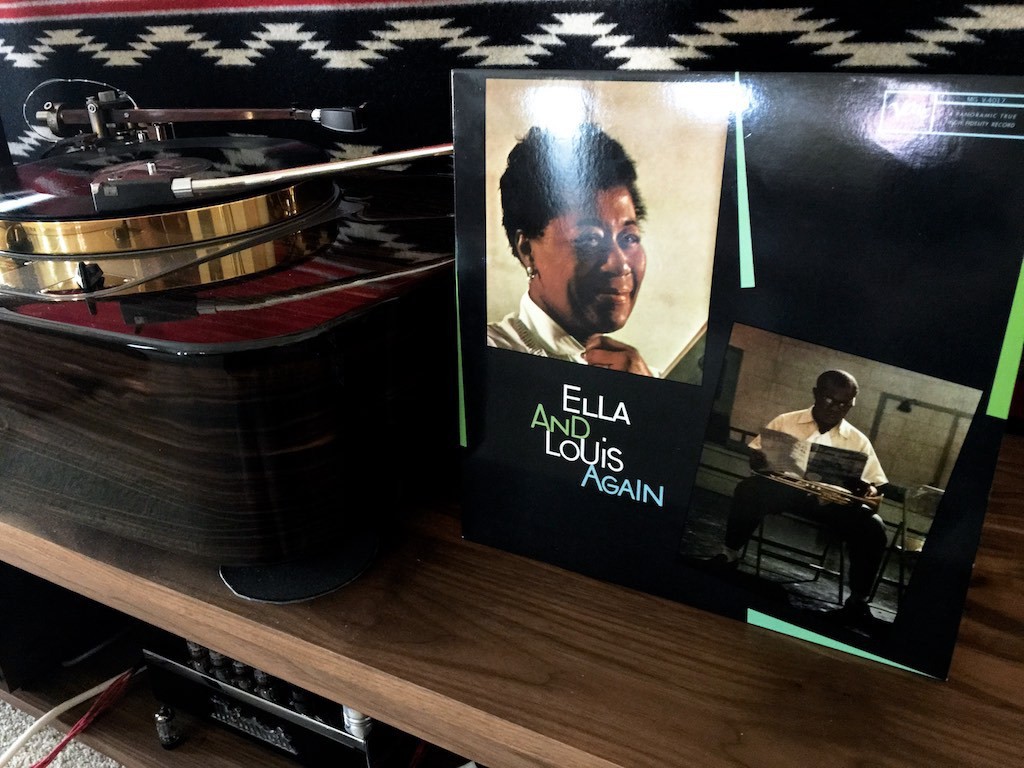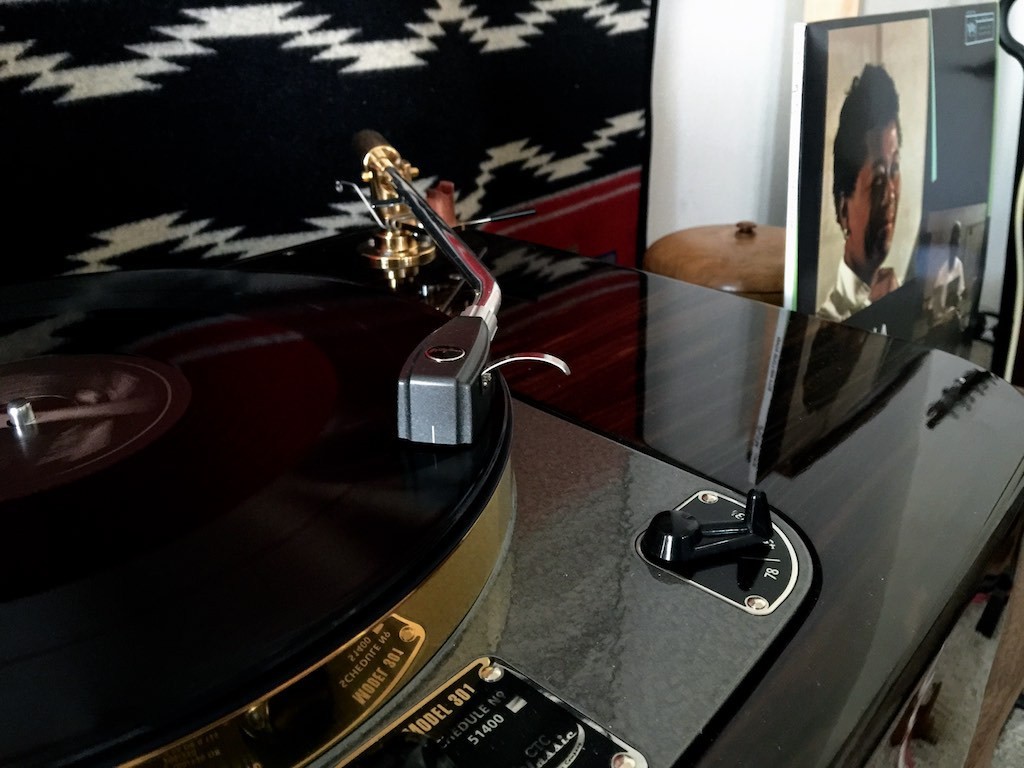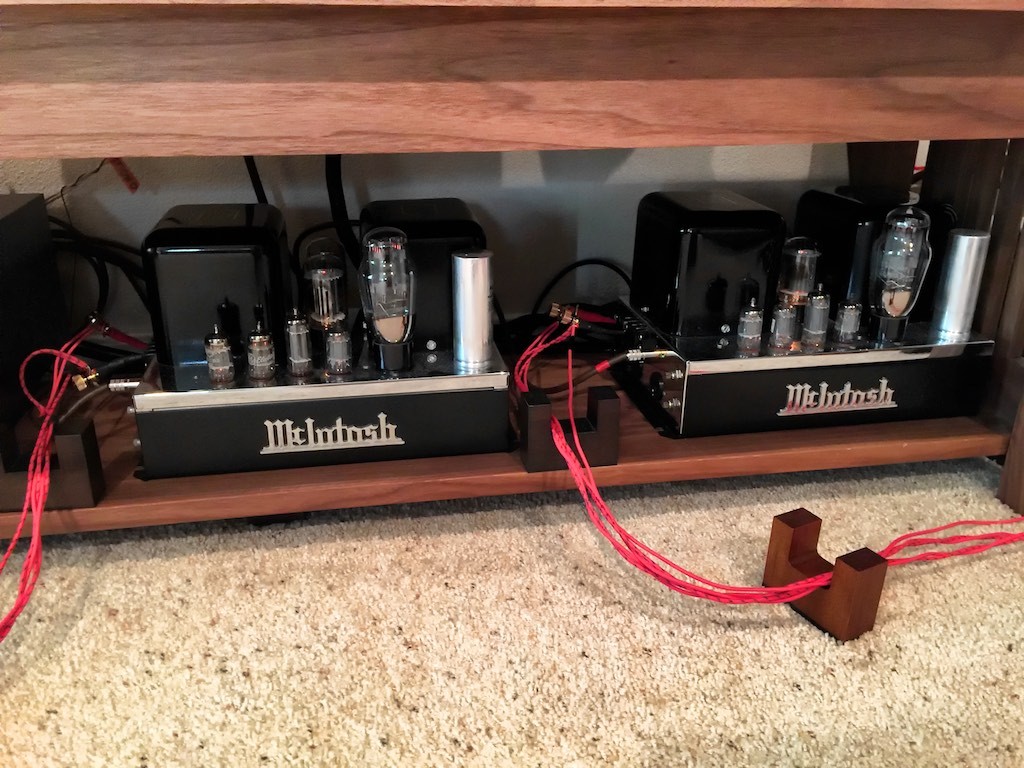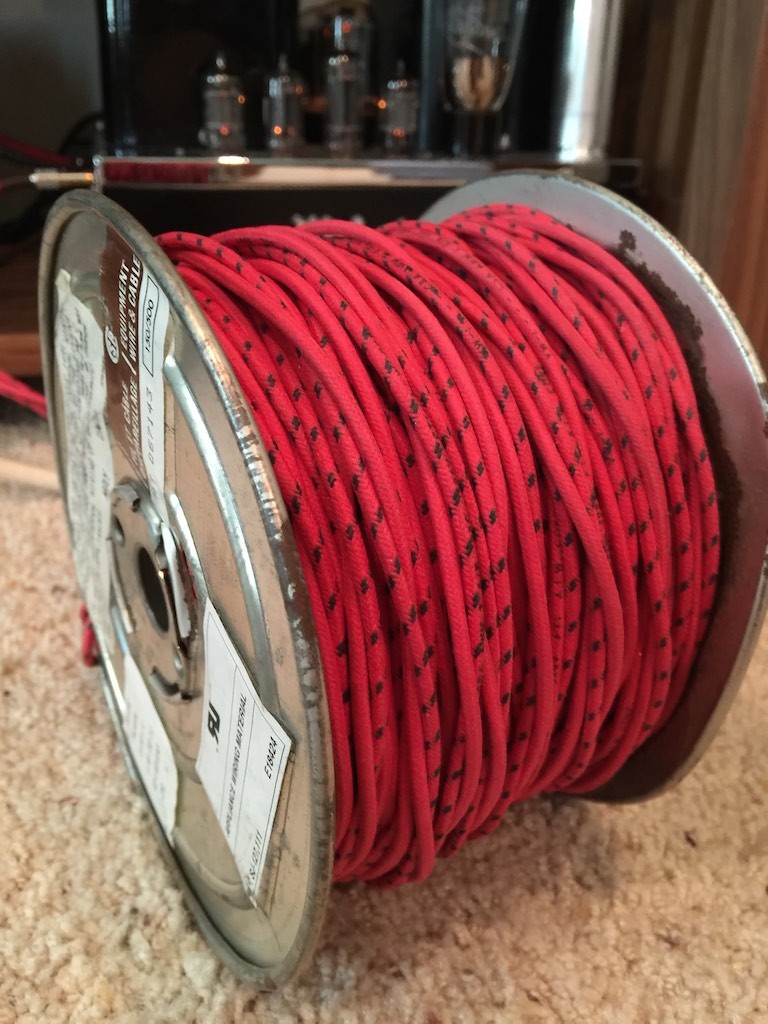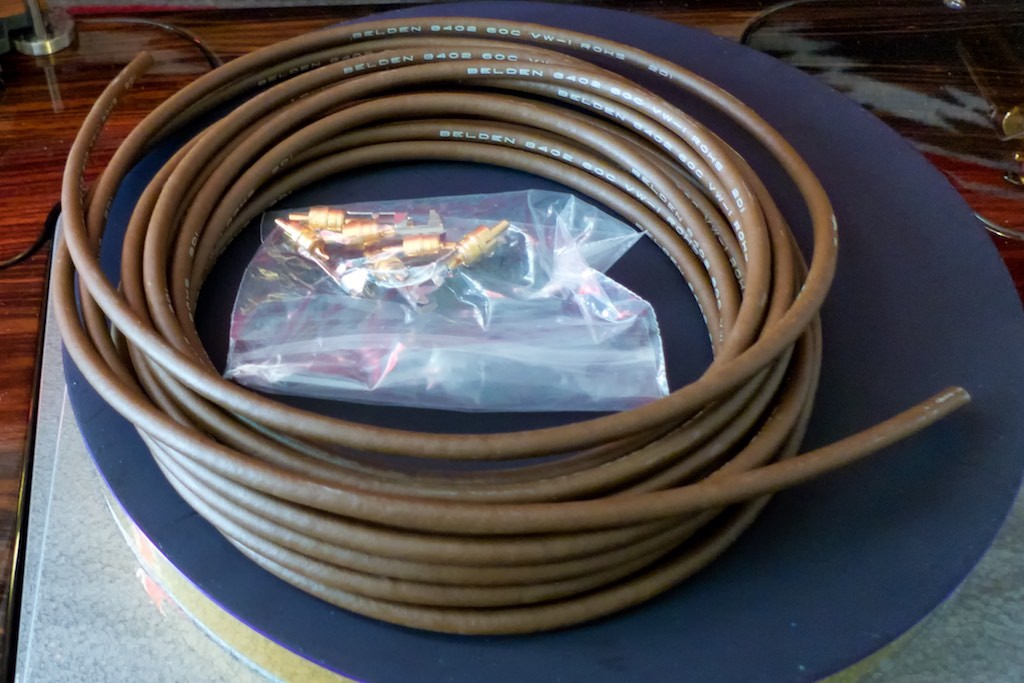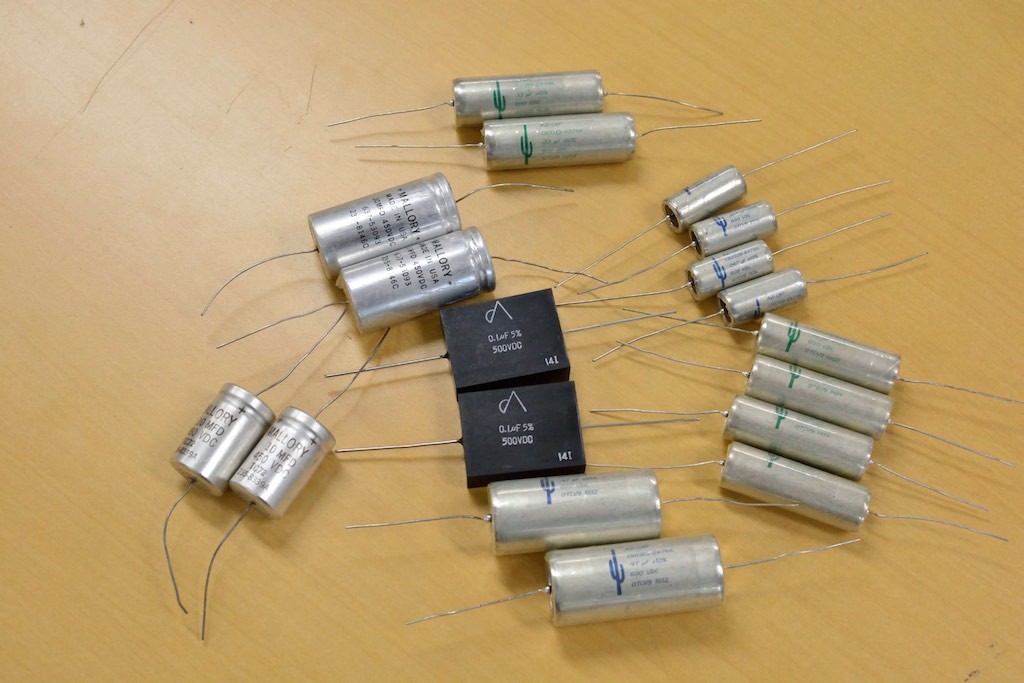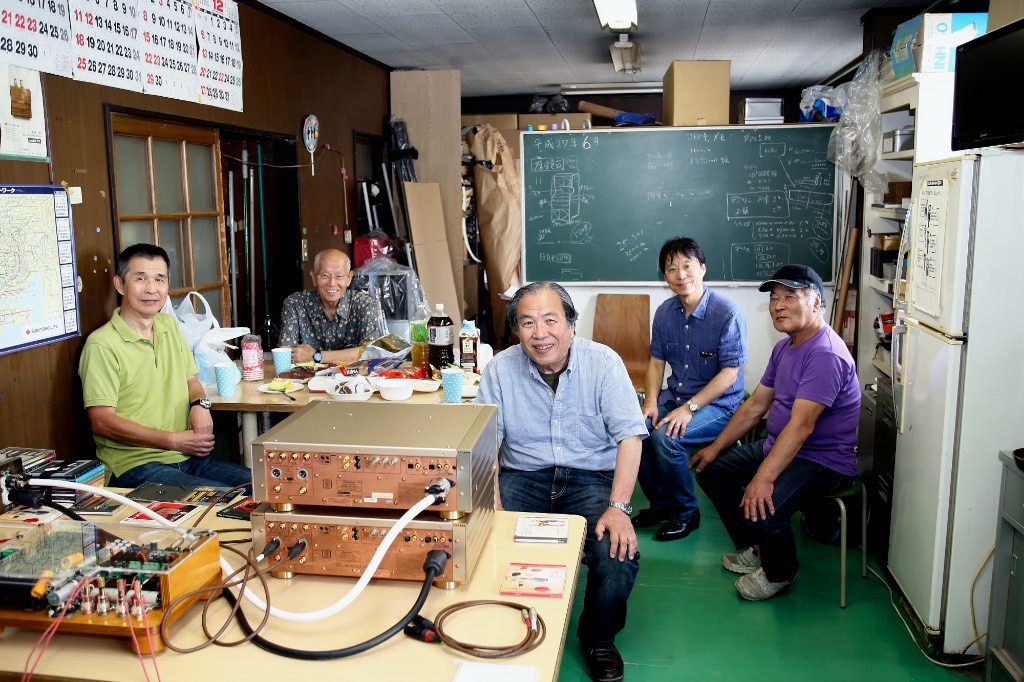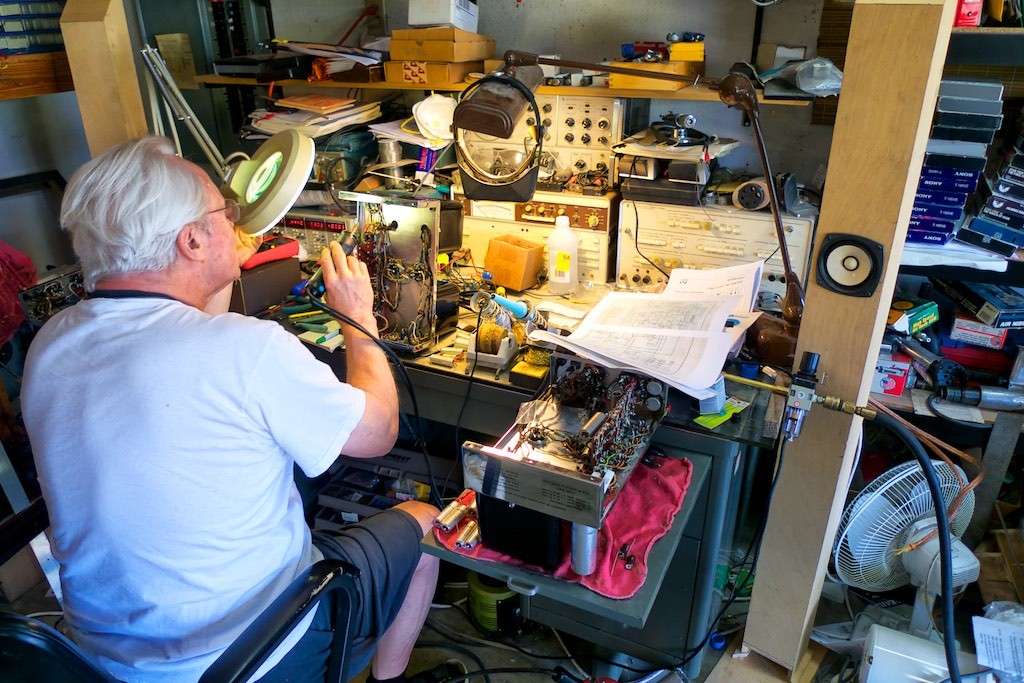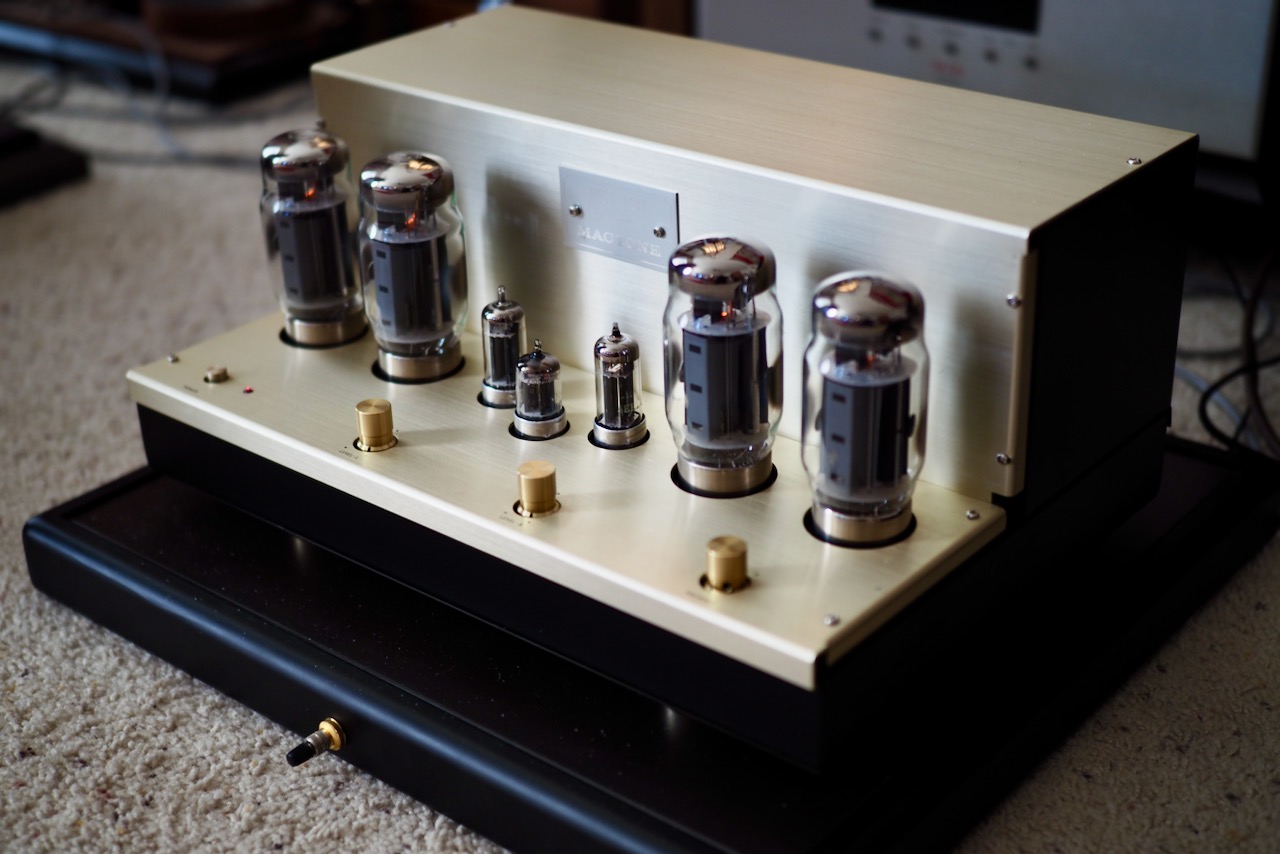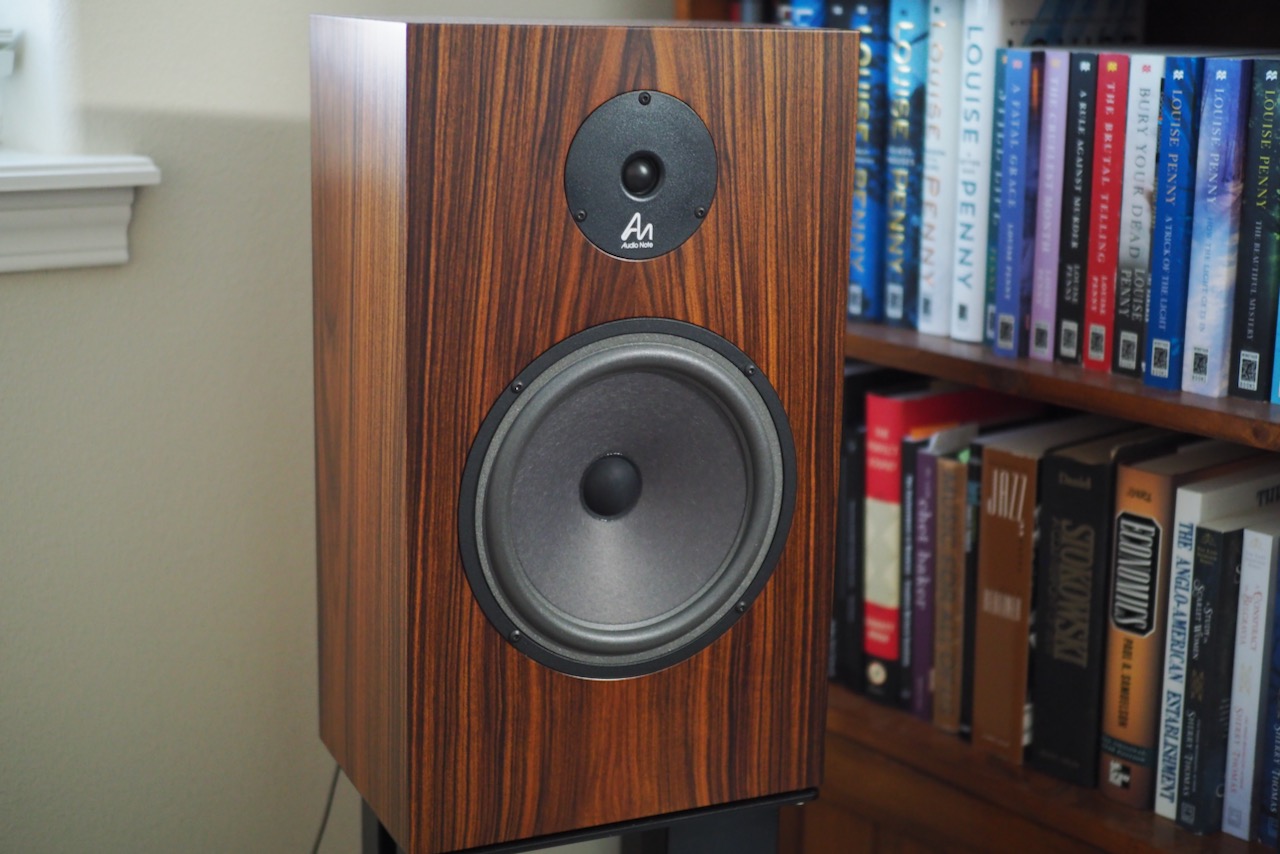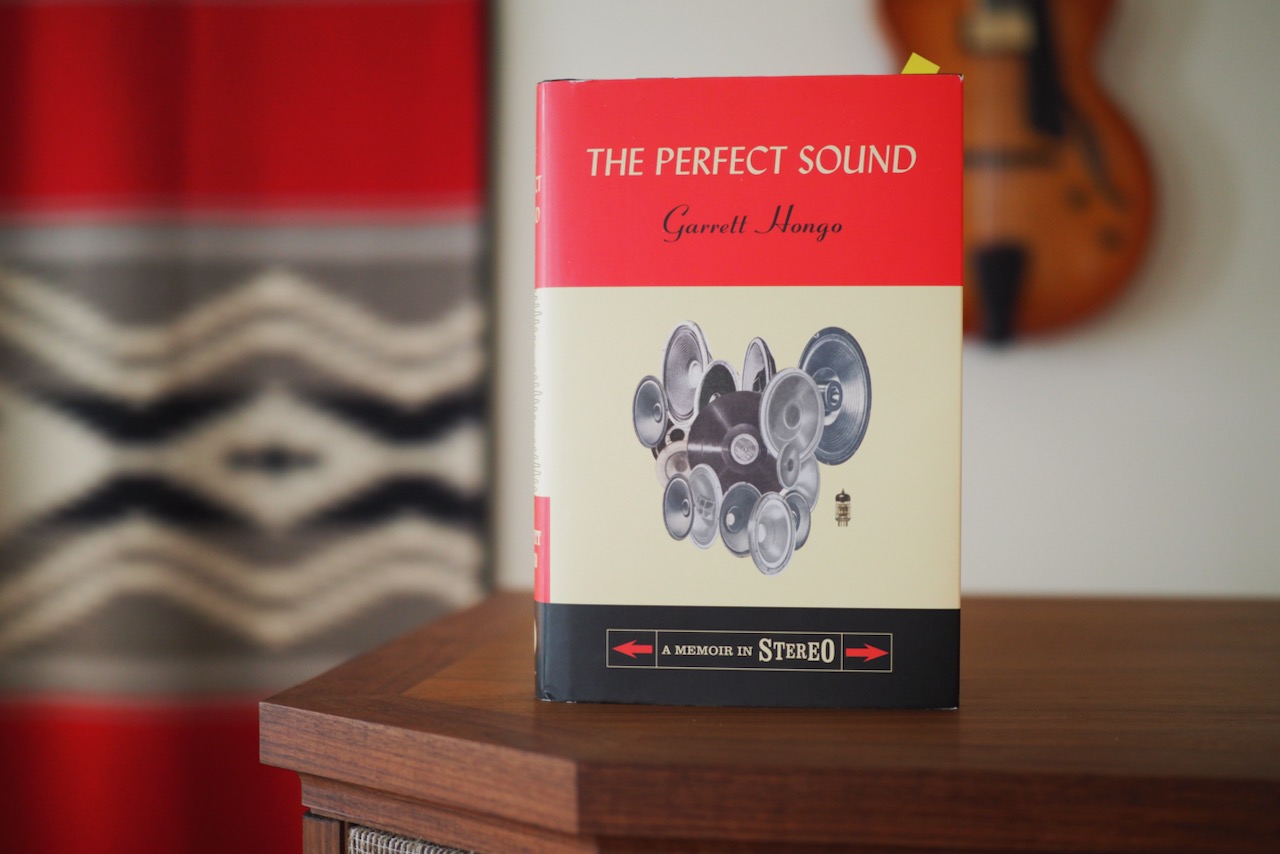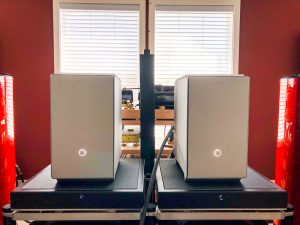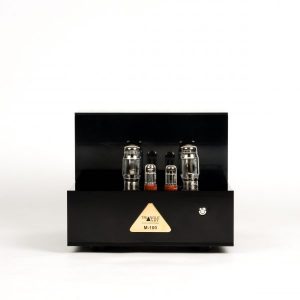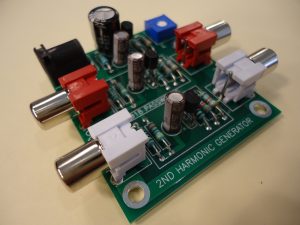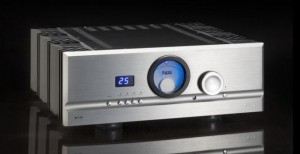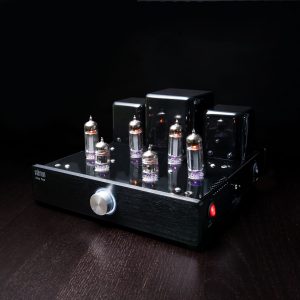In Issue 78 I introduced you to the remarkable Mr. Shirokazu Yazaki of Tokyo, Japan (above, center, with friends), in my article about the SPEC RSA-M3 Real Sound Amplifier.
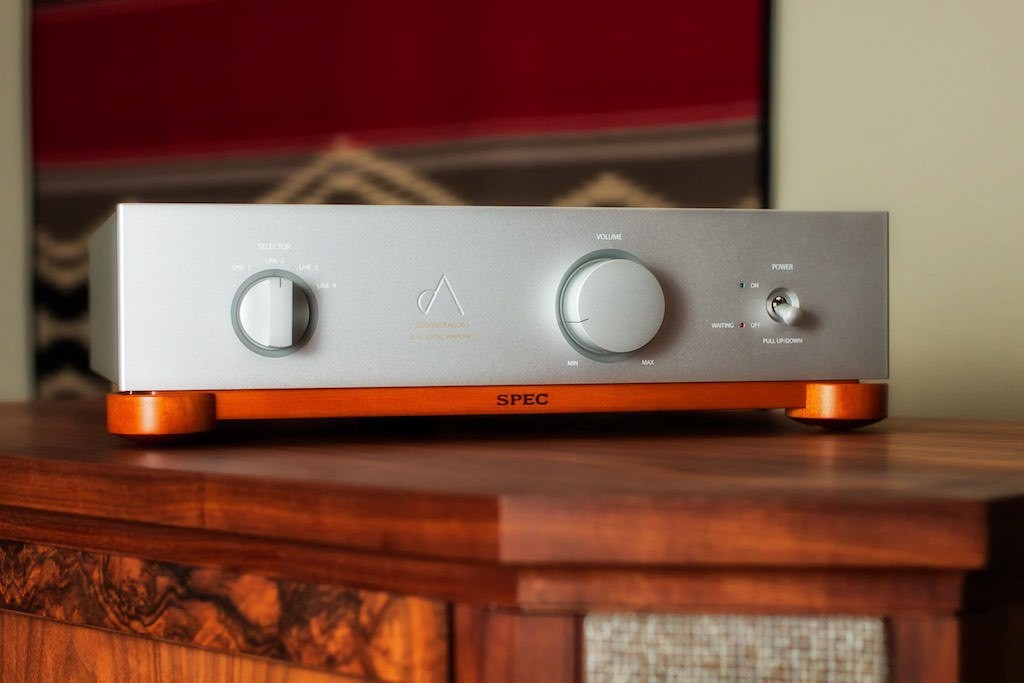 Mr. Shirokazu Yazaki has been a successful professional audio designer in Japan for over 40 years, and has been involved in the design of many fine audio components from some of the foremost Japanese electronics companies during that time, as well as being in charge of the Pioneer research & development center, and more recently, as a founder of the SPEC Corporation.
Mr. Shirokazu Yazaki has been a successful professional audio designer in Japan for over 40 years, and has been involved in the design of many fine audio components from some of the foremost Japanese electronics companies during that time, as well as being in charge of the Pioneer research & development center, and more recently, as a founder of the SPEC Corporation.
At the same time that Yazaki-san has been pursuing his professional audio career, he has also been a life-long music & audio enthusiast with interests in the direct-heated single-ended triode amplifier (DH-SET) and horn loudspeaker constructeur movement in Japan.
As a young university student, Yazaki-san was present at the beginning of DH-SET movement in Japan, which influenced his audio perceptions, and started him off on a life-long journey of assembling & refining his personal high-fidelity music system.
The young Yazaki-san started his personal audio journey by constructing his own DH-SET amplifier, then by building and customizing the classic Marantz 7 kit preamplifier, and over time he assembled and refined an Altec & Onken-based horn loudspeaker system, all of which he enjoys listening to music with to this very day.
In the midst of that life-long immersion of combined professional & personal interests in high-fidelity audio, a new way of hearing, feeling, and experiencing high-fidelity music reproduction emerged for Yazaki-san that he refers to as 'Real Sound', and he has incorporated those aspects of performance that create the 'Real Sound' experience into his home system of DH-SET vacuum tube amplifiers & Onken horn loudspeaker system, as well as into his cutting edge designs for the SPEC Corporation.
I was so impressed after discussing Yazaki-san's 'Real Sound' audio interests, and listening to his SPEC RSA-M3 Real Sound Amplifier, I said, "I think we may very well be living in another 'big' aha moment in audio history comparable to the one that happened with the DH-SET movement in Japan, now over 40 years ago …"
It can sometimes be difficult to recognize how significant an audio event truly is as it is occurring, until the passage of time allows one to frame it against other similar events in the context of history, like with the DH-SET constructeur movement in Japan.
Now a mere 6 months after my article in Issue 78, I am convinced that what I told you about Yazaki-san, and what he is doing with his adventures in 'Real Sound', is an even more significant audio event than I first suspected.
I want to share with you some of my adventures in exploring 'Real Sound' with Yazaki-san's mentoring, and with my good friend Ron Barbee's generous volunteering of technical expertise, as well as try to articulate for you, with several examples, what I am hearing, feeling, and experiencing when listening to music within Yazaki-san's 'Real Sound' context.
Adventures in Real Sound with Mr. Shirokazu Yazaki
These adventures in 'Real Sound' with Yazaki-san have become the title for this article, and I hope I can give you a sense of the significance of what these 'adventures in real sound' truly mean for the listening experience, and how you might start to incorporate those principles into voicing your own hi-fi in a way that could dramatically change the way you experience high-fidelity music in your home (that's what happened to me and many others that are following Yazaki-san's suggestions).
When I write about audio performance I normally use a reductionist methodology, by breaking performance down into basic audiophilia interests in recording artifacts like imaging, soundstaging, soundspace, resolution, and transparency, as well as those fundamental attributes of music such as timbre, tone color, tempo, melody, harmony, rhythm, dynamics, and loudness, for example, in order to paint you a picture of what a given component's performance is like.
However, my experiences with Yazaki-san's 'Real Sound' refers to aspects of audio performance that transcends both the recording artifacts & musical fundamentals I described above, while holistically combining them into an overall gestalt that delivers a home music experience that is natural, beautiful, visceral, and powerfully emotive, and which, I hope, will be the direction of the next frontier of home audio.
In personal terms, I can say that through Yazaki-san's mentoring and guidance (and Ron-san's generous help), I have been able to attain the sort of musical reproduction in my reference system that I have always dreamed about, but never quite attained, until now. It turns out Yazaki-san's 'Real Sound' is what my personal search for the holy grail in audio was always pointing towards, and now that I've finally been introduced to its essence, I'm excited, thrilled, and overjoyed about it.
A Different Kind of Listening Experience
I would like to remind you that not everyone hears music in the same way, and I'm not talking just about differences between individuals, but in the larger context of between cultures. I will point out that people around the world listen to music differently, by placing more attention on listening to certain aspects of music's attributes, than is common to other cultures.
For example, when Japanese audio enthusiasts were developing DH-SET amplifiers 40 years ago during that audio constructeur revolution, they were uniquely prepared by their culture to listen for different parameters of musical performance than was typical for most Westerners at that time, and they developed DH-SET amplification (and assembled audio systems) that optimized those musical elements.
In most of Western culture, the conventional way of listening to and interpreting music is for the ear to focus in on pitch & harmony first, but in the traditional cultures of Turkey, Africa, and Japan, the listener's ear focuses in on the textures & colors of the music first, which is called 'timbral listening' by ethnomusicologists.
I think that those Japanese audio enthusiasts developing DH-SETs and building Altec-Onken horn loudspeaker systems were more discriminating when it came to listening for the timbral aspects of music because of the tradition of timbral listening in their culture, and those particular components they chose & refined excelled in reproducing those timbral traits.
Those Japanese enthusiasts continued to develop and refine their systems so that their presentation of music's timbral and color elements were truly profound, and their timbral listening emphasis was expressed through equipment choices that maximized those qualities to result in a very different presentation of music than many listeners in the West were used to at the time.
This way of listening to music that was a beautiful expression of a particular culture's unique way of listening to music, timbral listening, that when some of us in the West heard it for the first time it was a true 'aha moment' that changed the way we thought about listening to music.
The Enlightened Ear and Real Sound
Yazaki-san's many years of professional & personal experience in audio design have given him an aural sophistication—an enlightened ear—for recognizing specific parameters & components that contribute to the timbral, color, and emotional aspects of music that make it come alive, and with a rather amazing ability to make specific recommendations that will move many hi-fi components or systems, whether vacuum tube or solid-state, toward the 'Real Sound' experience.
I'll attempt to describe what I think is at the foundation of Yazaki-san's 'Real Sound', but I'll leave it to Yazaki-san to describe it more completely. Basically, I think the foundations of Yazaki-san's 'Real Sound' are comprised of those timbral & color aspects of music that are centric in timbral listening traditions, plus exceptional performance in soundstaging & dynamics, along with a very natural portrayal of high-frequencies, and most importantly, I think, those attributes that stimulate 'feeling' and evoke an emotional response when listening to the music.
The combination of musical, sonic, and emotional traits that I'm hearing & feeling when listening to Yazaki-san's 'Real Sound' recommendations, have had a very profound effect on me, making record-after-record a "once in a lifetime" kind of experience.
Before I go on to tell you about the 'Real Sound' recommendations Yazaki-san made for my system, I want to share with you some of Yazaki-san's personal thoughts about 'Real Sound' from a previous discussion of ours.
Yazaki-san On 'Real Sound'
"My thoughts have been clearly coming into focus these days, that "when the reproduced sound is changed to a more 'real' one, I can feel more musicality, or in other words, more of the passion of the fabulous playing from it". Yes, I have confirmed again, that I want to experience an accurate drawing of my favorite superb playing from all ages and countries, for that 'once in a lifetime experience' with reproduced sound, and so I have long searched for my personal Real Sound.
But the storm center of such a discussion is the 'Real', which I feel is coming simply from my personal hearing sensibility, and I understand or recognize that everyone's personal sense for audio pleasure in the world must be a little bit different from each other. And so I would like to express how my hearing for audio has been formed, so your readers can get a common understanding about my personal sense. Accordingly, you could check and confirm how my sense is close to yours, but also, has or not, some kinds of generality and universality.
My First 'Real Sound' Experiences
In 1967, when I entered the university to study mechanical engineering, Japan had already reconstructed and licked its wounds from World War II, and there was an uplift of student power in university discussions, that along with the antiwar movement, seemed to lead the atmosphere of society in Japan. In 1968 the 'Prague Spring' and the Martin Luther King assassination occurred, so it was really turbulent times around the world for many others too.
Meantime, my eyes were opened to the music world of jazz by the influence of a friend. I remember well that John Coltrane passed away at that time. There were so many jazz cafés in Tokyo. At the jazz cafés analog LPs were playing endlessly, and the guests listened to jazz records for hours upon hours, with only a cup of coffee in the dim illumination, and each café developed their sound systems to compete with other cafés' audio systems. With that scene, the first modern jazz boom in Japan had come. Well, I already loved the jazz vocals of Anita O'Day and Mel Torme, and also adored such brilliant audio products from JBL, Altec, Marantz, and McIntosh by the end of my university days. In 1971 I was hired by TEAC, a tape recorder maker, as an engineer, and it came about as a natural result for me with my interests.
One Sunday afternoon, I went to a jazz café to fill up the time. The café was below ground, and so I went down the stairs to a thick glass door. When I reached to the door, I could clearly hear the sound through it of someone playing jazz piano. In the next breath, I went into the café, but I couldn't see anyone playing the piano. I only found & heard two big speakers that were playing lively real piano in the poor lighting. Well, as things turned out, the piece for piano was Chick Corea's "Piano Improvisation Vol. 1" and the speakers were the Altec Magnificent, displayed just like beautiful furnishings (and reminding me of the famous home-use Altec A-7), and they were played by either by Marantz or McIntosh tube amplifiers, I think.
I was so shocked at the sound, it could reproduce the strong touch of metal string, the sharp rise of tone timbre, and furthermore the furious penetrating sound field. I found out that sound would be a characteristic of a horn-type speaker. After that, in my audio enthusiasm I desired to have an excellent horn speaker system, and my desire was turned into reality, when towards the end of 1973, I bought a used a pair of Altec 414A woofers in a good condition, and then at last I acquired Onken OS-NEW500MT drivers and SC-500 wood horns in early 1975. My horn speaker system was completed in 1977 with a pair of OS-5000T Esprit tweeters.
There were reasons why I selected the Onken horn speaker system, one of which was the exceptionally flat frequency response of the horn speaker, with its thin titanium diaphragm, and the next was the organic & natural tonal character of the wood horn. I have long loved jazz vocals, and the wood horns were especially fine for female vocals. These high efficiency horn speakers, and my GEC DA30 SET non-feedback amplifiers, have long supported my audio 'Adventure' into seeking out my 'Real Sound'. In other words, the combination of the highly sensitive horn speaker system with excellent SET non-feedback amplifiers, have long brought me an extraordinary spell of timbre & sound, and also fulfilled my long felt feeling for the pleasure of audio that delivers the true delight of the music.
Recent Trend of 'High-End Audio'
To tell the truth, I have a crucial question for the trend of 'High-End Audio' to pursue audio quality based on the combination of a low-efficiency speakers and a high-power semiconductor amplifiers, which emphasizes a sound that expands on or behind the plane of speakers by emphasizing the feeling of elaborateness, wide range, and positioning, but with a rather thin tonal quality. Even if such a sound presents a high degree of 'perfection' from the viewpoint of audio measurements, does it really bring us the joy and excitement of music?
Unfortunately, I should recognize such sound, composed of low-efficiency speaker and high power semiconductor amplifier, has been the great majority. I suppose this trend might have removed mainstream audio far away from 'Real Sound'. In my opinion, the traditional linear semiconductor amplifier has two major weak points, one is the traditional semiconductor power amp varies the power by supplying the base current to the power stage bipolar transistor or the gate load for the FET. However, as these power semiconductors act like a variable resistor, the power loss in the power stage leads to useless energies, including heat. But also at the power transistor or FET in the end of amplifier stage, the energy should be changed from voltage to current, because current should drive the speaker. And this transformation leads to inevitable time delay. It could bring thin timbre. And second point is, the transfer function of a semiconductor is poor in linearity, the traditional amplifier inevitably needs to correct the static characteristic by performing negative feedback circuitry. But the negative feedback makes the amplifier stage vulnerable to the counteraction from the speakers, such as back electromotive force, causing complicated phase delays inside the amplifier. It might lead to singsong reproduced music. And these qualitative approaches could well demonstrate the sound or quality of linear semiconductor, I think.
My Thoughts for 'Real Sound'
Strange to say, but a well-built tube amplifier's sound and latest our Class-D amplifier's sound, it is so hard to make a distinction for me, and only the sound of linear semiconductor amplifier must be unorthodox for my hearing. How the joy of music would grow if the current mainstream speakers with wide range but low efficiency can reproduce higher-dimensional acoustic sound like the old vintage high efficiency speakers. In the development of 'Real-Sound' amplifiers, I have tried to make it possible to reproduce a tone that is beautiful, rich, and penetrating, as if appealing directly to the human emotions, a real three dimensional field, and a musical sound full of dynamism! Accordingly, we could find more clearly the unique fine technique of player and be moved by feeling the soul of virtuoso directly.
Surely, 'Real-Sound' might be faraway dream, but we could reach to very close to the dream by finding out and advancing vintage wisdom with latest technology. I'm just convinced so from the results of Jeff-san's 'Adventure' questing with Ron-san. And so I need kindred-spirits also in the future for me to pursue my faraway dream of 'Real Sound'.
Adventures in Real Sound with Yazaki-san
As you know, if you read my review of Yazaki-san's SPEC RSA-M3 Real Sound Amplifier in Issue 78, I was extremely impressed with its ability to "reproduce a tone that is beautiful, rich, and penetrating, as if appealing directly to the human emotions, a real three-dimensional field, and a musical sound full of dynamism," just as Yazaki-san has said above in his quest for 'Real Sound'.
Not only that, the SPEC RSA-M3 Real Sound Amplifier was able to do that with both my lower sensitivity Harbeth Super HL-5 conventional loudspeakers, and well as my higher sensitivity Tannoy Westminster Royal SE horn loudspeakers.
At that time I had not yet realized that what Yazaki-san was able to do with the performance of the SPEC RSA-M3 Real Sound Amplifier, he could also do for my own components—and stereo system overall—with a few relatively simple recommendations. Little did I suspect the miracle, the magic, which was about to unfold before my ears!
Just think about this for a moment: Yazaki-san, from his location in Tokyo, was able to analyze my components and hi-fi system (below), and make recommendations on how to transform it into a system with his 'Real Sound' performance signature. I'll elaborate more on this in a moment, but suffice it to say that is an incredibly difficult thing to do, and Yazaki-san did it with ease. Both Ron-san and I were incredibly impressed with Yazaki-san's ability to do this voicing from a distance, and our respect for his abilities are immense.
Keep in mind that I already have relatively sensitive horn loudspeakers with my Tannoy Westminster Royal SEs, and my vintage McIntosh vacuum tube electronics already do pretty well on the 'Real Sound' scorecard. In that context Yazaki-san made three recommendations to me that he thought would help move my system more towards 'Real Sound', the first being the nuevo-vintage Belden 8402 microphone cable used as RCA interconnects:
The second being true vintage Western Electric WE16GA wire used as speaker cables (and later as crossover & loudspeaker internal wiring):
The third being internal component modifications to my vintage McIntosh MC30 monaural vacuum tube amplifiers:
The Vintage Beat: Belden 8402 Microphone Cable Interconnects
While I was conversing with Yazaki-san while writing the SPEC RSA-M3 EX Real Sound Amplifier article for Positive Feedback Online, he told me about two vintage American cables that he was very impressed with, and has been using at international audio shows to demonstrate his SPEC audio electronics, one of which was the nuevo-vintage Belden 8402 microphone cable used as RCA interconnects (I say nuevo-vintage, because unlike most vintage products which are no longer available, you can still buy Belden 8402 brand new off the spool).
Yazaki-san crafted two pairs of Belden 8402 microphone cable into RCA interconnects for me to try in my system: one 0.75 meter pair to use with my phono cartridge step-up transformer (SUT), and one 2-meter pair to use from my restore vintage McIntosh MX110Z preamplifier to my restored vintage McIntosh MC225 & MC240 stereo amplifiers, or restored vintage McIntosh MC30 mono amplifiers, as the case may be.
Yazaki-san built the Belden 8402 microphone cable interconnects using Switchcraft SWC-3502AAU RCAs and Kester 44 solder, which coincidentally created an 'All-American' vintage-style cable! I thought the gold plated pin & plug housing with the nickel handle of the Switchcraft SWC-3502AAU RCAs made for a very attractive combination with the brown Belden 8402 microphone cable.
The Belden 8402 microphone cable is a two conductor low-impedance cable, which Belden describes as "20 AWG stranded (26×34) high-conductivity tinned copper (TC) conductors, EPDM rubber insulation, rayon braid, TC braid shield (85% coverage), cotton wrap, CSPE – Brown Chlorosulphonated Polyethylene jacket".
Yazaki-san constructs the Belden 8402 microphone cable interconnects like this:
One conductor goes to the RCA pins (hot), the other conductor goes to the plug housings (ground), and the shield is connected at each end to the ground.
This is a little different connection method than is traditional here in the USA, where the norm is to connect one conductor to hot (pins), one conductor to ground (plug housings), and connect the shield only on one end (normally the source end) to the ground. Yazaki-san's Belden 8402 microphone cable interconnects worked beautifully in my system.
Think about this for a moment: It turns out that back in the day that Belden 8402 was the choice for microphone cables in a fair number of recording studios (and other pro-audio applications), so there's a reasonable chance that for your beloved recordings, the live music went to the microphone, down the Belden 8402 microphone cable, and onto the master tape. Part of what you and I associate with 'the master tape sound' is unsurprisingly the sonic characteristics of Belden 8402 microphone cable.
Yazaki-san's Belden 8402 microphone cable RCA interconnects arrived the very same day that my audio pals Leo, Pete, Ron, and Stephaen were coming over for some audio fun & games. Leo, Pete, Ron, Stephaen, and I played a bunch of different mono & stereo records and had a general blast listening to music.
So how did the Belden 8402 microphone cable fare as an RCA interconnect? Fantastic! Even with zero time on them, straight out of the package from Tokyo, they performed amazingly well. Smooth and natural, timbrally realistic, beautiful tone color, and terrific musicality. Yazaki-san regards the Belden 8402 microphone cable "as some kind of ultimate" and I wouldn't disagree.
I should mention also that when Yazaki-san speaks of the Belden 8402 "as some kind of ultimate" he is speaking of it in terms of his 'Real Sound' context, related to its ability to sound rich & natural, timbrally realistic, with beautiful tone color & musicality, and a high level of emotional involvement, rather than in more typical audiophile terms of transparency, resolution, neutrality, and the like.
Take for example the handcrafted Sablon Audio Panatela interconnects that are my reference: they are more transparent, resolving, and neutral than the Belden 8402, while still being smooth & musical. Most people are blown away when they hear the Panatela for the first time, and for good reason, they're superb.
When listening to both interconnects, my friends Leo, Pete, Ron, and Stephaen, who normally perceive things quite similarly performance-wise, were evenly divided about which interconnect they thought had the best performance, with half favoring the Belden 8402, and half the Panatela.
Those who have been following my articles here at Positive Feedback know that the Panatela is a true high-performance interconnect in contemporary audio terms, doing everything sonically & musically, extremely well, and the Panatela has been my favorite interconnect for a long time.
So what is going on here with the Belden 8402 versus the Panatela? The Belden 8402 has more of a 'vintage' tonal balance, with less pronounced high & low frequencies, a superbly rich & colorful mid-range, a more timbrally 'textured' presentation, as well as providing an almost indescribable & uncanny emotional connection to the music.
I've got some bad news: the Belden 8402 is non-existent in the USA from the normal audio outlets. Sorry about that. You can find it from a few pro-audio providers, but Belden sells it in studio relevant 500-feet spools as a minimum order, so it's hard to find shorter lengths.
So you're probably wondering how much it would cost to build a 1-meter pair of interconnects using Belden 8402. Well, about a $1000 USD. Kidding! Belden 8402 sells for about $2.75 USD per foot or less (at the time I bought mine), depending where you buy it. So it'll cost you less than $50 USD to build a 1-meter pair of interconnects. It is an incredible bargain.
I searched high and low for someone who sells it by the foot here in the US, and I found one pro-audio supplier that was willing to sell it by the foot (10-feet minimum order), Best-Tronics Pro Audio in Tinley Park, Illinois, and they'll even assemble it into interconnects using Switchcraft SWC-3502AAU RCAs for a modest price, if you ask them nicely. Here's a link to their Belden 8402 page where you can buy it by the foot.
Here are a couple of comments from readers & friends about their experiences with the Belden 8402 microphone interconnects:
"… we tried fifteen foot Belden 8402 interconnects made per Yazaki San specs (shield connected to negative wire on both ends) to connect my modified Wright line stage to the Beveridge Model 2SW speakers. Wow! Though the Beveridges have always sounded wonderful with the nondescript 25 foot coax RCA interconnects I had been using, the Belden 8402 interconnects gave the Beveridges a not-before-heard transparency, much better dynamics, and lovely non-clinical highs. What surprised me more than anything else was that with the Belden 8402 going to the Beveridges, my first impression was that the dynamics and highs of the Beveridges seemed to exceed the dynamics and highs of my Po' Boy horns, and in a completely non-clinical way." (Pete Riggle)
"I just rolled another pair of these wonderful Belden interconnects to use between my Sony ES SACD/CD player and my ARC LS7 line stage, and I have to say the improvements in the sound quality are commensurate with what I hear with these cables between my ARC PH5 phono stage and LS7 line stage, and from the line stage to my power amps. The sound is richer harmonically, the soundstage is larger in all three dimensions and the tonality is spot on." (Rich Hing)
I get messages like Pete's and Rich's almost every day, praising the Belden 8402 microphone cable interconnects, because they're ridiculously good and the price is right!
The Vintage Beat II: Western Electric WE16GA
The second vintage wire that Yazaki-san recommended to me was Western Electric WE16GA, which in true vintage fashion is no longer made, and is getting harder to come by every day as word is getting out about its incredibly musical performance.
The Western Electric part number for the WE16GA was KS13385L-1, and the American Insulated Wire Corporation produced it for Western Electric. Yazaki-san told me that the Western Electric WE16GA is " …16 gauge, with a simple structure, old primitively processed copper wire, with unexceptional tin plating …" and that it "… might be the best or most natural for our hearing as an audio speaker cable …"
Both the Belden 8402 and Western Electric WE16GA share in common a stranded, tin-coated, copper conductor. The WE16GA adds a cloth covering over an inner polymer sleeve. Neither seems particularly 'special' when you look at them, but they are tasteful looking, and of course they sound extremely musical. (Hint: If you're someone in the position to make it happen, a modern reproduction of the Western Electric WE16GA would be a great contribution to audio, and would likely fly off the shelves if priced morally.)
Yazaki-san sent me enough of Western Electric WE16GA wire to make a full set of bi-wire speaker cables for my Duelund-ized Westminster Royal SE loudspeakers, so I could experience his full set of reference wiring at once. I conditioned all my wire on an Audiodharma Cable Cooker to speed the run-in process (above).
Yazaki-san says the Western Electric WE16GA wire has an "artistic and organic sound quality," and I concur, it has an immediately enjoyable tonal balance that makes music listening a beautiful and engaging experience.
Like Yazaki-san's SPEC RSA-M3 EX Real Sound Amplifier, the Belden 8402 microphone cable RCA interconnects, the Western Electric WE16GA used as speaker cables is truly remarkable in its 'Real Sound' performance, and my usual way of describing audio components in reductionist terms of imaging, soundstaging, soundspace, resolution, transparency, truth of timbre, tone color, tempo, melody, harmony, rhythm, dynamics, and loudness, for example, just don't do it justice.
The Western Electric WE16GA really does a wonderful job on all those sonic & musical attributes, but it also goes way beyond those descriptors in the way it emotionally connects the listener with the music, and the way it makes you feel while listening to music. The Western Electric WE16GA has in spades those qualities that Yazaki-san describes as his goals for the 'Real Sound' experience, "I have tried to make it possible to reproduce a tone that is beautiful, rich, and penetrating, as if appealing directly to the human emotions, a real three dimensional field, and a musical sound full of dynamism! Accordingly, we could find more clearly the unique fine technique of player and be moved by feeling the soul of virtuoso directly."
Western Electric WE16GA in the Duelund-WRSE Project
Those of you who have been reading my articles for a while know that Frederik Carøe of Duelund Coherent Audio inspired me to try high-performance outboard crossovers for my Tannoy Westminster Royal SE loudspeakers, utilizing the state-of-art Duelund CAST capacitors, resistors, and inductors. I documented my journey deep into the high-performance world of Duelund CAST components for the readers of Positive Feedback (Issue 70, Issue 74) and in even more detail at my own blog, Jeff's Place.
In the Duelund-WRSE Project we created state-of-art external crossovers with a superb selection of Duelund CAST components recommended by Frederik Carøe. All of my WRSE's internal wiring harnesses were removed, and we routed cabling directly from the Dual Concentric drivers down through the cabinets and out to the new Duelund CAST crossovers we had created.
Right about the time I tried the Western Electric WE16GA as speaker cables, I heard via the audio underground that a designer & manufacturer of extremely high performance loudspeakers began to wire them internally with Western Electric WE16GA, with superbly musical results. But that's a secret that no one's supposed to know.
I decided I wanted to try the same thing with my Duelund-WRSE Project, and ordered enough Western Electric WE16GA through Yazaki-san to completely rewire my external Duelund CAST crossovers & Westminsters internally.
When I first did the Duelund-WRSE Project, I used 20-gauge Neotech solid-core UP-OCC silver wire with a Teflon jacket for the high-frequency section of the crossover (above, blue), and 14-gauge Neotech solid-core UP-OCC copper wire with a Teflon jacket for the low-frequency section of the crossover (above, red). The Neotech is really good wire.
Given that my system sounded pretty wonderful the way it was, I proceeded cautiously, first installing the Western Electric WE16GA in the high-frequency section of my Duelund CAST crossovers (above). Bluntly, the vintage Western Electric WE16GA absolutely killed my fancy 20-gauge Neotech solid-core UP-OCC silver wire. Killed it!
That of course meant that I needed to try the same thing in the low-frequency section of the Duelund CAST crossovers, replacing the 14-gauge Neotech solid-core UP-OCC copper wire with a Teflon jacket, with the vintage Western Electric WE16GA.
The copper Neotech in the LF section sounded pretty good actually, so it wasn't quite as dramatic a slap-down when changing to the vintage Western Electric as it was with the silver Neotech in the HF section of the Duelund CAST crossover.
Hindsight often provides useful insights it seems, and my primary insight in the swap to WE16GA was that using different wire types in the HF & LF sections of the Duelund CAST crossovers caused the sound to be less cohesive and balanced than it was when using the same vintage Western Electric WE16GA wire in both HF & LF sections.
The use of the Western Electric WE16GA in both the HF & LF sections of the Duelund CAST crossovers gave a seamless coherence to the high & low frequencies of music that, in retrospect, was somewhat lacking when using the two differing Neotech wires, as well as increasing the overall "transparent, beautiful, rich, dynamic, and possessing real stereoscopic sound full of musicality" sonic signature of the vintage Western Electric WE16GA wire, as Yazaki-san says.
So there you have it. The experiment of replacing the Neotech wire in my Duelund CAST external crossovers for my Westminster Royal SE loudspeakers with Western Electric WE16GA was a complete success, and I'm really enjoying the result.
Bolstered by my success rewiring the Duelund CAST external crossovers of my WRSEs, I took a very deep breath, and took out all the screws that hold the back of my Westminsters in place. I proceeded to remove the superb Panatela interior wiring (gulp!), and then began to solder in the vintage Western Electric WE16GA in its place.
First I ran continuous lengths of WE16GA from the ground on the Dual Concentric drivers out to the grounds on my vintage McIntosh MC30 monaural amplifiers. If you're not utilizing that 5th ground binding post on your Tannoys, you should really give it a try; it makes a very meaningful improvement (thanks to Jim Smith for that recommendation).
I soldered Western Electric WE16GA wires to the high-frequency connections on the Dual Concentric drivers, and then routed them out through the cabinets to the external Duelund CAST crossovers. I then repeated the exercise by soldering Western Electric WE16GA wires to the low-frequency connections, and then routed them out to the Duelund CAST crossovers, after which I put the backs of the Westminsters cabinets back in place, and snugged up all of the screws.
After I double-checked that everything was indeed wired correctly, I fired up the vintage Mac electronics so Ron and I could take a listen to the results.
We listened to a variety of albums new and old, from the superb 45-RPM Mingus Ah Um, to my ratty old Led Zeppelin IV album's 'Stairway to Heaven' …
… The Rolling Stones 45 RPM single reissue of 'I Can't Get No Satisfaction' …
… Simon and Garfunkel's The Concert In Central Park …
… Ella & Louis in mono 45-RPM from Analogue Productions to top things off.
In each and every case we were completely blown away with the transformation brought by the vintage Western Electric WE16GA on the music. As Ron said, "Nobody is going to believe what we're hearing from your Westminsters with this Western Electric internal wiring, it's hard to put into words how good it sounds."
There's nothing about this vintage Western Electric WE16GA wire that suggests why it would be so superbly musical, after all it seems rather ordinary with its strands of tinned copper conductors in a polymer sleeve with a fabric covering, and rather modest appearance. Yet it is capable of the most astoundingly musical performance of any wire I've ever heard. It is rich, detailed, throws an enormous soundstage, has truth of timbre, has gorgeous tone color, allows you to play music loud without stress, has an incredibly convincing portrayal of beat, rhythm, melody, and with dynamics that will blow your mind. It also is very evenly balanced from top-to-bottom, with bass & treble sounding particularly natural and 'real', or as Yazaki-san would say, 'Real Sound'.
Ron's right, it was hard to put into words how good the vintage Western Electric WE16GA sounds in my Westminsters & Duelund CAST crossovers, and it may take me a while to come to grips with what I'm hearing from it, and be able to articulate it adequately. You can forget all the standard audiophile descriptors, as while the WE16GA is good in normal audiophile terms, it is doing things musically that are so far outside the normal audiophile realm that it makes it hard to describe how powerfully it affects the listener, and why.
There is nothing about the Western Electric WE16GA wire's construction that would suggest how wonderful it sounds. It seems rather ordinary with its tinned multi-stranded copper conductors, internal 'Saran-like' sheath, and cloth exterior, but its sonic & musical attributes are anything but ordinary, in fact they're extraordinary!
I realize it is somewhat cruel telling you all about how wonderful this vintage Western Electric WE16GA wire is, and then at the same time having to tell you how unobtainable it is to find for your own project. I'm sorry about that, but the Western Electric WE16GA story is one heck of an interesting one, which deserves telling in spite of its rarity, and it makes my respect for accomplishments of Western Electric increase even further, as if that were possible! Maybe one of you clever folks out there can figure out how to get AIW to make some more runs of it.
My system is now wired from source to amps with Belden 8402 microphone cable interconnects, and from my vintage Mac amplifiers to the Dual Concentric drivers in my Westminsters with Western Electric WE16GA. The combination of those two sounds like magic in my system, and pretty much just blows me away with how musical and emotionally engaging it is.
Western Electric WE24GA Headshell Wires
Here's a secret that Yazaki-san shared with me: Not only is vintage Western Electric WE16GA a fantastic discovery for loudspeaker applications, it turns out that vintage Western Electric WE24GA single conductor wire fashioned into headshell wires is equally wonderful.
In the photo above you can see the vintage WE24GA headshell wires that I swapped out for the stock wires on my Yamamoto headshell.
In the photo below you can see the vintage Western Electric headshell wires compared to the stock Yamamoto wires. The vintage Western Electric wires have a single conductor with a fabric wrap, and they are a lot larger than your usual headshell wires. They are also rather stiff, so they are a bit of a challenge to work with.
Headshell wires are pressed onto the pins of the connector, so all you do is grab a pair of tweezers and pull them off. The connector pins on the vintage WE24GA headshell wires that Yazaki-san sent me were quite a bit tighter than the ones on the stock headshell wires, so I used a safety pin to spread them a little to fit, then used tweezers to push them in place.
I had to do the same to mount the wires to the pins on the phono cartridge. They were a tight fit, and the vintage WE24GA wires are stiff so it's a bit tricky, so you have to be careful or you'll break off a connector and then have to solder it back on the wire, which is no fun given their small size (don't ask!).
The difference in sound & musicality between the stock & WE24GA headshell wires was at least as big in magnitude as the difference between different interconnects. The WE24GA headshell wires soundly trounced the stock headshell wires, bringing the same sorts of gains in richness, texture, tone color, emotional connection, etc., as do the vintage Western Electric WE16GA wire as speaker cables.
Who would have thought that vintage WE24GA as headshell wires could have such a large positive effect? They do, and once you try them you'll never be able to go back (just when you thought you were safe!).
Just for fun, I thought I'd tell you about the vintage phono cartridge Yazaki-san suggested I try, and which he is also very fond of, and has been using for many years. It's a really nice sounding phono cartridge, and the magic trick to make it come alive with 'Real Sound' is the vintage WE24GA headshell wires, and as I found by accident, a non-typical vertical tracking angle.
The mystery vintage cartridge is the Shure V15 III with a VN35MR stylus (yes, the cartridge body & stylus were sold separately!). After looking for a while, I found one on eBay from a gentleman is the UK, for the princely sum of £200 (about $300 USD). Ok, that's not exactly cheap, but it is a sweet listen, and well worth the investment!
The combination of a vintage Shure V15 III cartridge & VN35MR stylus with vintage Western Electric WE24GA headshell wires is heavenly! Check the combination out if you get a chance!
Adventures in Real Sound With Vintage McIntosh MC30 Monaural Amplifiers
Mr. Shirokazu Yazaki encouraged me to try a 'Capacitor Adventure' with one of my vintage McIntosh amplifiers (MC30 monaural amplifiers, MC225 stereo amplifier, or MC240 stereo amplifier).
My MC30 monaural amplifiers and MC225 stereo amplifier were beautifully restored both electrically & cosmetically by Yves Beauvais, who is actually a famous & talented record producer by day, as well as a vintage vacuum audio enthusiast by night (Ok, I'm kidding a bit here, Yves is actually both a famous & talented record producer and vintage vacuum audio enthusiast both night and day!) Both the MC30s & MC225 were purchased from Yves at retail pricing through his Vintage Vacuum Audio business.
Yves' McIntosh amplifiers are fantastic, yet by necessity they are built to a cost point to make them accessible to enthusiasts. But what if you didn't have to observe costs with retail considerations in mind?
After talking to Ron-san about which of my vintage Mac's would make the best choice for our 'Capacitor Adventure', he recommended the MC30 monaural amplifiers for their simpler circuit, vacuum tube rectification, and relatively spacious interior that would make laying out and doing modifications fairly straight forward.
So with Yves' fantastic MC30s as a starting point, Yazaki-san, Ron-san, and I embarked upon a grand 'Capacitor Adventure' to transform my vintage MC30 monaural amplifiers into 'Real Sound' machines.
As I mentioned earlier, in combination with Yazaki-san's very successful professional career designing audio equipment, he has also had a life-long passion for vintage vacuum tube audio equipment, and has an enormous amount of experience with building, restoring, and modifying vacuum tube electronics to get the highest level of performance from them, or in other words, to bring out 'Real Sound' from them.
Yazaki-san has an enormous aural database of experience from his lifetime of audio designing with the different capacitors, resistors, vacuum tubes, wire, etc., that makes up an audio amplification device, and because of that aural knowledge he can look at a schematic for a particular vacuum tube audio amplification device and make recommendations on how to improve it to achieve 'Real Sound', an ability that both Ron-san and I are in awe of.
Yazaki-san looked at the schematics for the MC30 monaural amplifiers and made some recommendations for us using some of his favorite components, and thus the 'Capacitor Adventure' was born.
Here's what Yazaki-san told us about his choices for the Capacitor Adventure:
"First of all, I should express to you, that the choices of the parts for your adventure kit have simply come from my inspirations. Well, Banno-san, our skillful electric circuit designer and also the authority of optical disc player, such as Laser Disc, DVD and Blue-Ray Disc, used to tell me "Yazaki-san has some serendipity or ability to find out real outstanding sounding parts."
Certainly, for example, when I first came across the Belden 8402 microphone cable at the pro-shop TOMOCA in Akihabara just three years ago, I was convinced it could be the best sounding interconnect cable I have ever met, and felt this cable to be complementary to the WE16GA's performance, all at once.
I have been in charge of audio engineering for more than 40 years, so my inspirations are supported by technical thought, mixed with my personal long-time audio experiences.
Well, I think my inspirations also come from confidence in the thought that, Jeff-san's hearing sense would be very close to mine (Yes, definitely! – Jeff). I understand Jeff-san loves traditional American music, just as I do, and Jeff-san's most favorite speaker has been his beloved Tannoy Westminster Royal. I also love the sound of the vintage GEC or Marconi DA30 dome-type, some of the best sounding direct heated triodes, but hard-to-find in this day and age, and they are full of grace and noble tonal character. I have felt that these British products were real superb articles and have a common desirable character.
Yes, key words for your 'Capacitor Adventure' kit would be the fusion of gorgeous vintage American sound and lofty British fineness of tone. This sound character that I have been long pursuing, was the desired tone image that I had in mind for your kit.
Let me get down to main issue, when I first looked at the schematic of MC30, I felt there was a kind of weakness in the power supply compared to its luxurious amplifier stage, and well known unique output transformer. Needless to say, the power supply of an audio amplifier is so important, and the final quality of the sound much depends on the quality of power supply.
The quality of the dynamic response of the power supply is important for the changes in music signals, but we don't have an effective method to measure the characteristic of this dynamic response of power supply, so we have to listen and find out the sound of each part, rectifiers, capacitors, and resisters, that compose the power supply.
I studied how to strengthen the plate voltage of this power supply, and thankfully reached a few ideas in a day. The concept of improving it was mainly made of three points: the first was the insertion of high quality hermetic seal capacitors, the Arizona Capacitors, at the output of the rectifier, for getting highly responsive sound. The second change was to replace the voltage drop resister with the highest quality one, a vitreous enamel wire wound resister, called the Brown Devil, an important historic resister. It has a little, but specific inductance, and would work like a choke coil transformer, which was not adopted in the MC30. The third point was adopting the practically noise-free switching diode for fixed bias voltage.
Basically I wanted to use half-wave rectification according to the original circuitry of MC30, to keep away the complex switching noises of full-wave rectification or bridge rectification. That would bring out the full merits of fixed bias driving for the power tube.
I added the vintage NOS Mallory electrolytic capacitor for rectification and decoupling. I have known well the tonal character of the Mallory, and also regarded it as an excellent sounding benchmark, even to the present day. I am sorry to say that it is very hard work to find a dependable high-voltage electrolytic capacitor for tube amplifiers right now.
About the schematic:
CA—Arizona-Cap, type C50313-6474K 0.47 /600 "Green Cactus": An exceptionally outstanding E.S.R throughout its entire range, and beautiful sound, it is beyond any NOS hermetic seal capacitor.
CB—Arizona-Cap, type C50313-6334K 0.33 /600 "Green Cactus": The same virtues at 6474K, and in addition, it has a unique, fascinating, and noble mid-range.
CC—Vintage Mallory 30 /450 tubular electrolytic capacitor
CD—Vintage Mallory 10 /450 tubular electrolytic capacitor: The Mallory's have a rich tonal character that is in a different class compared to other electrolytic capacitors.
RECT—ST Microelectronics STTH6110TV2: This is an ultra-fast, soft recovery, high-voltage diode for industrial use, with good sound that is equal to a tube rectifier.
R27, R29, R30; OHMITE Brown Devil, vitreous enamel wire wound resister.
R27: B12J10KE-ND 10K/12W
R28: B12J150E-ND 150/12W
R30: B12J5KE-ND+B12J10KE-ND 3.3K/12W+12W
Is a very old type resister with excellent sound quality for power supply use.
Note: STTH6110TV2 and Brown Devil, you can easily get at Digi-Key in USA.
Maximization of Transmitted Information Volume
At first, when I suggested the 'Capacitor Adventure', I just pictured in my mind only replacement of the coupling capacitor. I wanted to introduce the Arizona Capacitors to Jeff-san and his readers, because I think they are the best sounding coupling capacitors for tube amplifiers.
And so, I'm going to tell you what would be the main theme of "Capacitor Adventure". In the schematic of MC30's amplifying stage, C1, C8-C9 and C10-C11 might be most influential parts because that the music signal flows directly through these capacitors, and the required characteristic for these capacitors are dynamic transmitted information volume, I think. But sorry, as I mentioned before, we can't find out any effective measurement method. Yes, we can easily measure capacitor's static characteristic, such as dissipation factor, E.S.R. (Equivalent Series Resistance) of each frequency and impedance frequency characteristic. And we have rarely succeeded to make a connection with hearing results and these characteristics. But we could easily distinguish the sound of each capacitor by hearing from the point of view, transmitted information volume. When we hear the large amount the transmitted information capacitor, we could feel the much bigger volume of the sound, 3D like real stereoscopic sound field, rich and deep tonal character, and uplifting dynamic sound. In a word, the sound would be full of musicality. Thankfully, we have been blessed of such superb capacitors.
In particular:
C1—SPEC MC-DA104, 0.1 / 500 mica capacitor, is used in the low-cut filter of first the stage, and so we should adopt the highest quality capacitor, full of transmitted information volume. And also it must be used with non-bias voltage circumstances. MC-DA104 might be one and only one in the world, the extraordinary big capacitance mica capacitor, and it has extremely transparent timbre throughout entire range.
C8-C9—Arizona-Cap, type C50309-6473K 0.047 /600 "Blue Cactus": Gorgeous vintage American tone color, open and natural, everyone likes it who hears it. It might be desirable for electric guitars too.
C10-C11—Arizona-Cap, type C50309-6223K 0.022 /600 "Blue Cactus", Arizona-Cap, type C50313-6224K 0.22 /600 "Green Cactus": It is the proud integration of American tone color (Blue) and noble European timbre (Green). I would like to repeat again, each capacitor's character would be outstanding, but true naturalness might be their common tonal character, and this blending of the coupling capacitors will bring out real musicality!"
The Capacitor Adventure 'Real Sound' Modifications
Ron-san laid out all the 'Real Sound' modifications for the Capacitor Adventure in the chassis of the MC30s, and then installed all the components, and he did a beautiful job.
The Capacitor Adventure was a big job with all the required de-soldering, layout, soldering in of the new parts, testing everything to make sure all parameters were in the right range, and ultimately that everything was sounding & working right.
The first MC30 took about 16 hours of time to upgrade, the second went a bit faster, but it still was a huge effort. The Capacitor Adventure would not have been possible without Ron-san's generous amount of help—thank-you Ron-san!
The MC30 in the foreground in the photo below is a completed Capacitor Adventure MC30, and the one in the background is getting ready to receive the Capacitor Adventure treatment. Note the difference in the power supply (lower right), the use of the blended Blue & Green Arizona Capacitors (piggy backed capacitors in the middle), and the impressive SPEC Corporation MC-DA ruby mica dielectric capacitor in the next photo down (lower right).
Yazaki-san's encouragement to do a Capacitor Adventure with my vintage McIntosh MC30 monaural amplifiers has been illuminating and a lot of fun.
My Yves restored vintage McIntosh MC30 monaural amplifiers already sounded fantastic, so Ron and I were wondering how much of a difference we would be able to hear with Yazaki-san's component recommendations for the 'Real Sound' modifications of the MC30 in Capacitor Adventure.
As I reported in my 'The Vintage McIntosh Experience' article in Issue 77 of Positive Feedback, when I heard the Yves Beauvais restored MC30 monaural amplifiers for the first time it was a bit discombobulating for me, as they really didn't sound like anything else I'd heard before.
First of all, in spite of their rated 30-watts output, they sounded big and powerful, much more so than you would anticipate from their rated power output.
The MC30s' projected life-sized images that were big, meaty, and muscular in nature, with an impressively engaging energy & drive that made tempos, melodies, rhythms, and dynamics burst forth from the loudspeakers in a dramatic and colorful way.
Those little MC30 monaural amplifiers really did a great job on presenting natural timbral textures, tone color, and expressive vocals, all portrayed with a depth of feeling and intensity that was truly spectacular. I don't think there's an amplifier that I've heard that bests the vintage McIntosh MC30 monaural amplifiers at presenting the color & drama of a musical performance in such a vivid way.
The MC30s are colorful & dramatic, and have a 'spooky real' presence that makes for a musical experience you won't soon forget. The MC30s make music sound big, colorful, and dramatic, and I can't imagine anyone being disappointed with their performance. The MC30s are the Kodachrome or Technicolor equivalent of the amplifier world, infusing music with deep color tones and rich timbral textures that makes music sound vibrant and alive in a way that few other amplifiers can manage.
There were a couple downsides to my Yves restored MC30s, the first being that their bass response was somewhat prominent and not as defined as it could have been, in 'classic tube amp' fashion, but they always got the beat right in emotive terms, so it was easy to forgive them that. Their other downside was that they could get a little bright & sibilant in the upper midrange at times on less well-recorded material, but other than those two forgivable peccadillos, they were phenomenal.
When Ron & I fired up the Capacitor Adventure 'Real Sound' modified MC30s to give them a listen we were floored at how much of an improvement the Yazaki-san 'Real Sound' modifications made to the sound quality and music playing ability of the MC30s. We had expected subtle refinements to the already great sounding MC30s, but we weren't prepared for the dramatic differences that resulted.
First of all, the two sonic peccadillos I had noticed with my MC30s, their 'classic tube amp' bass response and their occasionally bright & sibilant upper mid-range on less than ideal recordings, were completely eliminated. The MC30s response with Yazaki-san's Capacitor Adventure 'Real Sound' modifications in place was now much more balanced top-to-bottom, with their bass response sounding deep, taut, and nuanced, with the upper midrange sounding smooth, rich, and extended, on even less than ideal recordings. Impressive.
For example, I've never heard Miles Davis' muted trumpet sound so utterly real and natural as it did through Yazaki-san's 'Real Sound' modified MC30s. The same was true of Margo Timmins' & Julie London's voices (The Cowboy Junkies' The Trinity Session and Julie London's Julie Is Her Name, respectively), they were utterly natural, with no unnatural sibilance, and with an astonishing amount of presence.
All of the good points I liked about Yves' restored MC30s were intact (and enhanced), like their 'spooky real' presence, their big, colorful, and dramatic presentation of music, and their ability to infuse music with deep color tones and rich timbral textures that makes the music sound vibrant and alive.
The Yazaki-san 'Real Sound' modded MC30s may be the best sounding amplifiers I've ever heard. While Yves' MC30 restorations sound great, it was clear to Ron and I that Yazaki-san's modifications took Yves' MC30s an astonishingly high level of performance that put them in another league
If you just listened to Yves' MC30s you'd be happy as a lark (just as I have been), until you heard Yazaki-san's 'Real Sound' modified MC30s, that is. In comparison Yves' MC30s sounded a bit edgy on vocal sibilants and muted trumpet on some recordings, and they weren't as rich and elegant sounding, or as timbrally convincing. Don't get me wrong, Yves' MC30s are amazing, but they're taken to a whole new level of amazingness with Yazaki-san's modifications.
The Yves MC30s with the Yazaki-san modifications sounded elegant, rich, utterly natural, timbrally correct, with gorgeous tone color, and a mesmerizingly musical presentation.
Ron and I were both really wowed by the transformation wrought upon the already very good Yves MC30s by the Yazaki-san Capacitor Adventure 'Real Sound' modifications.
Here's a parts list for the modifications:
The Resistor Adventure 'Real Sound' Modifications
After our resounding success with the Capacitor Adventure, Yazaki-san suggested that we now up the ante on the MC30s' performance even further, and do a Resistor Adventure.
For our 'Resistor Adventure' Yazaki-san recommended we change out the 2.2K-Ohm feedback resistor in the R13 position, and the 3.3K-Ohm cathode resistor in the R5 position, as that would provide the maximum improvement in sound quality.
Yazaki-san told me:
"I found the almost ideal sounding resistor, the Tepro RA type, which has fine tonal quality and is also very clear sound though entire range. I have experienced the musical sound of Allen Bradley solid carbon resistor, and it might be the symbol of American sound from the good old days, but even in my Marantz Model 7 I used metal film resistors in pivotal points. The Tepro RA type resistor would provide the needed accuracy, but accordingly, the blending of the different type of resistors will bring out outstanding sound quality.
Also, one more important point is the 100μF capacitor in the C3 position, which is the cathode bypass capacitor for the first tube. I would like to recommend you adopt a wet tantalum capacitor for C3, which was designed for aerospace applications. This capacitor was developed under partial sponsorship from the Marshall Space Flight Center, National Aeronautics and Space Administration.
In my experience, I have felt the quality of a mica capacitor combined with this wet tantalum capacitor puts performance into another class. When I changed the cathode capacitor for my WE310A from an electrolytic condenser to a NOS wet tantalum, I could hear clearly the sound differences. You can get the wet tantalum capacitor from Digi-Key and part number is 718-1256-ND."
Once all the parts had arrived, Ron-san, soldering iron in hand, made all the magic happen to put Yazaki-san's recommendations in situ at their R13, R5, and C3 positions, respectively.
Well, what can I say? The Resistor Adventure made for a nice improvement in sonics and overall musicality, although not to the same magnitude of improvement that the Capacitor Adventure did (huge), but the two of them combined has completely transformed my vintage McIntosh MC30 monaural amplifiers into 'Real Sound' music machines that I am absolutely delighted with.
The Resistor Adventure utilizing the Tepro RA resistors in the R5 & R13 positions, and the 100uF Vishay Sprague Wet Tantalum capacitor in the C3 position, provided a nice improvement in clarity, while maintaining the irresistible sonic & musical 'sensuality' the Capacitor Adventure brought to the vintage McIntosh MC30 monaural amplifiers. The 'Real Sound' MC30s are simply the finest performing vacuum tube amplifiers I have ever had in my system.
I'll tell you what; both Ron and I are convinced that Yazaki-san is a true audio genius. Yazaki-san looked at the schematic for the MC30, and based on his long experience in voicing electronics, he picked out some key components to change, put a list of recommendations together for us, and the result has been a real ear-opener!
Truly Yazaki-san's parts choices and modifications turned my MC30s into 'Real Sound' amplifiers that convey the beauty, tone color, timbral naturalness, rich musicality, and emotional connection to music that I crave in my audio system. There's no other way to put it—the result is brilliant!
The Lofty British Fineness of Tone
As a little icing on the 'Real Sound' cake, Yazaki-san suggested we introduce a touch of "the lofty British fineness of tone" to our 'Capacitor & Resistor Adventure' vintage McIntosh MC30 monaural amplifiers:
"Well, I think my inspirations also come from confidence in the thought that, Jeff-san's hearing sense would be very close to mine. I understand Jeff-san loves traditional American music, just as I do, and Jeff-san's most favorite speaker has been the beloved Tannoy Westminster Royal. On the other hand, I also love the sound of vintage GEC or Marconi DA30 dome-type, one of the best sounding direct heated triode, hard-to-find in this day and age, and it is full of grace and noble tonal character. I have felt that these British products were real superb articles and have a common desirable character. Yes, key words for your "Capacitor Adventure" kit would be the fusion of gorgeous vintage American sound and lofty British fineness of tone. This sound character that I have been long pursuing, was the desired tone image that I had in mind for your kit."
Yazaki-san wanted me to experience the "lofty British fineness of tone" that he loves in the MC30s, so he searched out some very nice examples of British vacuum tubes for me to try in the MC30 monaural amplifiers: A pair of beautiful NOS Haltron 5U4G rectifiers (above right) with their gorgeous ST bottle shape, and a pair of NOS Mullard ECC83s from the early 1960s for the driver position in the MC30s.
I'll tell you what, the combination of the NOS Haltron 5U4G rectifiers with the NOS Mullard ECC83 drivers in my vintage MC30s sounds pretty amazing, and I'm definitely hearing that "lofty British fineness of tone" that Mr. Yazaki-san has been telling me about.
The combination of the Mullards and Haltrons in the Mac's made The Guitar Artistry of Charlie Byrd sound ravishingly beautiful, with a lot of clarity, but also very natural tonality, and lots of tone color that makes the music sound very 'real'.
It's easy to hear why Yazaki-san likes the tonal characteristics of these British tubes with their rich, natural, and clear sound, and I really appreciate him sending them so I could hear them. Thank you Yazaki-san!
To play back the Charlie Byrd album I was using the combination of the Ortofon SPU Classic GM MkII stereo phono cartridge with the prototype Woody SPU tonearm, which is a very nice sounding combination for stereo listening.
Listening to my 45-RPM Analogue Productions version of Ella & Louis Again was riveting. This album is another example of accidental mono discovery, and it's ridiculously good played back with the Ortofon SPU Mono CG 25 Di MkII phono cartridge on Thomas Schick's tonearm.
Yazaki-san's vision for "the fusion of gorgeous vintage American sound and lofty British fineness of tone" in the Capacitor & Resistor Adventure with the superb vintage McIntosh MC30 monaural amplifiers has being realized, and it's truly a gorgeous vision.
I would like to thank Yazaki-san for sharing so many beautiful audio revelations with all of us here at Positive Feedback. With the addition of the Western Electric WE16GA wiring, the Belden 8402 microphone cable interconnects, the Capacitor & Resistor Adventures with my vintage McIntosh MC30 monaural amplifiers, and the 'lofty British fineness of tone' contributed by the Mullard & Haltron valves, my music listening has never been more engaging, more beautiful, or more 'real'. Many thanks to Mr. Yazaki-san for the gift of 'Real Sound'!
Summary & Conclusions
I'll never forget the time I saw Vincent van Gogh's The Starry Night at the National Gallery of Art in Washington, D.C. Up until that time I had only seen photographs of The Starry Night, and photographs just don't do it justice. The vibrant colors, the stimulating textures & images, and the incredible emotional impact that the real The Starry Night evoked in me was an experience that just bowled me over. Until that moment, standing in the National Gallery of Art, staring at The Starry Night by Vincent van Gogh, I didn't truly know art could convey such an intense visual & emotional experience, but it can.
That same intensity of feeling and awe I got from see the The Starry Night at the National Gallery of Art is exactly the same sort of experience I get from listening to music after implementing Yazaki-san's 'Real Sound' recommendations for my hi-fi. Like an artist painting with an intensity of color, texture, and images, to create a stunning work of art, Yazaki-san paints with a stimulating emotional intensity of color, texture, and tone through the medium of Belden 8402 microphone cable, vintage Western Electric WE16GA wire, Arizona Capacitors, SPEC Ruby Mica capacitors, historic Brown Devil resistors & Mallory capacitors, Tepro RA resistors, Vishay Sprague wet tantalum capacitors, and an artful selection of vacuum tubes that possess the 'lofty British fineness of tone'.
Using his depth of professional & personal experience in audio design, from nearly 5000 miles away across the Pacific Ocean away from me, Yazaki-san was able to quickly analyze the components that make up my hi-fi, then make recommendations to transform it towards his 'Real Sound' paradigm, and for example, Ron and I were amazed at how similar the voicing of the SPEC RSA-M3 EX Real Sound Amplifier was to the voicing of the 'Real Sound' modified vintage McIntosh MC30s.
I know how hard it has been for me to get the voicing on a system dialed in the way I like it, and even after years of tinkering it seems like for every two steps forward, I take one step back, and yet Yazaki-san was able to make recommendations that positively transformed my hi-fi in just a few moments. I am awed.
So what's the take-away message here? It is within your power to transform the performance of your hi-fi in such a way that it will provide years of 'Real Sound' musical enjoyment for a fairly modest investment.
The easy place to start is with Western Electric WE16GA wire as speaker cables and Belden 8402 microphone cable as interconnects, which will bestow a rich, natural, and engaging musicality into your hi-fi.
If you've got tube amps its also easy to go with some Mullard inputs, and if you've got McIntosh MC30 monaural amplifiers like mine, you'll be well served by a pair of Haltron 5U4G rectifiers, both of which will move you towards improved tone, texture, and clarity.
As I found with the Duelund-Westminster Project (1, 2) and now with the Capacitor & Resistor Adventures with Yazaki-san and Ron-san, is that the true power of music reveals itself when you start hot-rodding your loudspeakers' crossovers and amplifiers' circuits with a well chosen selection of capacitors, resistors, inductors, and wire. The difference can be profound, and the irresistible 'sensuality' sonically & musically that results will leave you shaking your head, wondering why you hadn't done something sooner. Well now's your chance!
We're not done yet either, as next we're going to explore some 'Real Sound' modifications to my vintage McIntosh MX110Z tuner-preamplifier that Yazaki-san has suggested, as well as the addition of a 0.022uF SPEC Ruby Mica capacitor in parallel with the 2.2uF Duelund CAST capacitor in the C2 position of my WRSE's high-frequency crossover, which I'll tell you all about in due time.
Yazaki-san says the 0.022uF SPEC Ruby Mica capacitor in parallel with my 2.2uF Duelund CAST capacitor will not change the frequency characteristics of the high-frequency crossover, but will add a "rich, realistic sound quality" to the mid and high-frequencies, which of course has me quite intrigued, because rich & realistic sound is what I crave.
Well, I hope I've stirred up your audio curiosity & creativity, and I encourage you to try some of these 'Real Sound' Adventures along with Yazaki-san, Ron-san, and me. I think it'll change the way you think about your audio system's performance, and your music collection!
Unfortunately there's not a really easy way to get all of these items I've discussed, but here's some links and contacts that will get you on your way to 'Real Sound' Adventures:
Arizona Capacitors: There's not yet a North American vendor/distributor in place for Arizona Capacitors that can provide the smaller amounts that us audio hobbyists require, as Arizona Capacitors are used to dealing with large government/industrial orders rather audio hobbyists. In the meantime you can contact Daryl at Arizona Capacitors and he can help you out. If you live in other parts of the world you can contact Yazaki-san directly, and he can provide capacitors through the SPEC Corporation.
Belden 8402 microphone cable interconnects: Best-Tronics Pro Audio
Ohmite 'Brown Devil' vitreous enamel power wirewound resistors: Digi-Key Electronics
SPEC MC-DA Ruby Mica Capacitors: You can contact Yazaki-san directly, and he can provide capacitors through the SPEC Corporation.
Tepro RA resistors: There's not yet a North American vendor/distributor in place for Tepro RA resistors either, as they too are used to dealing with large government/industrial orders rather audio hobbyists, but in the meantime you can contact Gary at Tepro / Electro Technik and he will help you out.
Vishay Sprague wet tantalum capacitors: Digi-Key Electronics
Western Electric WE16GA wire: Yazaki-san did have some WE16GA that he was providing in small quantities to readers at Jeff's Place, but he has run out. Your best bet now for finding WE16GA is via eBay, but please exercise caution, as some are selling wire as Western Electric that is not the real thing. Compare what you see there to the photos in this article, and you should be ok.
In closing, I would like to thank Yazaki-san for so generously sharing his vast knowledge & experience in audio design with us all in such an accessible fashion, and for providing many of the materials to make these 'Adventures in Real Sound' possible. Yazaki-san, you are a treasure, thank you!
I would like to thank my friend & neighbor, Ron-san, for his tremendous amount of help in making all of the 'Capacitor & Resistor Adventures' modifications to my vintage McIntosh MC30 amplifiers, without Ron-san's expertise and generous help the 'Adventures' would have been impossible.
Thanks to Gary at Tepro, and Daryl at Arizona Capacitors, for their help in making the world a better sounding place!
You guys rock!




